16 Full Sun Perennials: Low Maintenance Plants That Thrive In Sun
Looking for low maintenance plants with beautiful flowers that will grow well in full sun (even in the South!)? These full sun perennials are all outdoor plants that like direct sunlight and are perfect for those sunny spots in your garden.
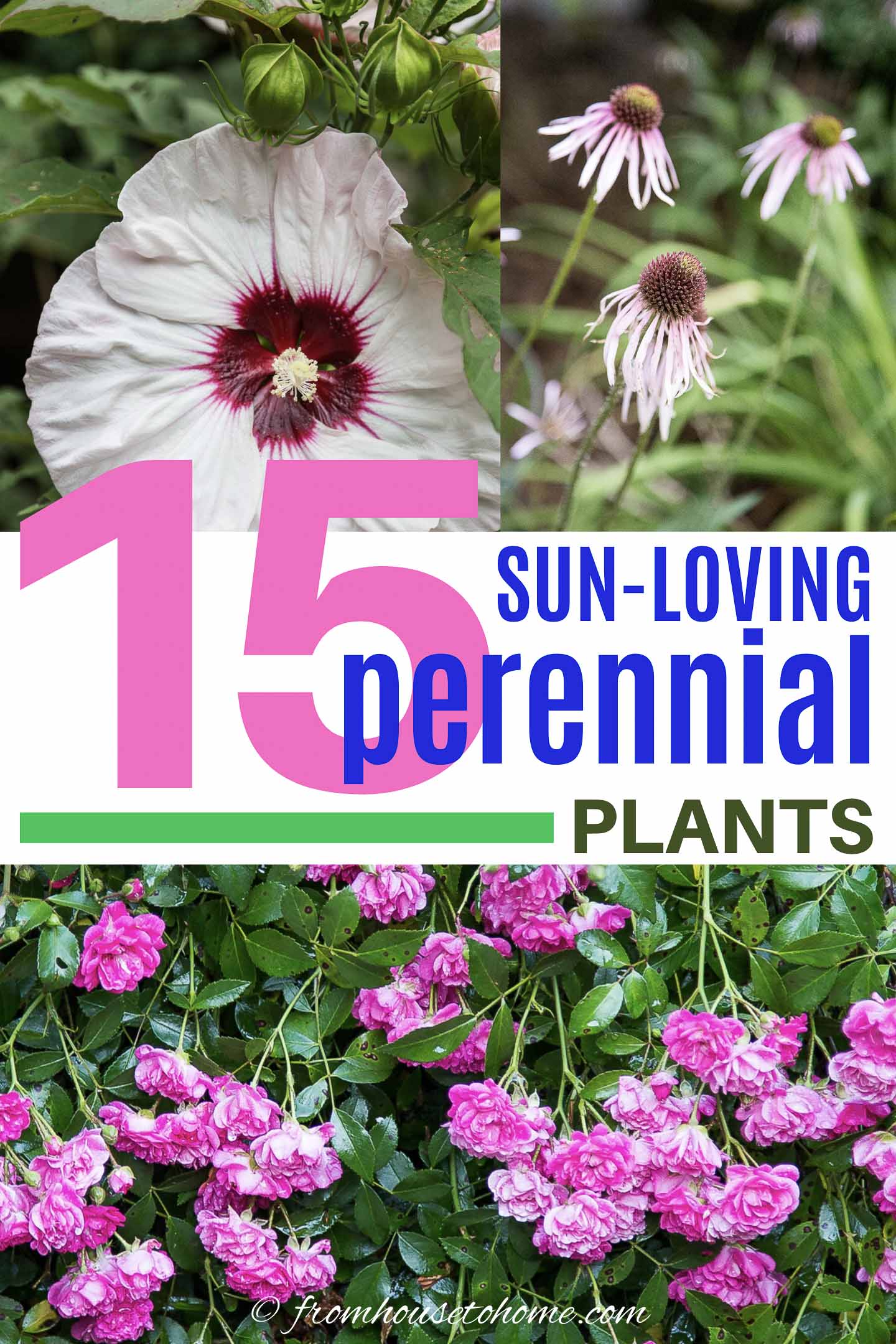
Lately we’ve been talking a lot about perennials that grow well in the shade and part shade.
However, if you live further south like I do (in South Carolina), it seems like almost anything will grow in part shade. The troublesome areas are actually in full sun.
It is just so hot in the summer that many plants don’t do well, even if they are deemed to be full sun perennials elsewhere.
After a lot of trial and error, I have come up with this list of my favorite perennial plants that thrive in full sun, are low maintenance, and still look good in the middle of the summer.
1 | Black-eyed Susan (Rudbeckia)
This post may contain affiliate links. We make a small commission if you buy the products from these links (at no extra cost to you). As an Amazon Associate, I earn from qualifying purchases. But we only recommend products we would use ourselves. For more information, click here to see our disclosures.
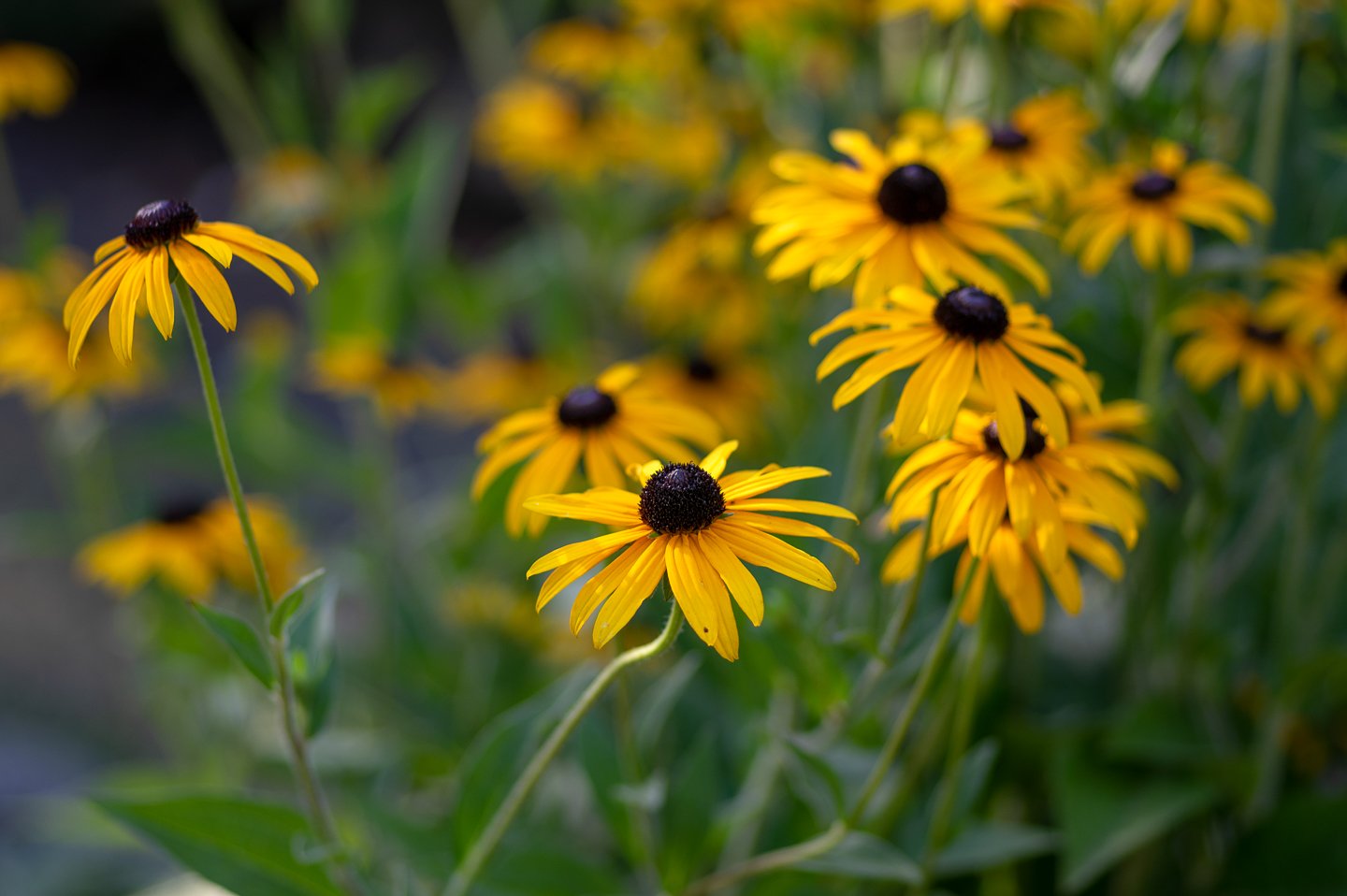
Zones: 4 to 9
Bloom Time: Late spring to early fall
Height: 1′ to 3′ (depending on the variety)
Spread: 1′ to 2′
Black-eyed Susan is a native perennial that prefers evenly-moist, well-drained soil, but is quite heat and drought tolerant once established.
With their long bloom time and brightly-colored yellow flowers, they are a beautiful addition to the back of your garden bed.
Deadheading old flowers will encourage re-blooming.
2 | Russian Sage (Perovskia atriplicifolia)
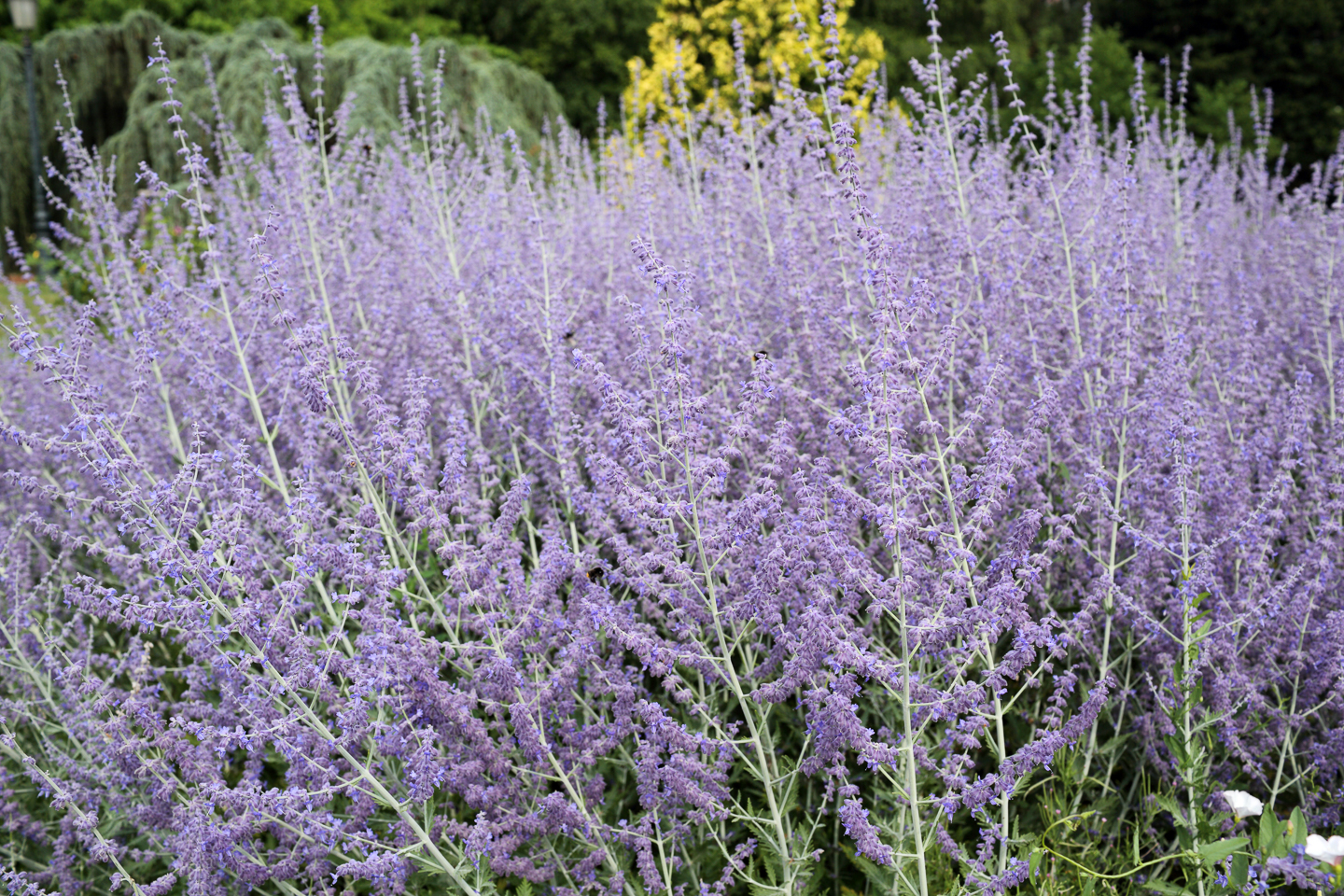
Zones: 4 to 9
Bloom Time: Early summer to fall
Height: 2′ to 4′
Spread: 2′ to 4′
With its gray-green foliage and beautiful purple flowers, Russian Sage is one of my favorite full sun perennials.
These perennial plants are deer resistant, drought tolerant, and they attracts bees, butterflies and hummingbirds.
They also grow in pretty much any soil type and require absolutely no maintenance.
It doesn’t need fertilizing, deadheading or dividing.
You can cut it shorter in the spring to control its size if you want to, but otherwise that’s not necessary, either.
3 | Sedum ‘Autumn Joy’
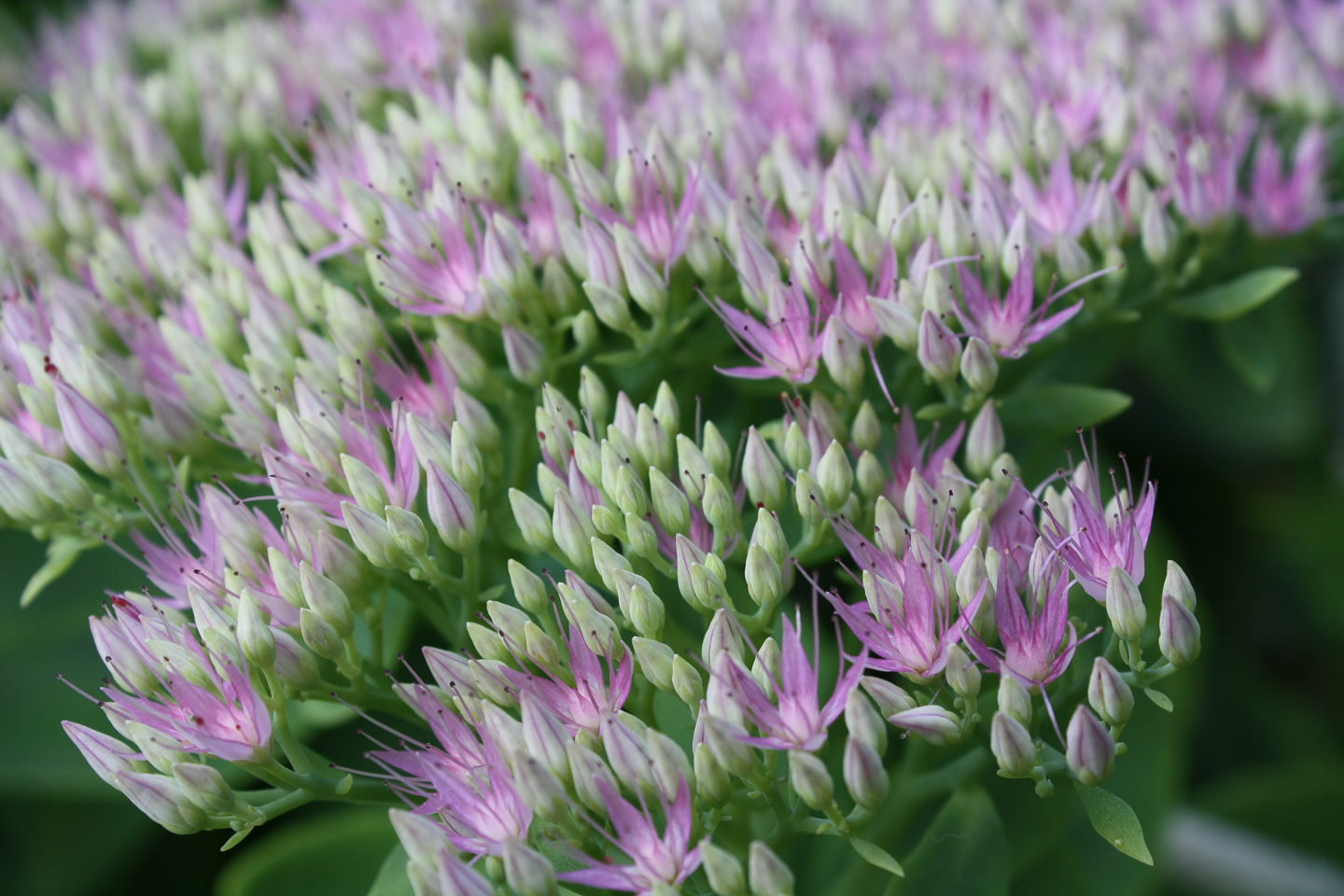
Zones: 3 to 8
Bloom Time: Late summer to fall
Height: 18″ to 24″
Spread: 18″ to 24″
Sedum ‘Autumn Joy’ is a succulent that stores water in its leaves and prefers dry, poorly fertilized soil.
The flowers start out pink and turn to bronze as the weather gets cooler.
Since it is one of the last perennials to bloom before winter, it’s a great late-season nectar source for butterflies and bees.
4 | Creeping Phlox (Phlox subulata)
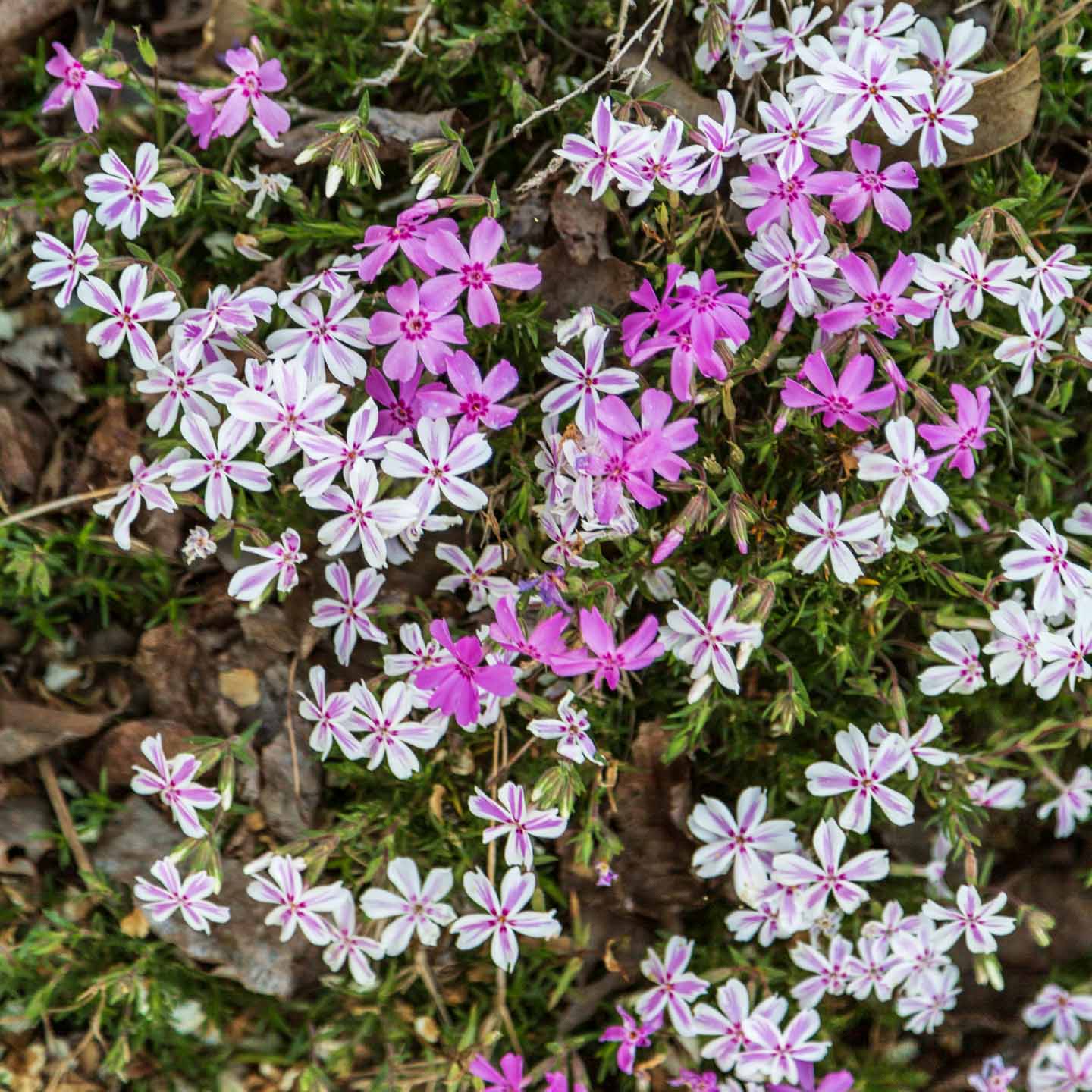
Zones: 3 to 9
Bloom time: Early spring
Height: 6″
Spread: 2′ to 3′
Next on my list of full sun perennials is Creeping Phlox or Moss Phlox (Phlox subulata).
It is a low-growing ground cover that is easy to grow and looks beautiful at the front of your sunny border or spilling over stones in a rock garden.
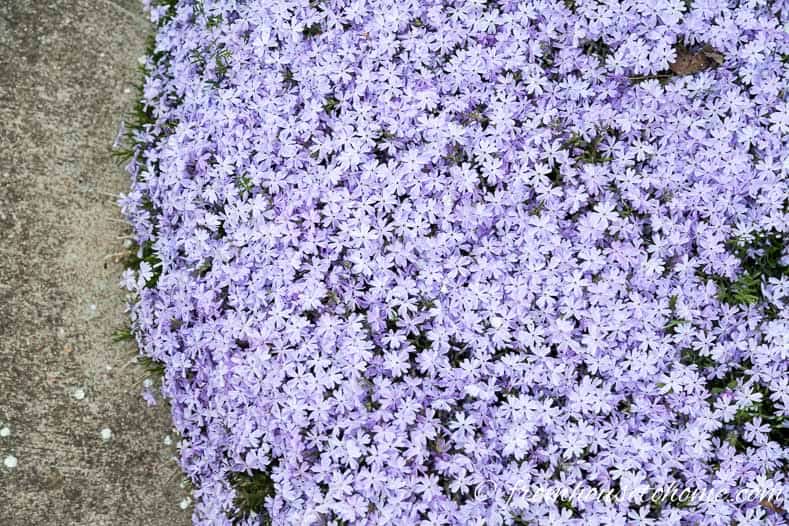
Once it gets going, it will cover the area with pretty white, blue, pink or purple flowers in the spring, and looks beautiful with daffodils or tulips growing through it.
5 | Daffodils (Narcissus)
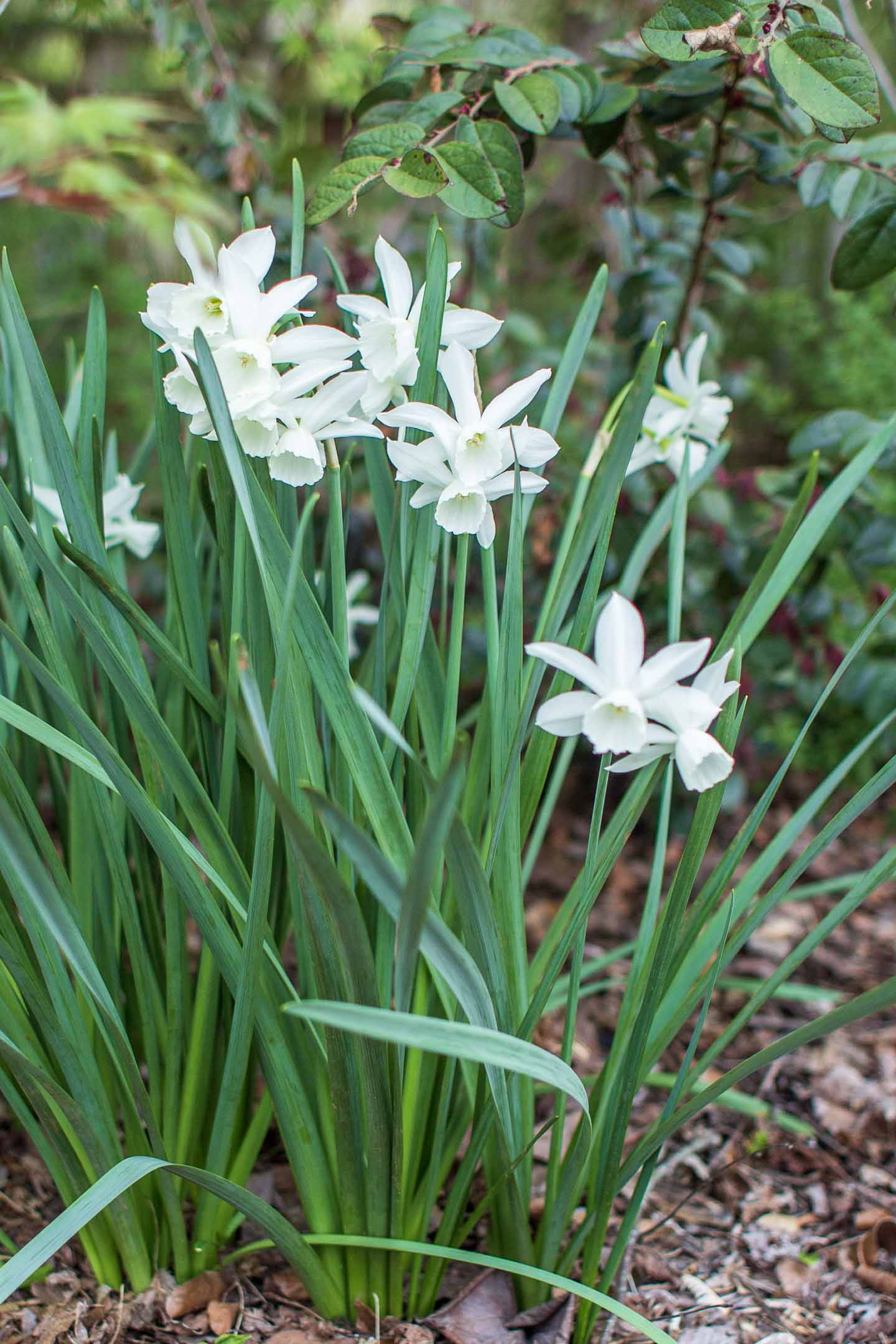
Zones: 4 to 9
Bloom Time: Spring
Height: 18″ to 24″
Spread: 12″
Speaking of spring bulbs, daffodils are the next low maintenance plants on my list.
Once you plant them, they don’t require any work at all.
They come back for many years and bloom reliably (unlike many tulips).
Most varieties will naturalize as well, so you’ll get more of them over time…but not in a bad way.
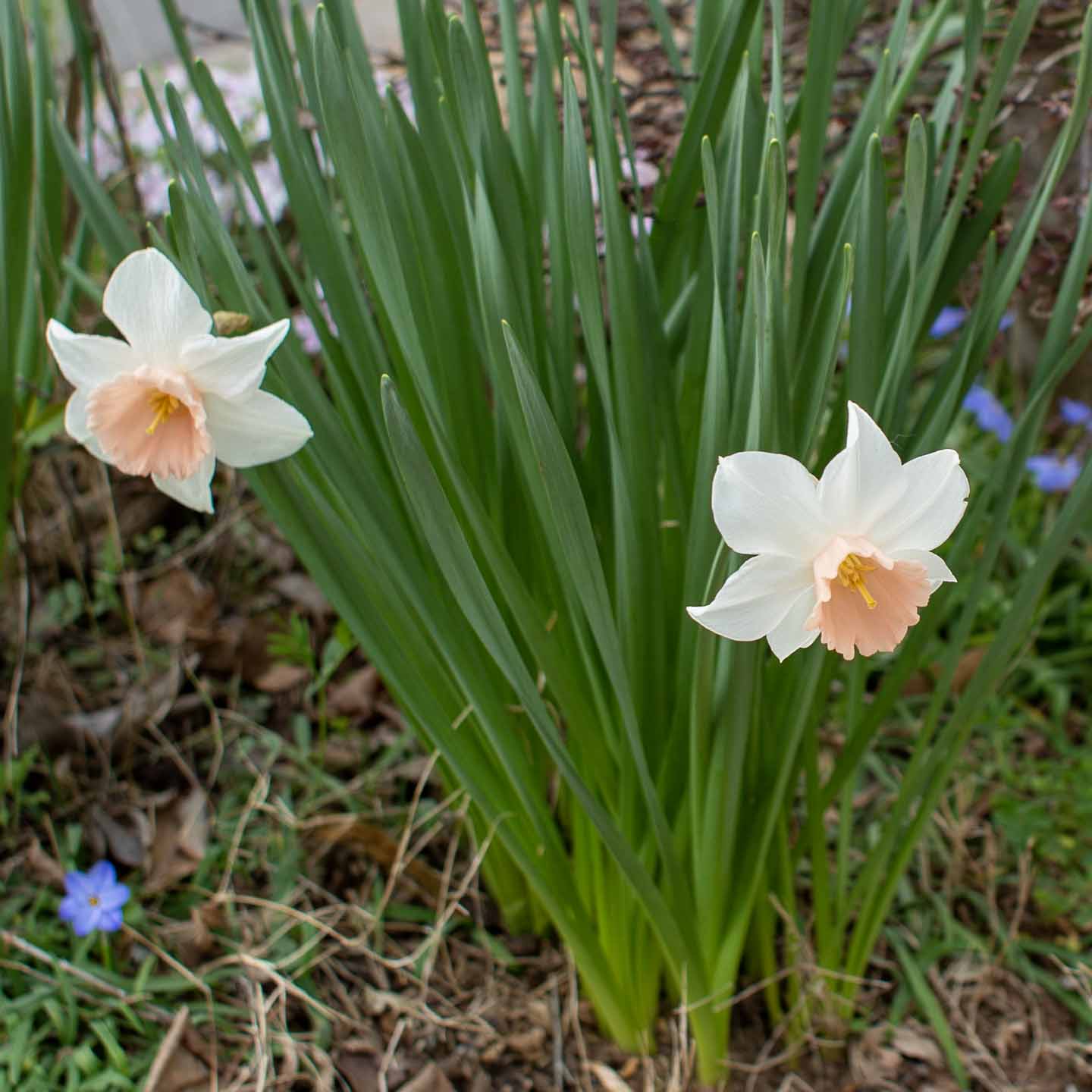
If you’re not a big fan of the traditional yellow flowers, look for white or pink varieties (like the picture above). They’re really more coral than true pink but still a pretty color.
Learn more about planting bulbs HERE.
6 | Catmint (Nepeta ×faassenii)
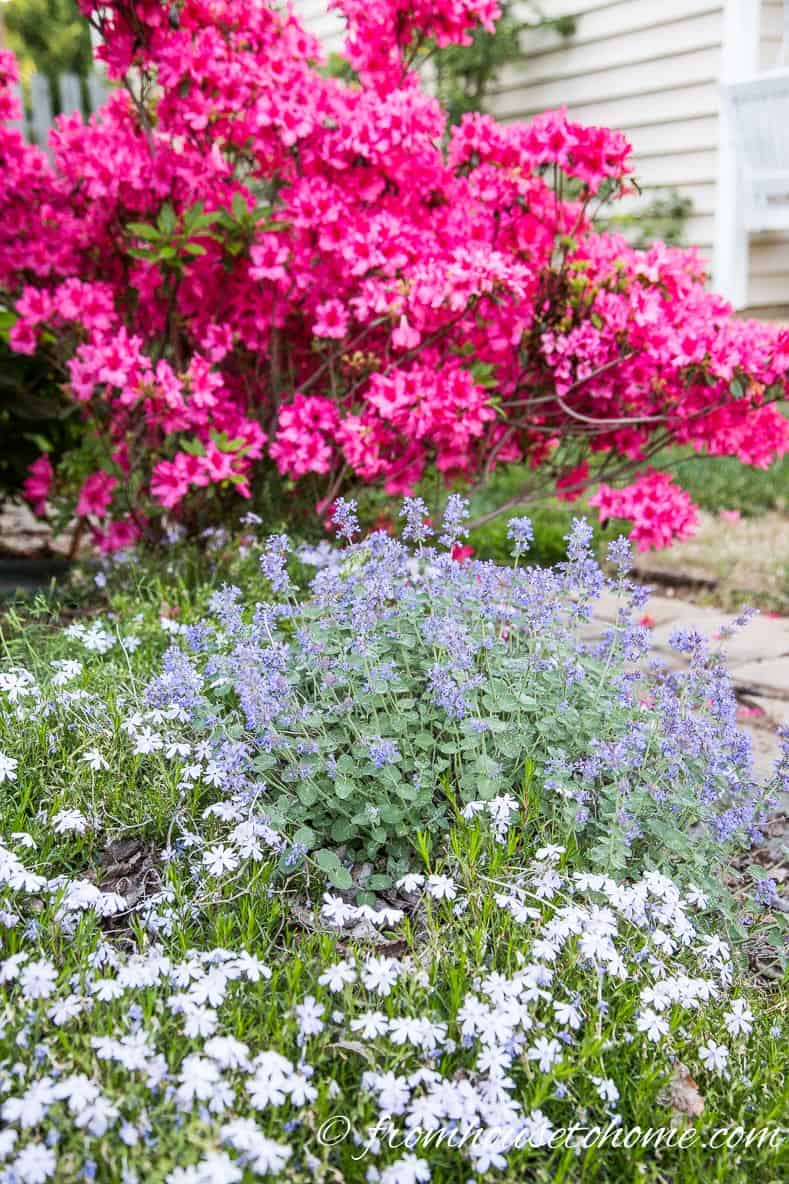
Zones: 3 to 9
Bloom Time: Late spring to summer
Height: 9″ to 18″
Spread: 18″ to 36″
Catmint (Nepeta) is a compact plant (about 12″ high) with silvery leaves and purple-blue flowers.
It blooms in the mid to late spring and looks beautiful in combination with other spring-flowering plants (such as the native azalea and Phlox subulata in this picture).
The only word of caution? True to its name, cats do love to roll in it…so the plant may get squished if your neighborhood kitty stops by (it doesn’t seem to hurt the plant).
7 | Lavender
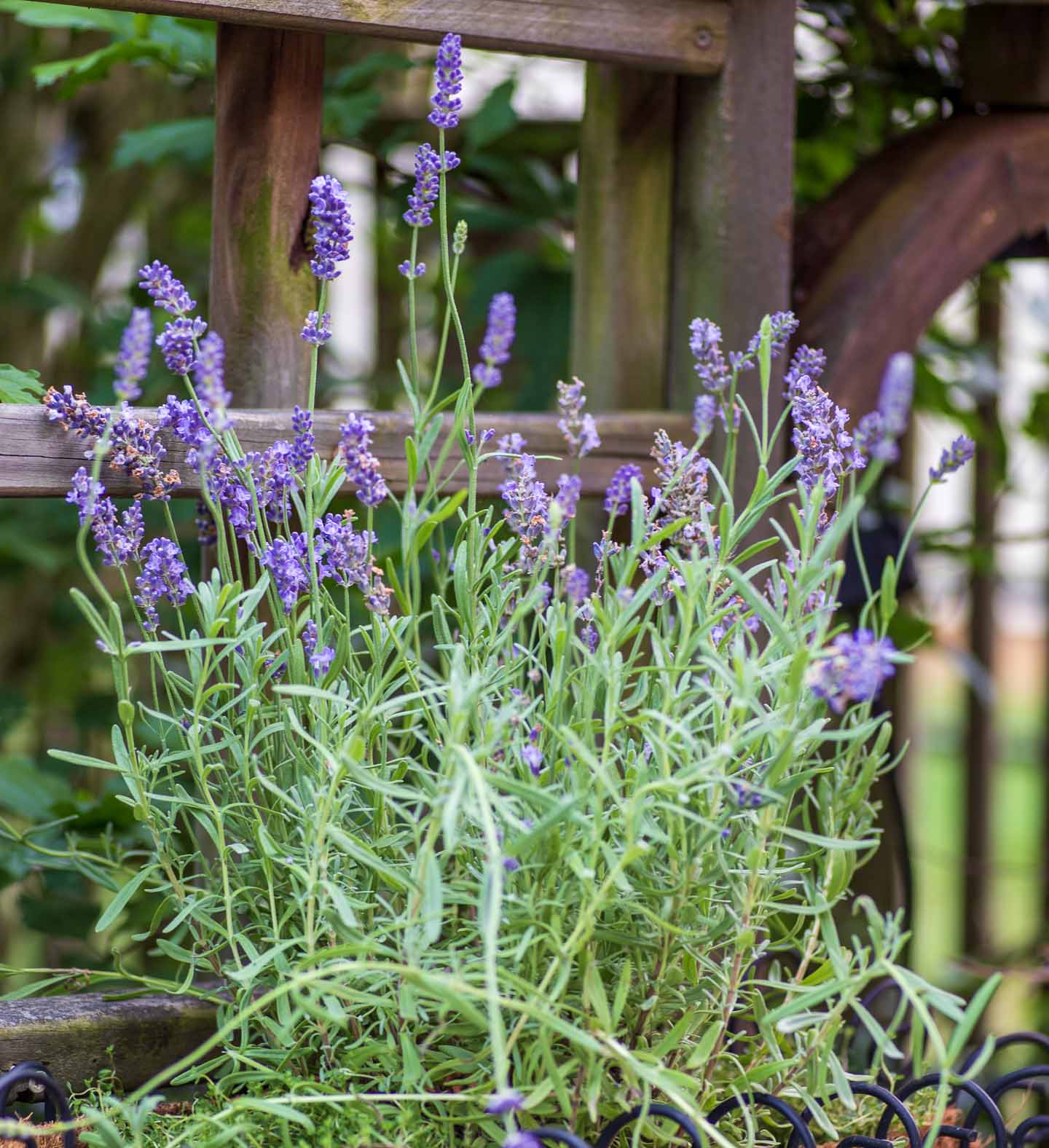
Zones: 5 to 8
Bloom Time: Early to mid summer
Height: 12″ to 24″
Spread: 12″ to 24″
Lavender forms dense clumps of blue-green foliage.
It is drought tolerant and blooms in early to mid summer with lovely blue/purple, fragrant flower spikes.
Lavender can take a year or two to get going. But once it has, it really doesn’t take any work at all.
Shear off the flowers when it is finished blooming to keep the plant tidy. But be careful about trimming it back in the spring…cutting into the woody stem can kill it.
8 | Daylily (Hemerocallis)
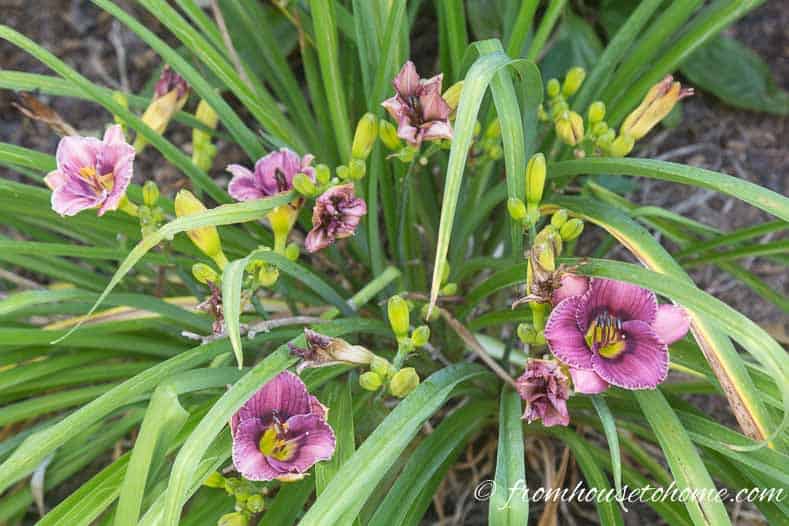
Zones: 3 to 9
Bloom Time: Late spring and summer
Height: 1′ to 4′
Spread: 2′ to 4′
Daylilies (Hemerocallis) really are a “plant and forget” flower which is why they are one of my favorite full sun perennials.
They generally bloom in late spring and summer, but it can vary depending on the variety.
As the name suggests, each bloom only lasts a day. But as you can see, one plant can grow a lot of buds!
Some of the newer varieties also re-bloom.
9 | Shasta Daisies (Leucanthemum x superbum)
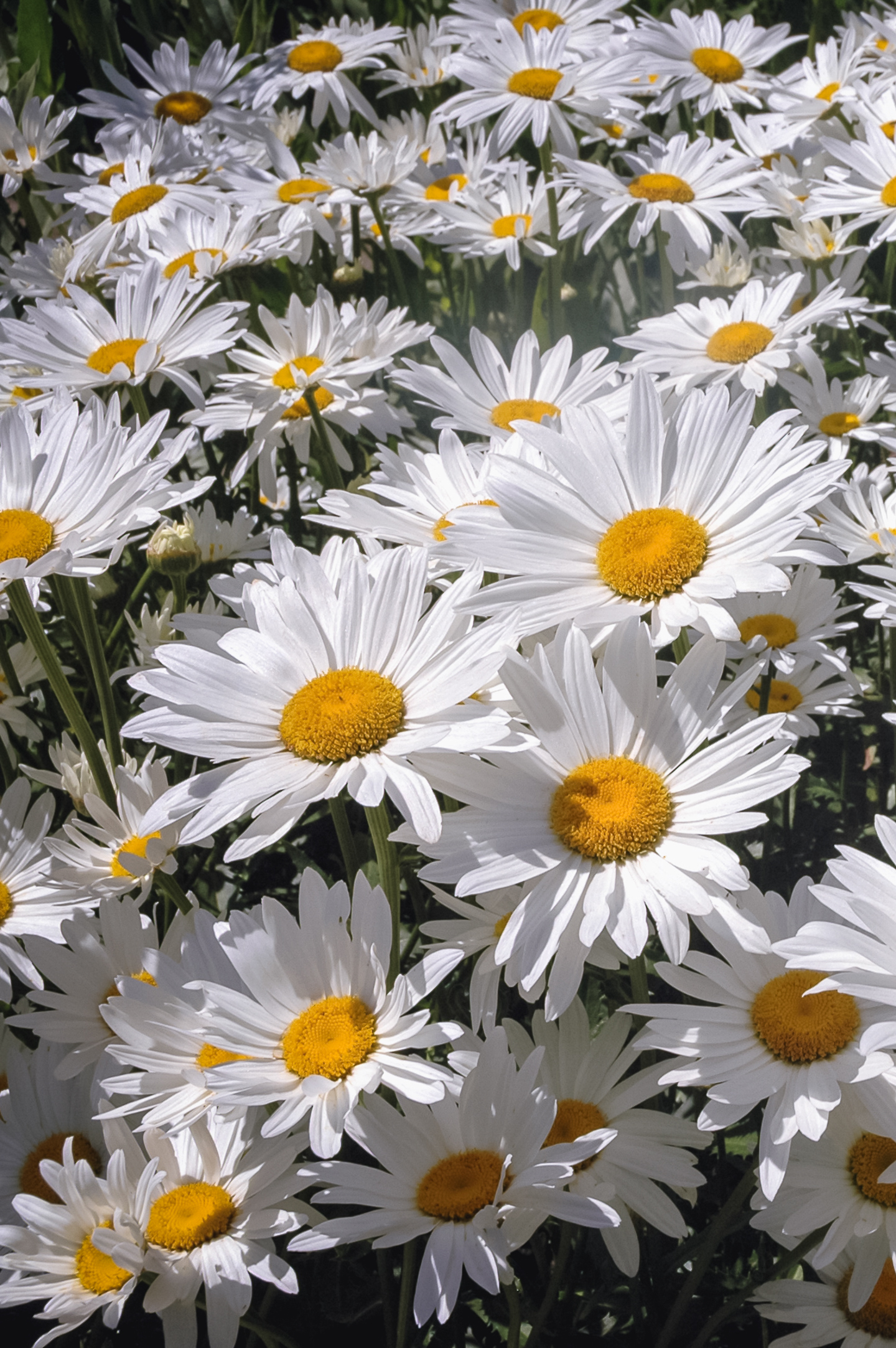
Zones: 4 to 9
Bloom Time: Summer
Height: 2′ to 3′
Spread: 1′ to 2′
If you want a flower to add some cheeriness to your full sun garden all summer long, Shasta daisies are the way to go.
Although they spread by rhizomes, they aren’t invasive (like some roadside daisies can be) and they don’t need a lot of care or fertilizer to keep them growing.
In fact, soil that is too rich will cause more leaves and fewer blooms.
These flowers also attract butterflies and are deer and rabbit resistant.
Grow them from seed or buy live plants.
10 | Coneflower (Echinacea )
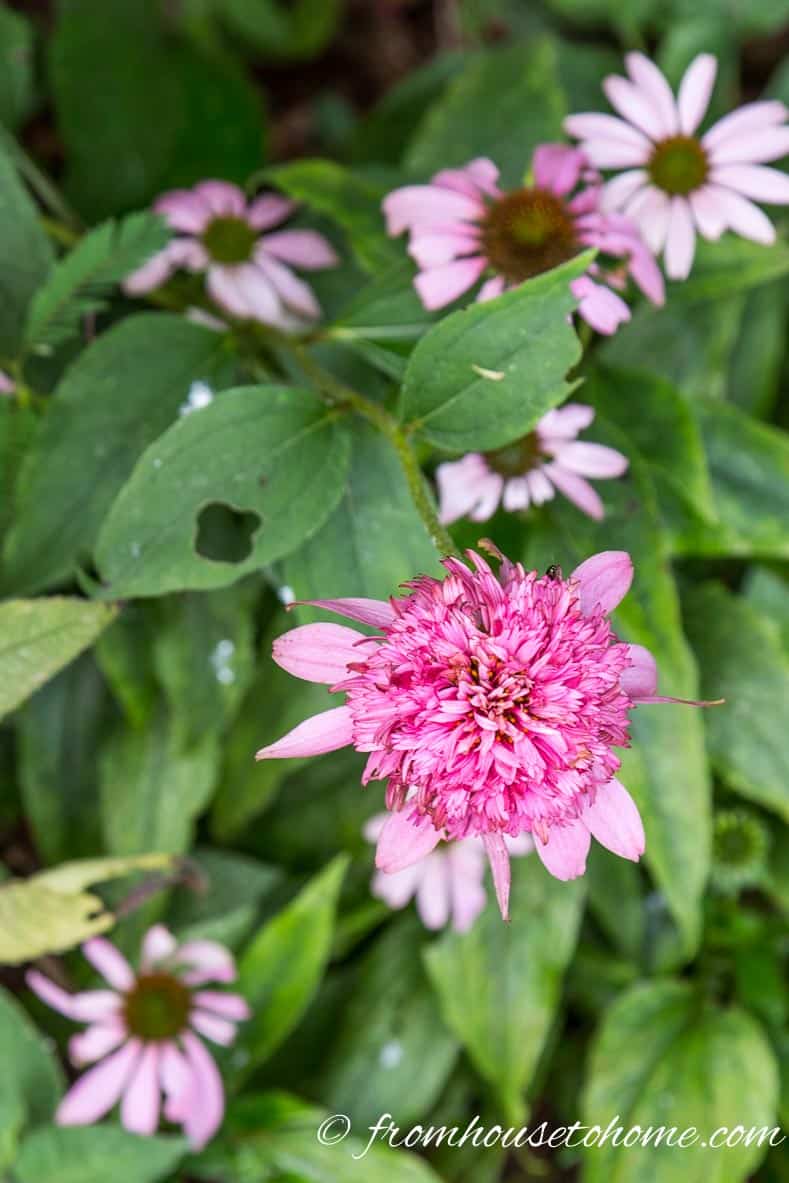
Zones: 3 to 9
Bloom Time: Summer
Height: 2′ to 4′
Spread: 2′ to 3′
Like the Shasta Daisies, Coneflower (Echinacea) is another easy to grow perennial that blooms all summer long.
It has daisy shaped flowers and is available in so many different colors and flower forms that you are sure to find one (or more) you like.
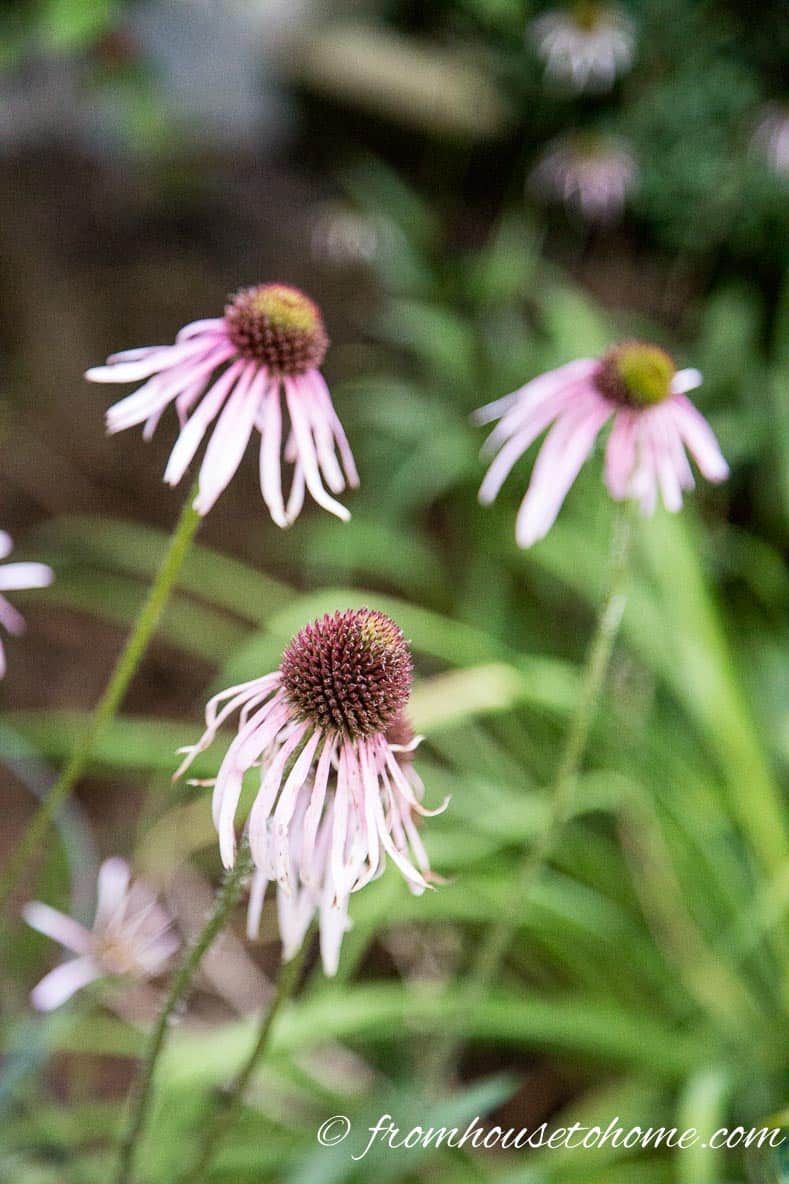
One note: Echinacea do tend to self seed, so you may need to pull out a few plants if you find them growing where you don’t want them.
11 | Polyantha Roses
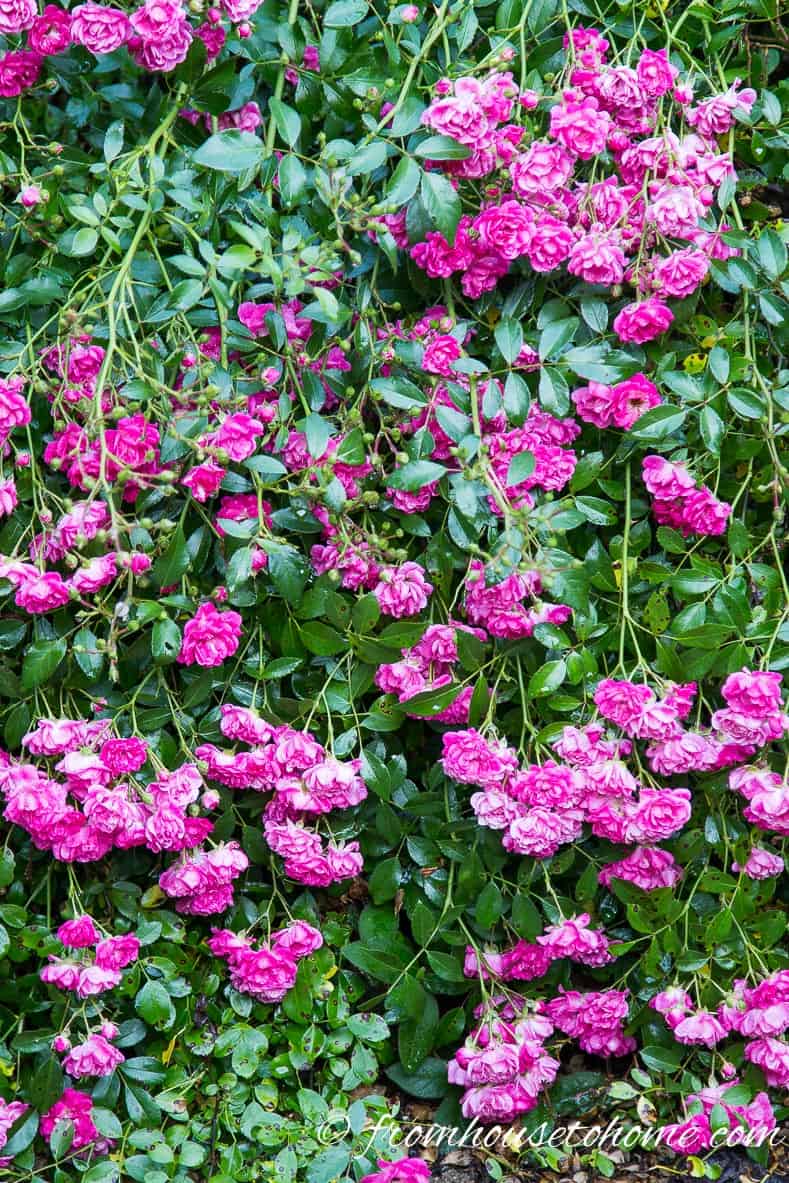
Zones: 4 to 9
Bloom Time: Late spring to fall
Height: 4′ to 6′
Spread: 4′
I love most kinds of roses and they’re all sun loving plants.
However there is only one variety I have grown that I would put in the low maintenance category. And that’s the Polyantha roses.
They are an heirloom variety that grows as a thick bush or climbing plant with many 1″ flowers on every stem.
Polyantha roses are disease resistant and easy to maintain (for a rose).
Just cut out dead branches to thin out the plant. As a bonus, mine bloom all summer long!
12 | Rose Mallow (Hibiscus moscheutos)
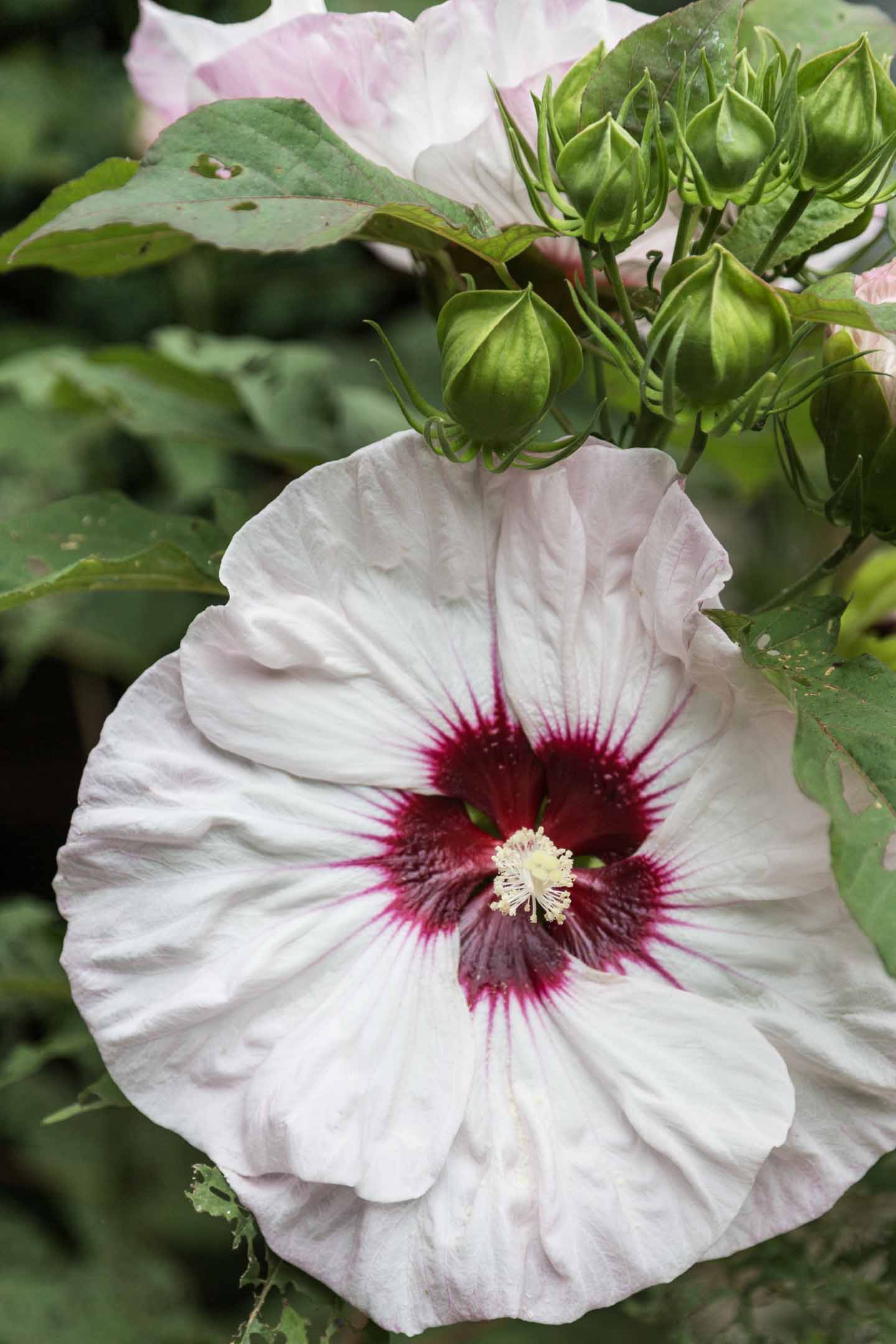
Zones: 4 to 9
Bloom Time: Summer
Height: 3′ to 5′ (depending on the variety)
Spread: 3′ to 5′
Hardy Hibiscus is a native perennial with HUGE blooms that look tropical even though they’re not.
It grows woody stems that look like branches and are a few feet tall. But they die right down to the ground in the winter.
This is one of the last perennials to come up in the spring, so don’t be worried if it seems like it’s not coming back…it just needs a little more time.
13 | Salvia
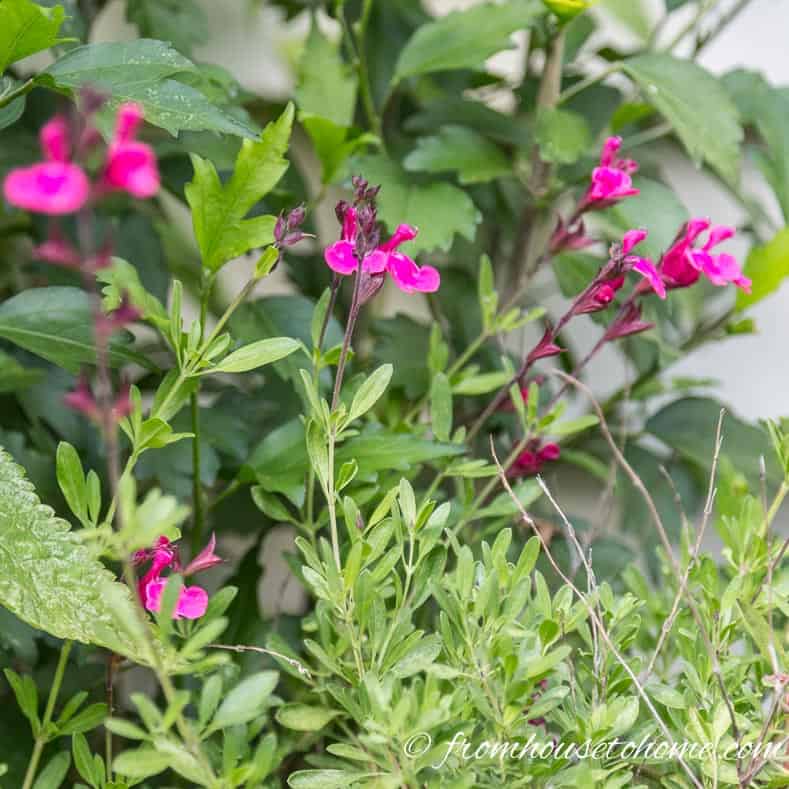
Zones: 5 to 11 (depending on variety)
Bloom Time: Summer
Height: 18″ to 36″
Spread: 18″ to 24″
Salvia is another plant that loves the sun…it seems like the more the better for this plant!
If you trim them back a little when the blooms start to fade, you can get them to rebloom all summer.
Salvia comes in different colors like this fuchsia pink.
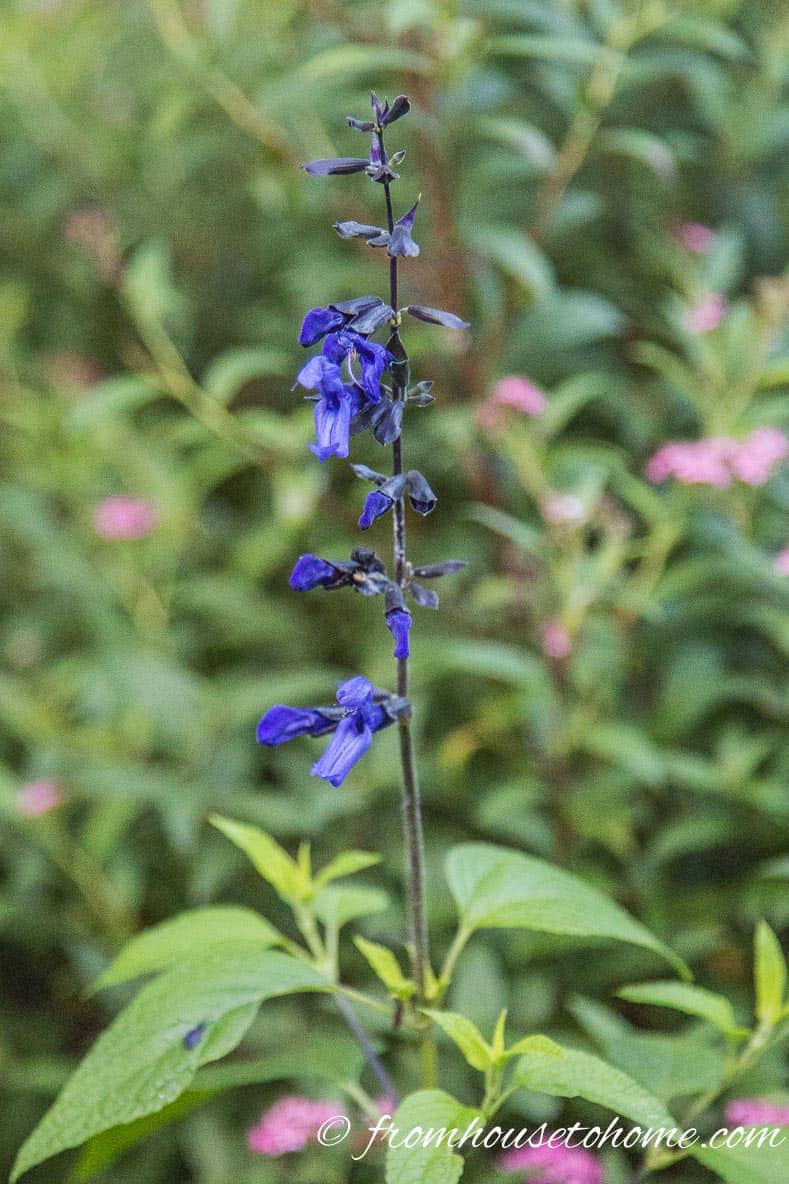
Or ‘Black and Blue’ which has deep blue flowers on black stems (and is really easy to grow from seed).
Make sure to read the tags when you are buying Salvias since they have a wide range of growing zones, and some may be considered annuals in your area.
14 | Bee Balm (Monarda)
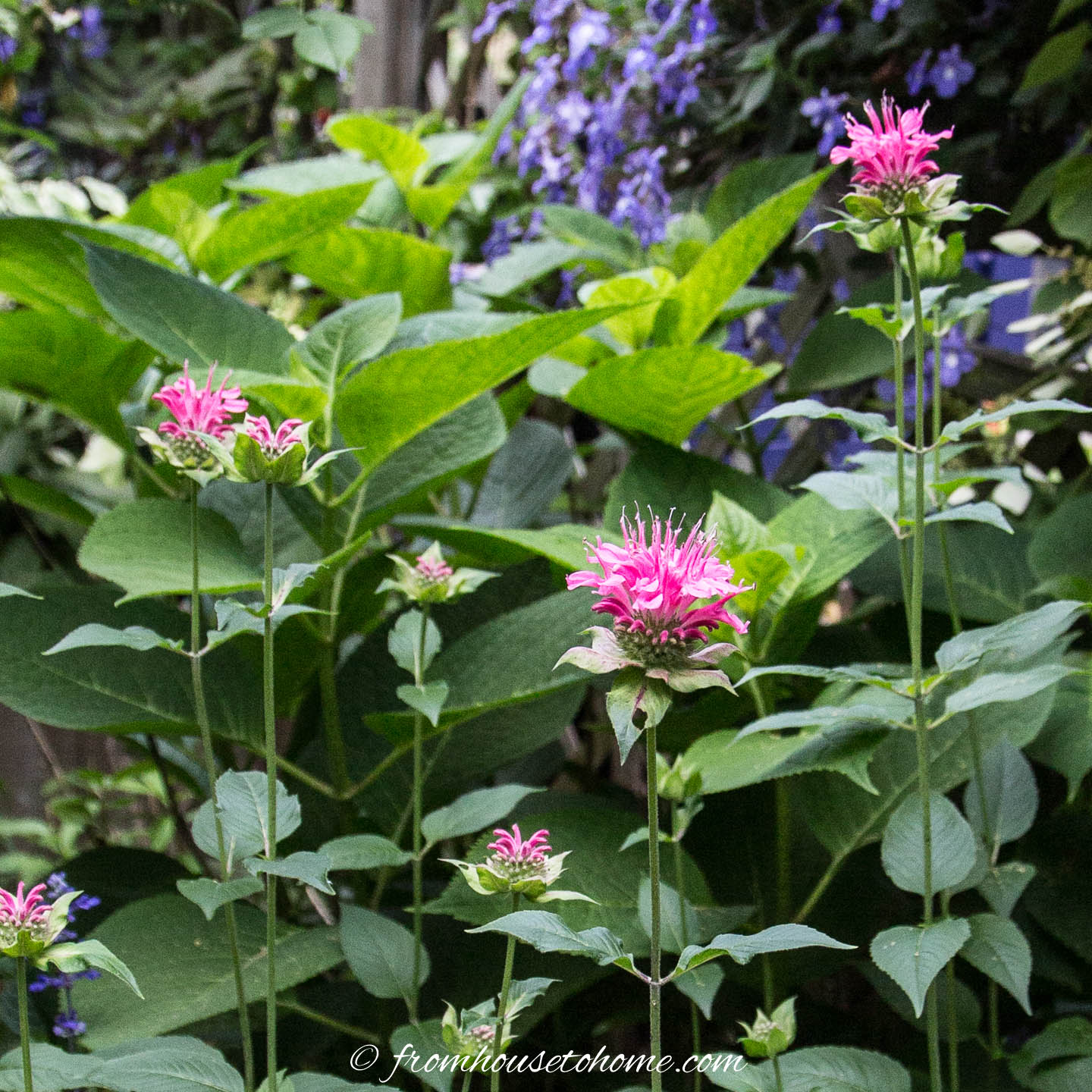
Zones: 3 to 9
Bloom Time: Summer
Height: 24″ to 48″
Spread: 18″ to 24″
Bee Balm (Monarda) is an easy to grow sun loving perennial with pink, white, red or purple blooms.
Because of its brightly colored flowers that have tubular shaped petals, it attracts hummingbirds, butterflies and bees. And its seed heads provide food for the birds in the fall and winter.
Deadhead the flowers after the first round of blooms to encourage them to re-bloom later in the summer.
Bee Balm needs good air circulation to prevent it from getting powdery mildew (which doesn’t usually kill the plant but doesn’t look that great).
15 | Pink Muhly Grass (Muhlenbergia)
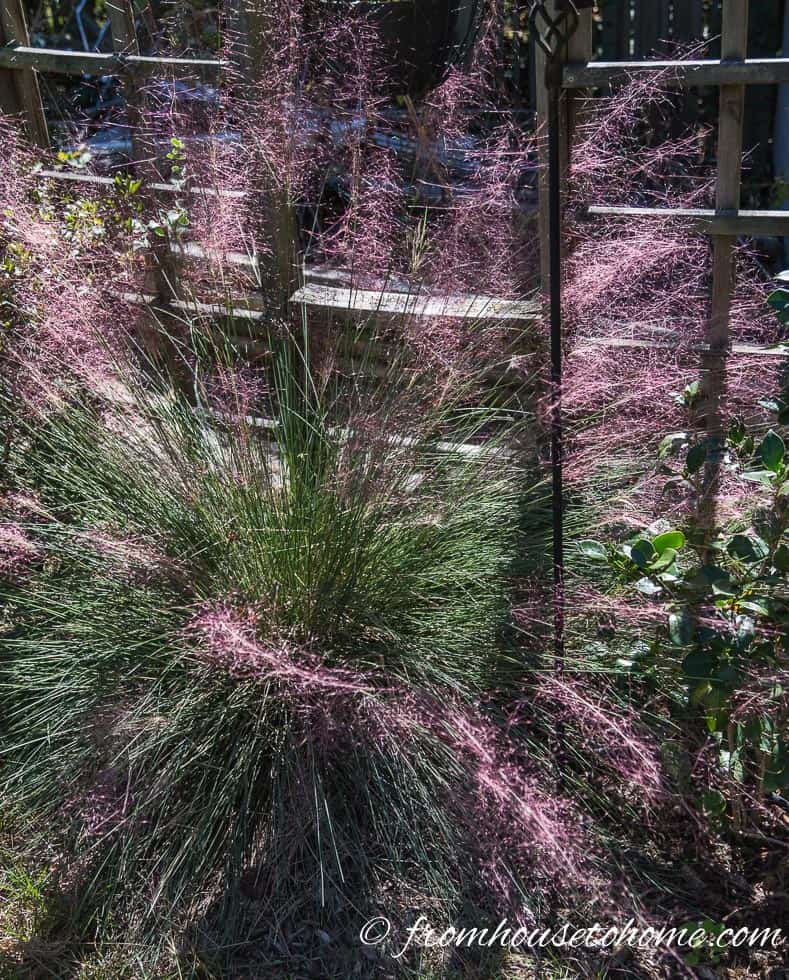
Zones: 5 to 9
Bloom Time: Late Summer to Fall
Height: 3′ to 4′ tall
Spread: 3′ to 4′
Okay, technically this isn’t a flower, it’s an ornamental grass.
But with its pink plumes in the fall, Pink Muhly grass is just so pretty I had to include it.
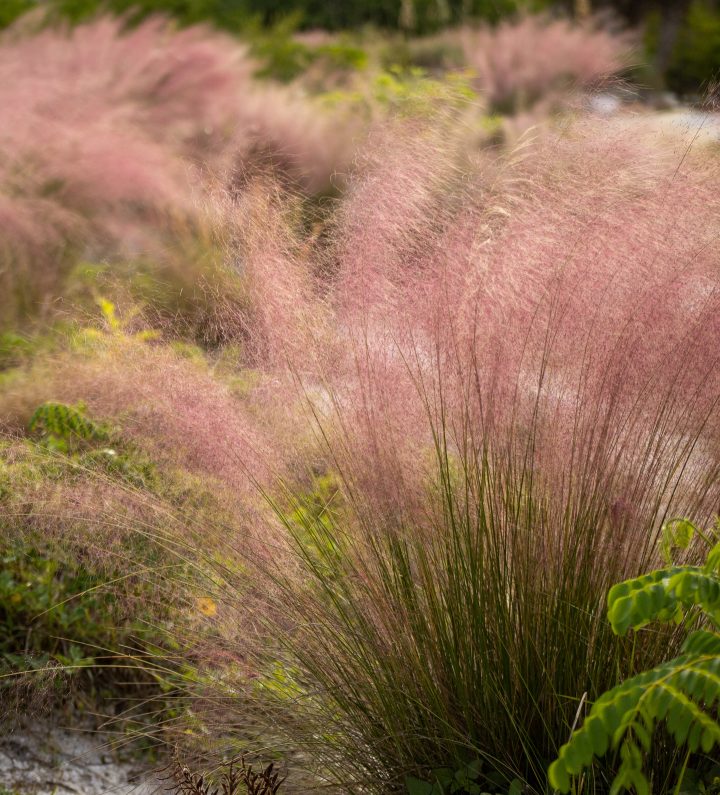
In late summer, it develops airy pink plumes that almost seem to glow in the sun.
It’s also not as big or as invasive as some of the other ornamental grasses, which makes it a great border plant.
16 | Red Hot Poker (Kniphofia)
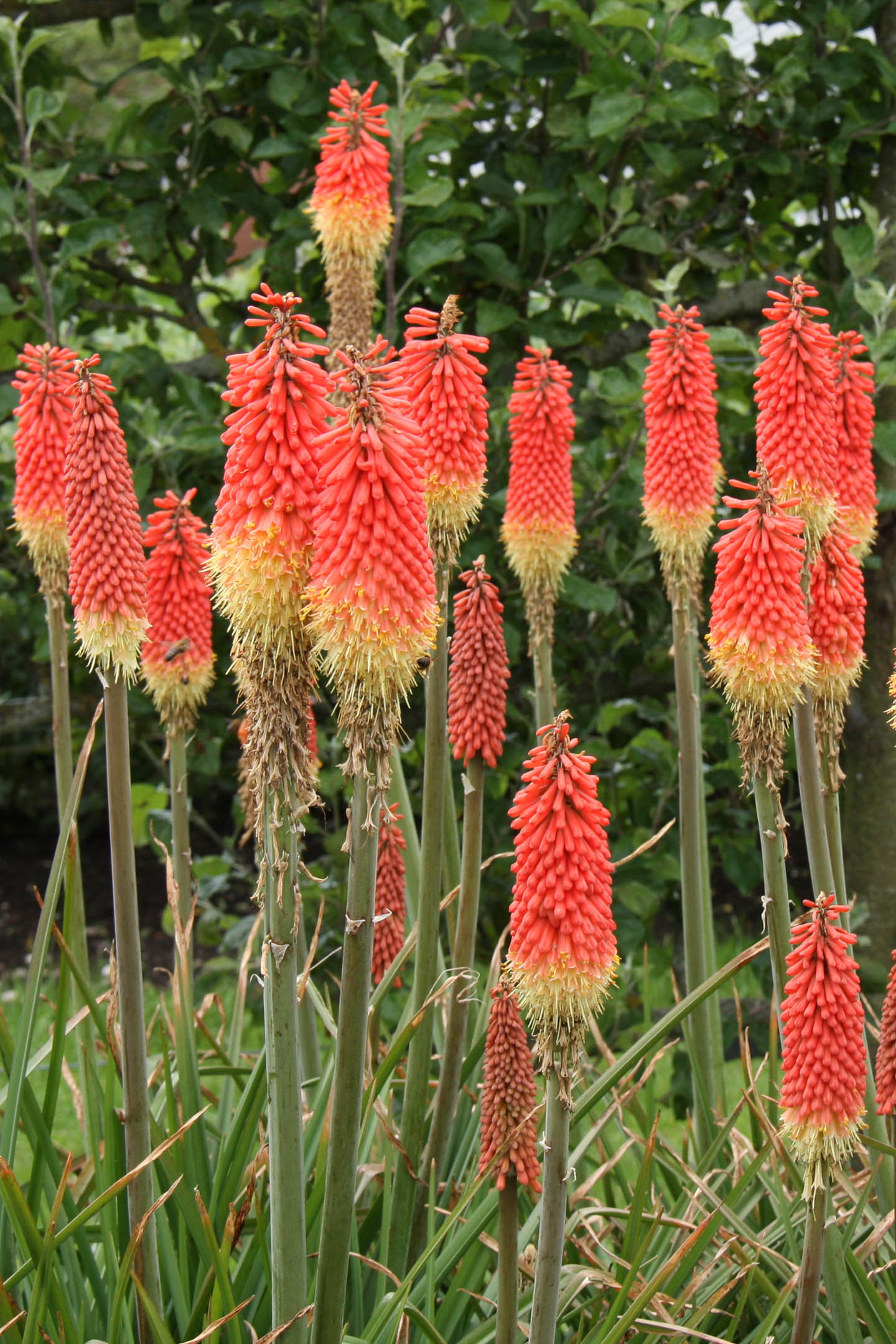
Zones: 4 to 9
Bloom Time: Summer
Height: 16″ to 48″ (depending on the variety)
Spread: 16″ to 20″
Red hot poker (Kniphofia) has flower spikes in red or orange and yellow that light up the garden all summer long.
With their long stalks and interesting blooms, they make great cut flowers.
They’re also drought-tolerant, deer-resistant, and rabbit-resistant. But the hummingbirds and butterflies love them!
And there you have it. That’s my list of easy to maintain full sun perennials that will thrive all summer long, even in the south!
Other full sun plants you might like
- Best Perennials For A Full Sun Cutting Garden
- Evergreen Shrubs for Sun
- Best New Perennials For Your Garden
Do you have other suggestions for low maintenance full sun perennials? Tell us in the section below.
Pin It So You Don't Forget It!
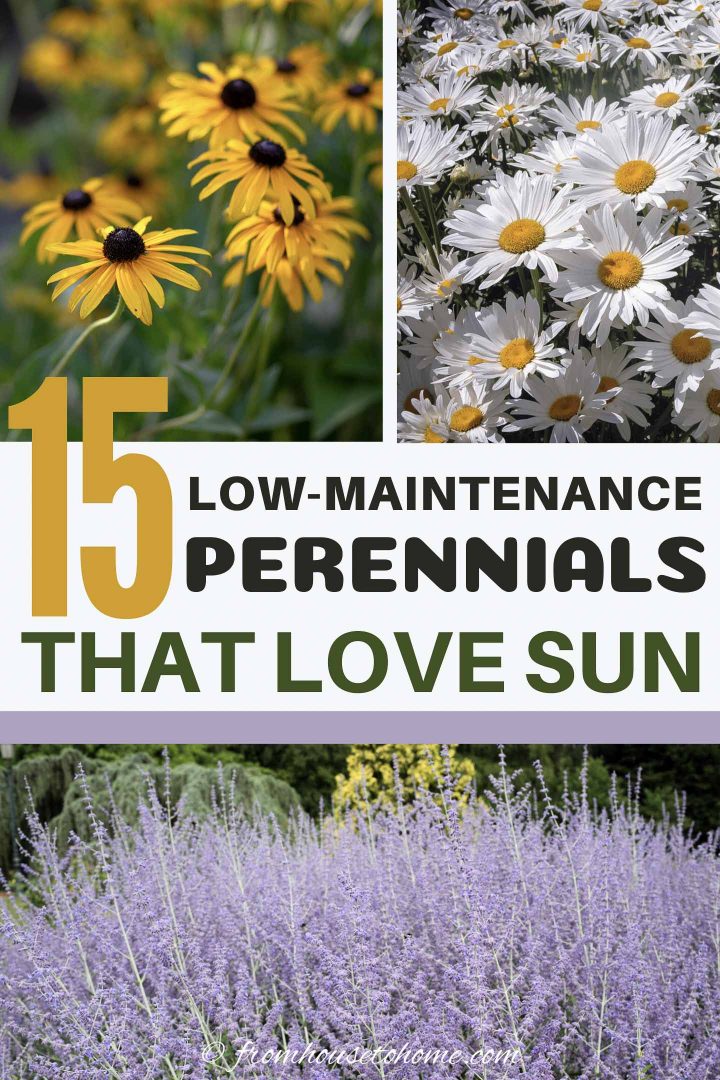
This post was originally published on April 12, 2020 but was updated with new content on April 13, 2024.

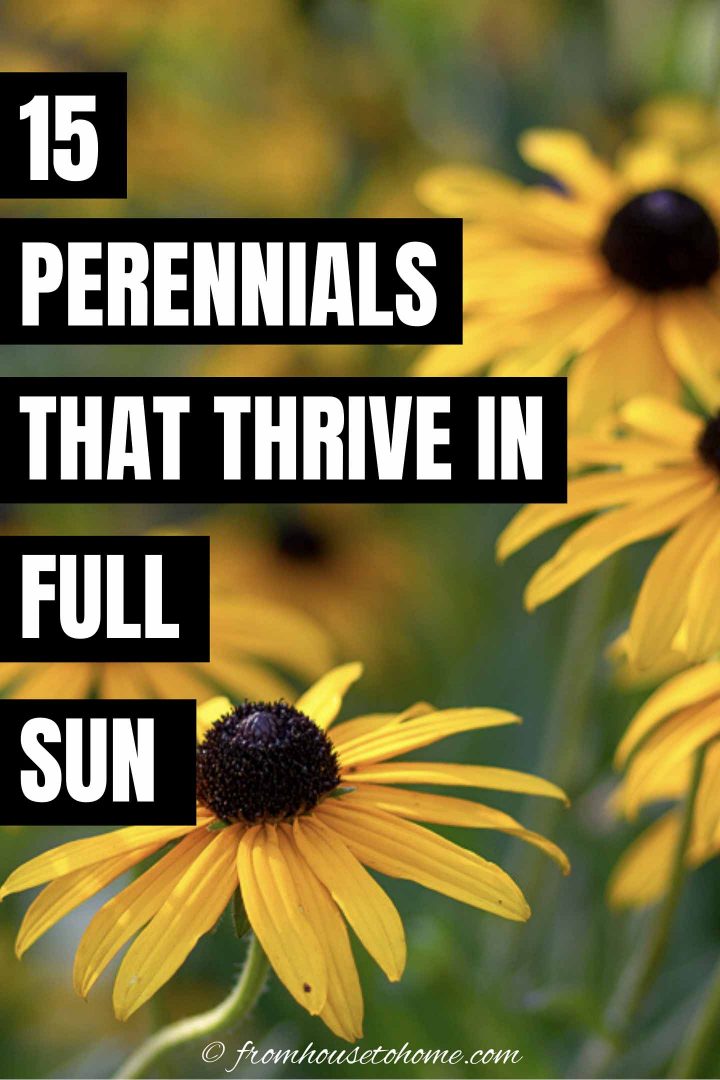
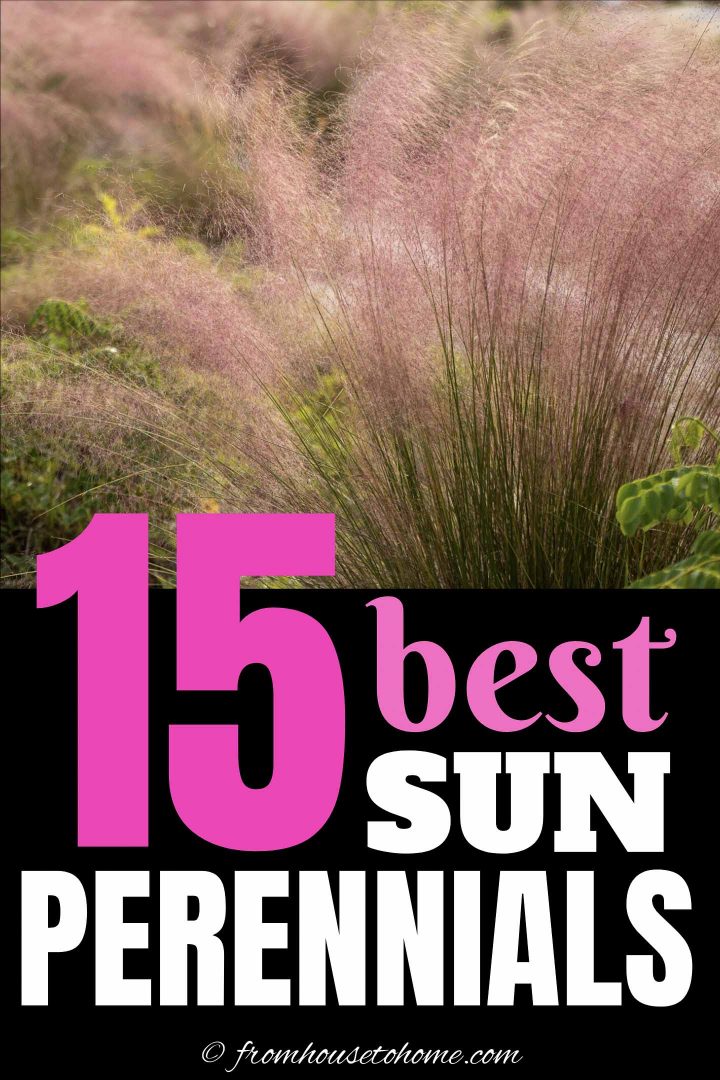
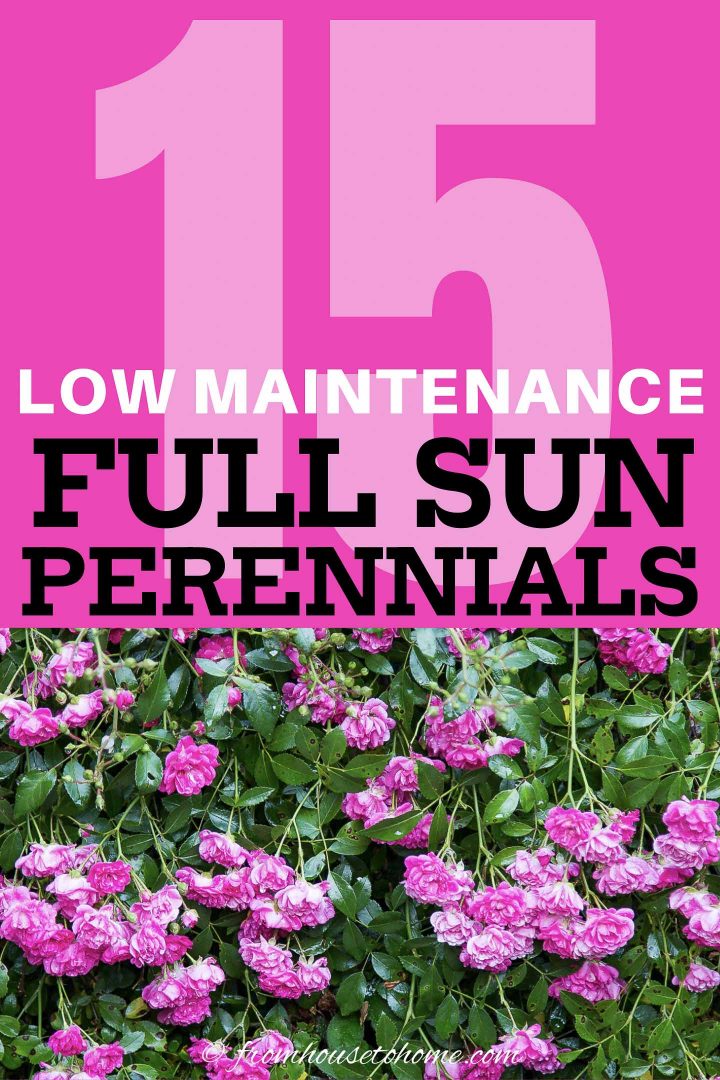
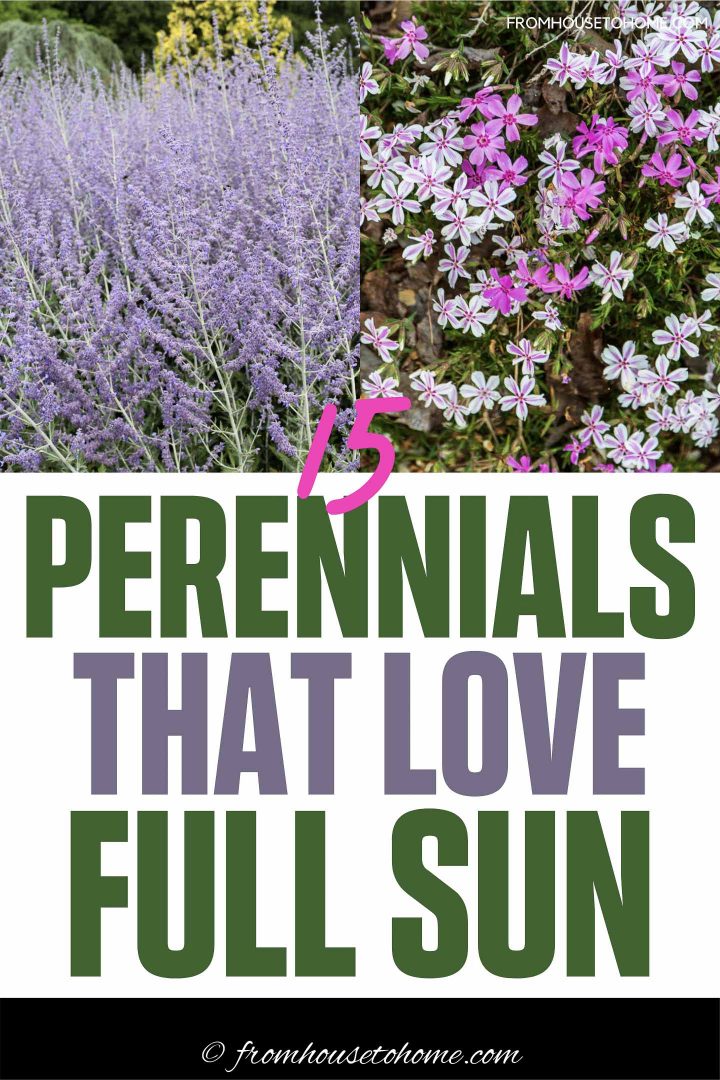
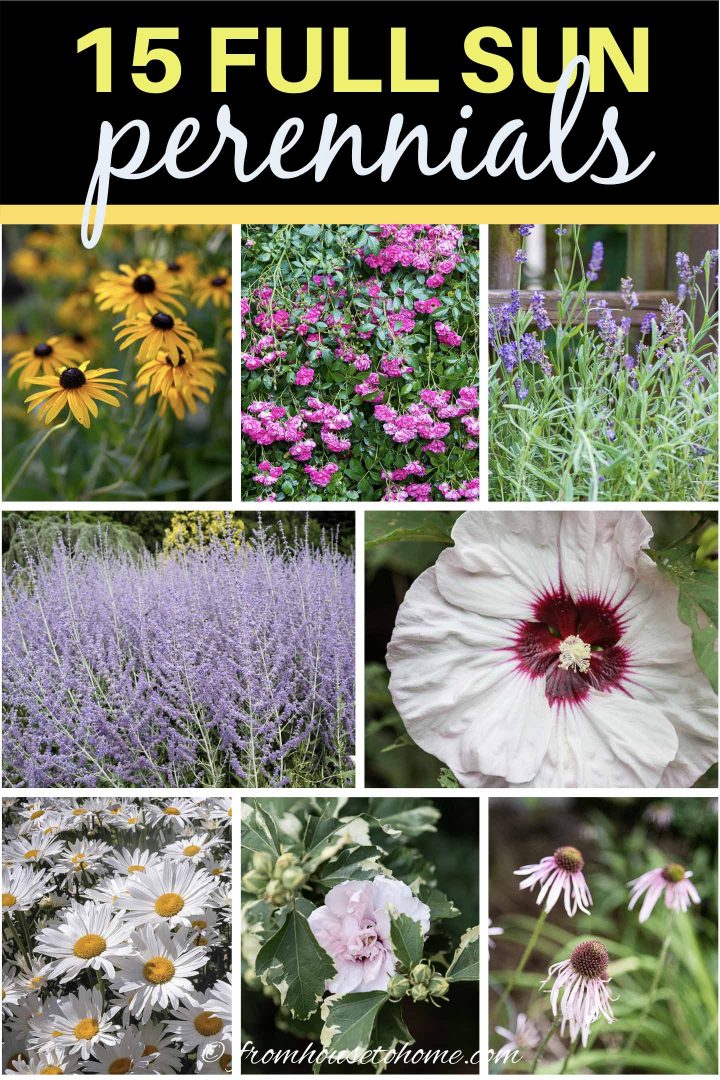
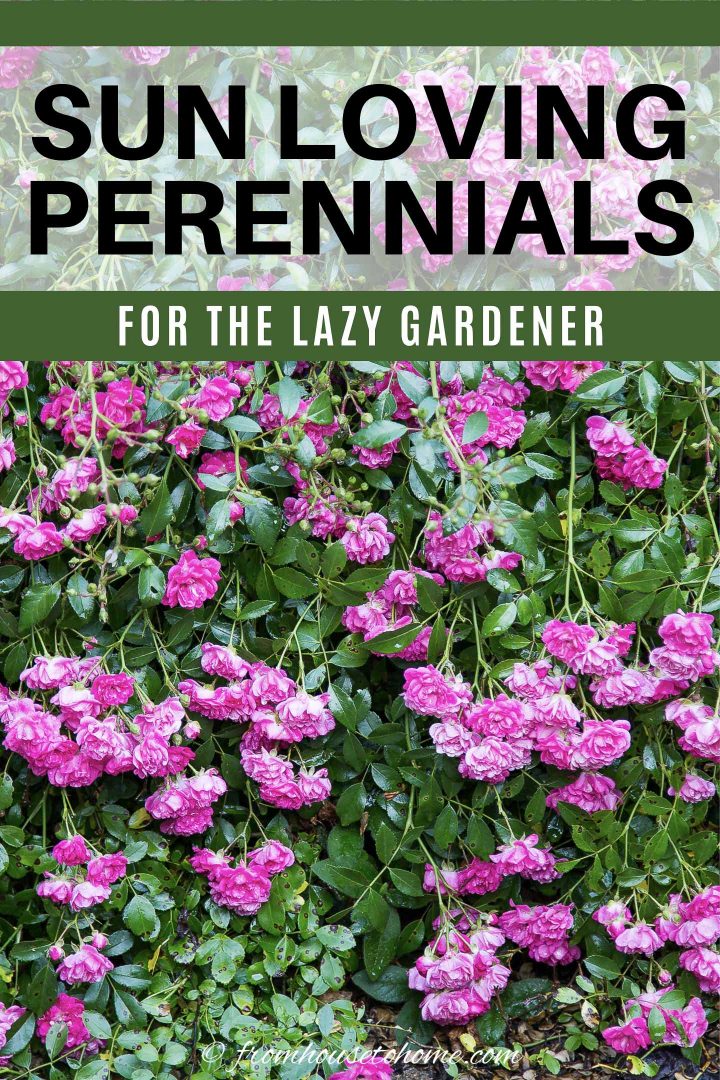
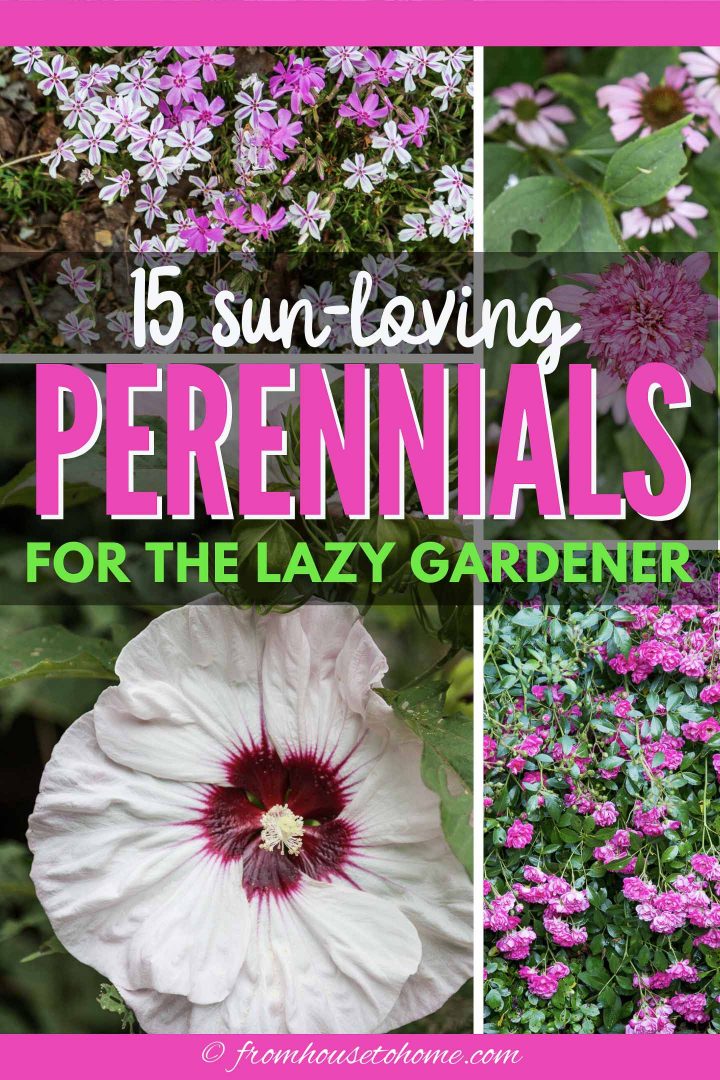
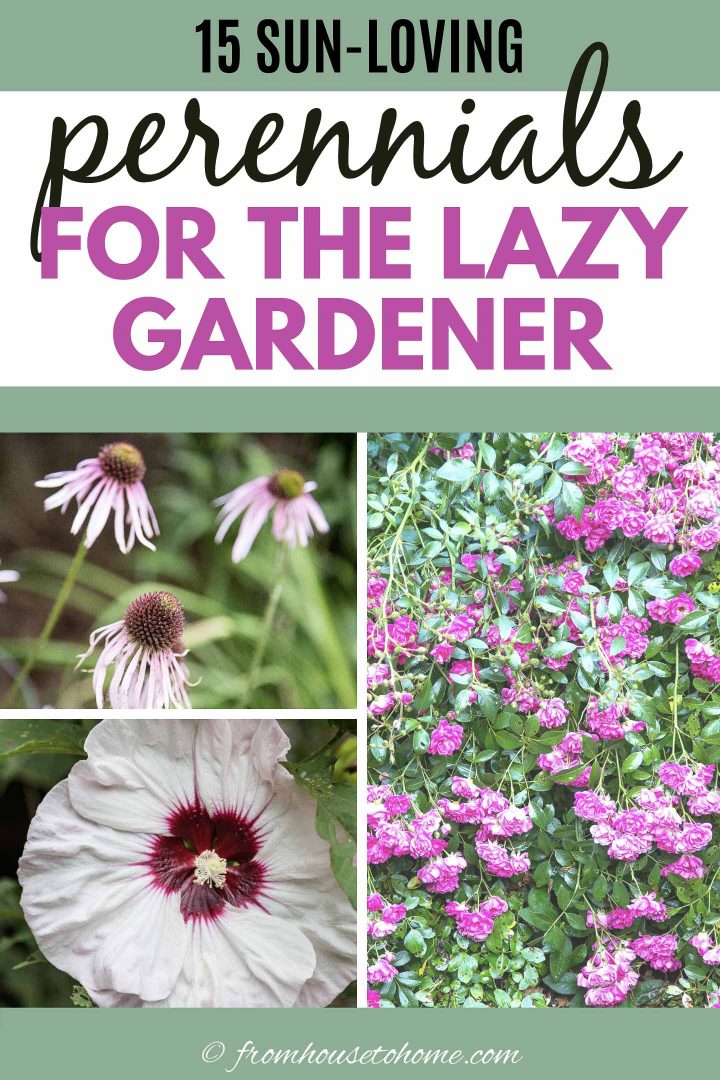
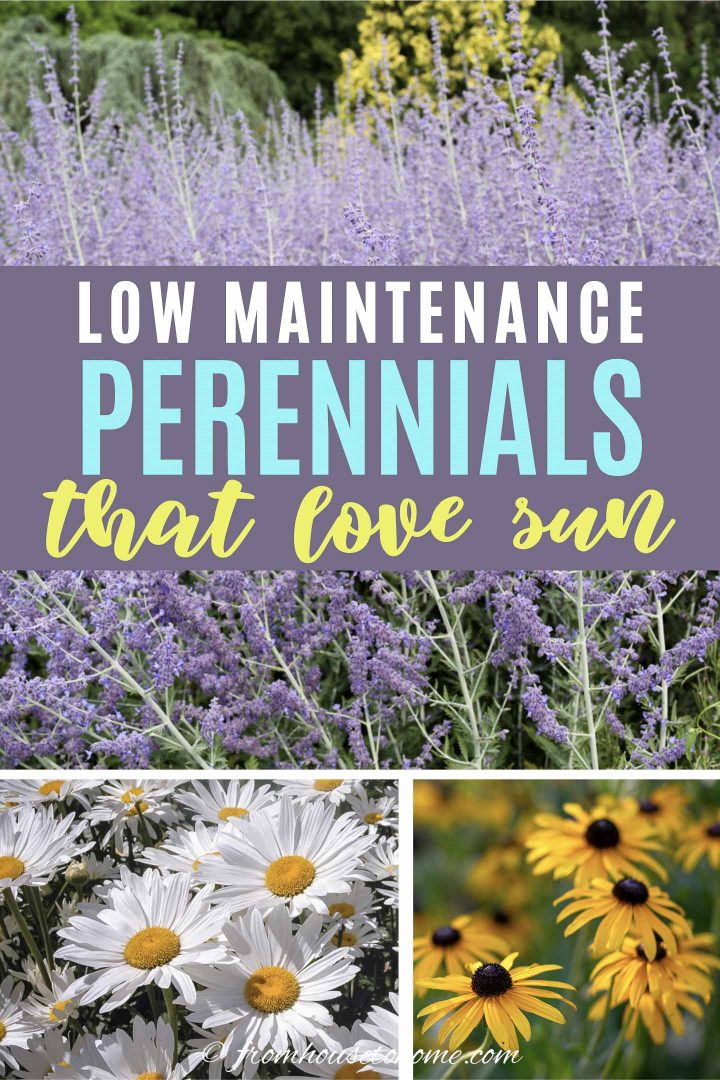
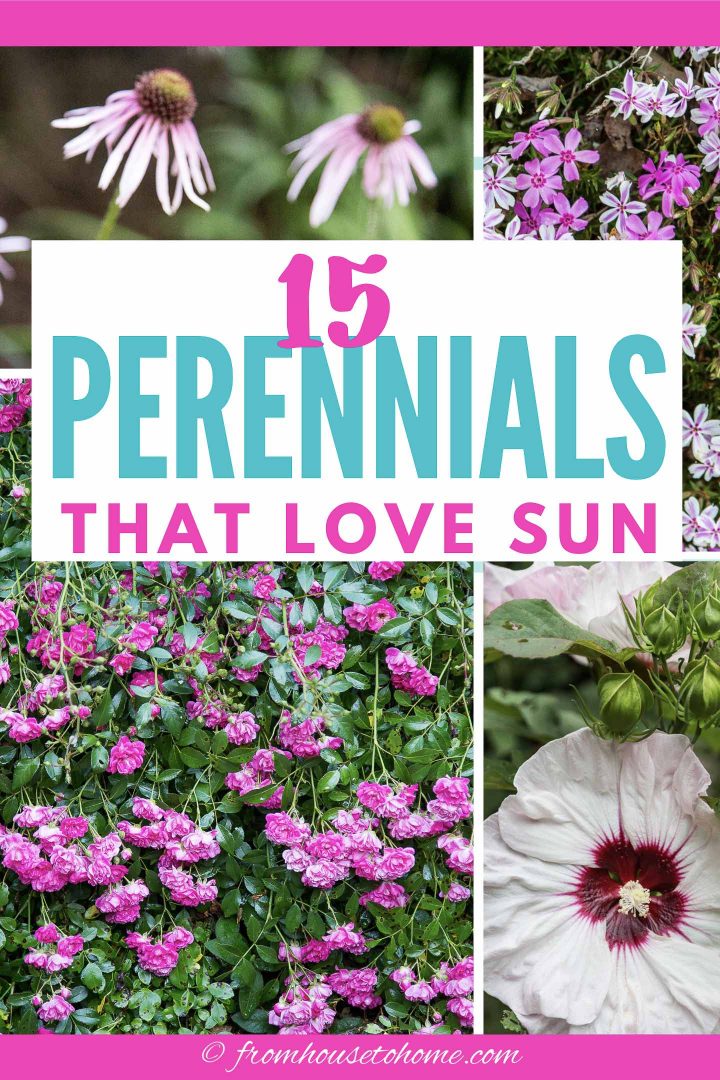
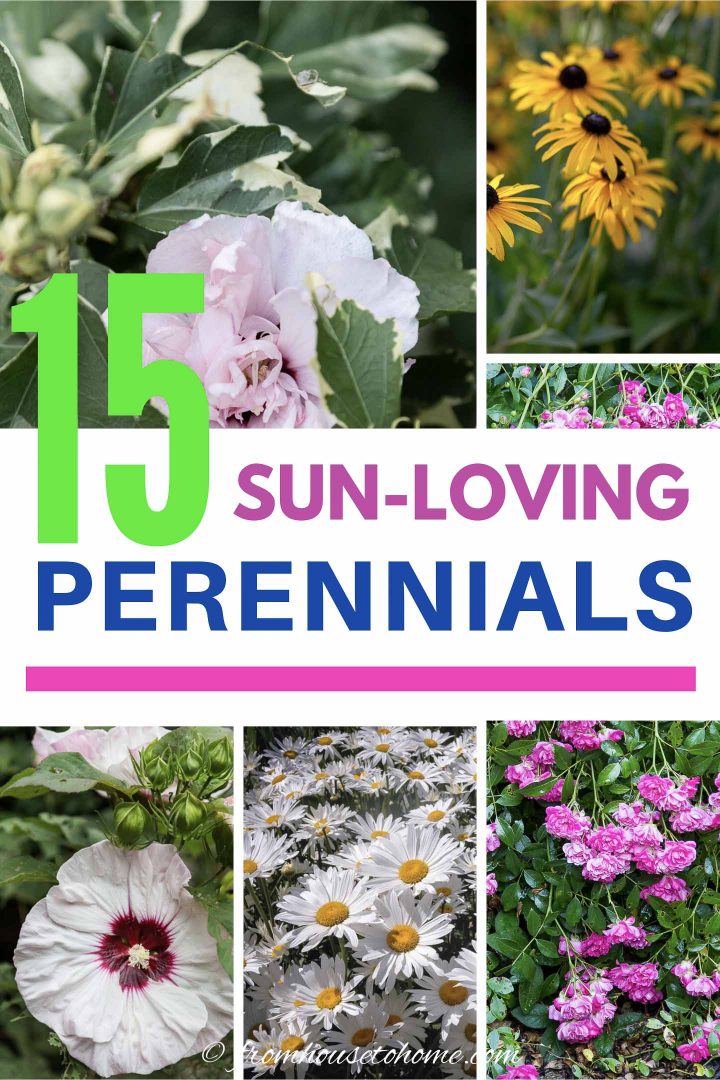
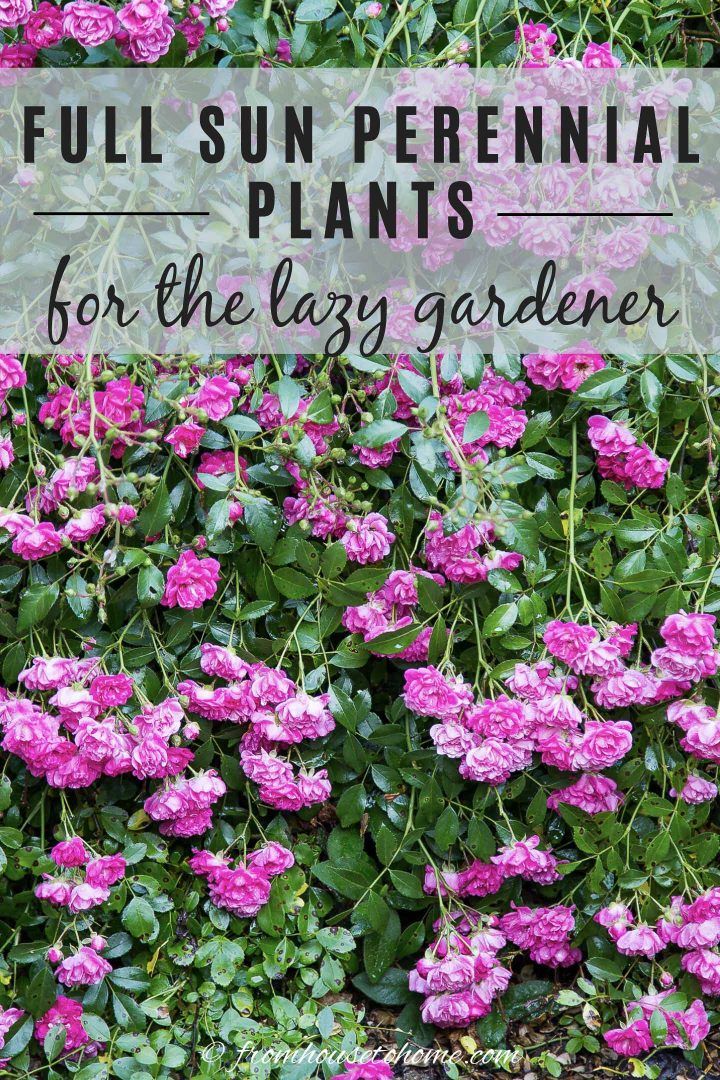
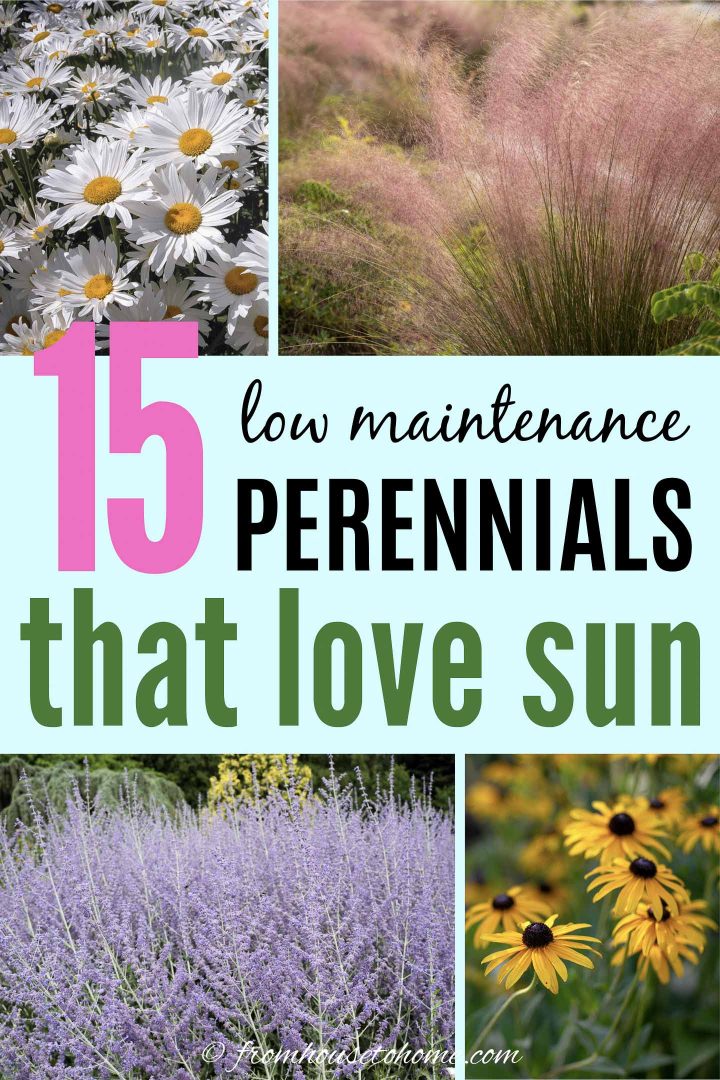
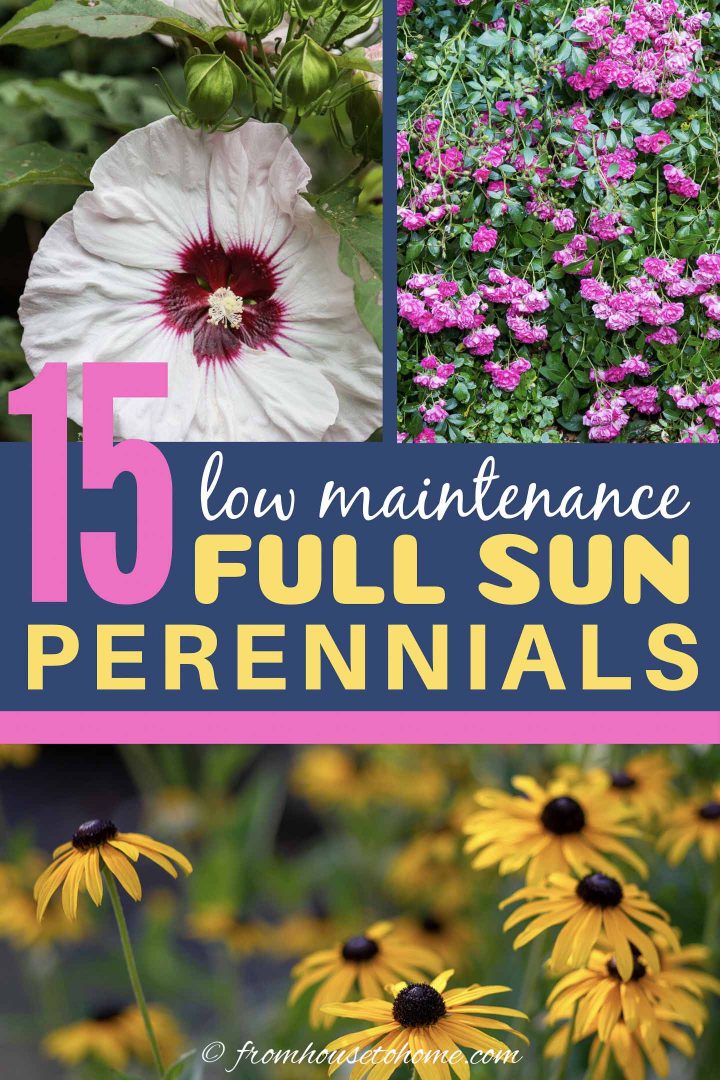
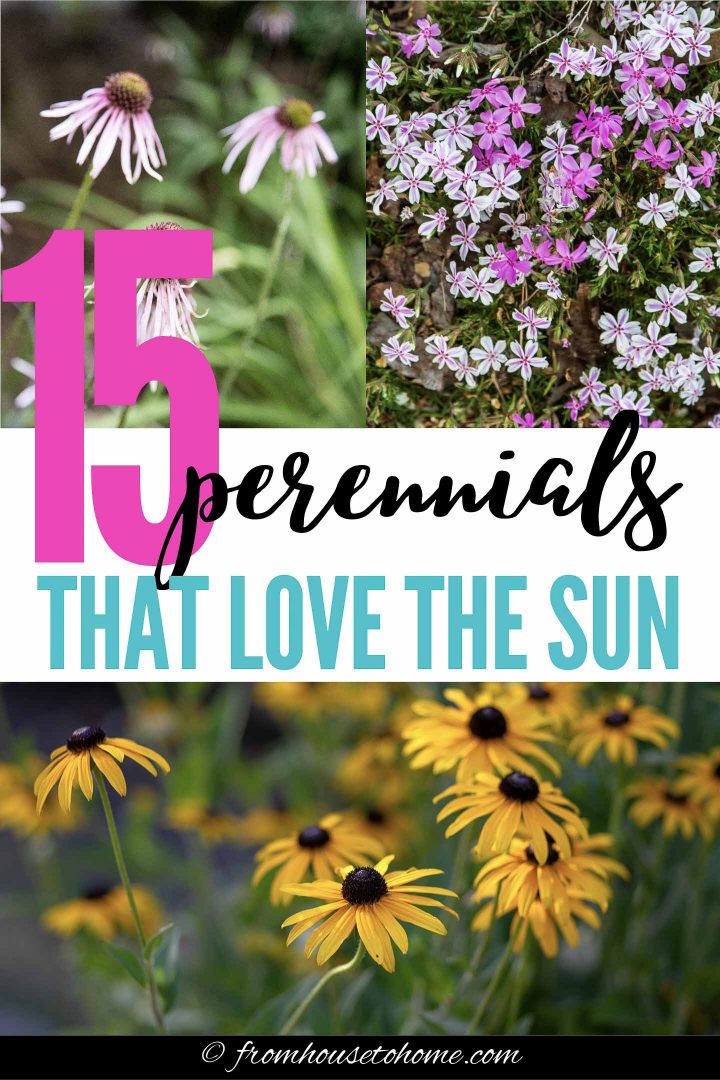
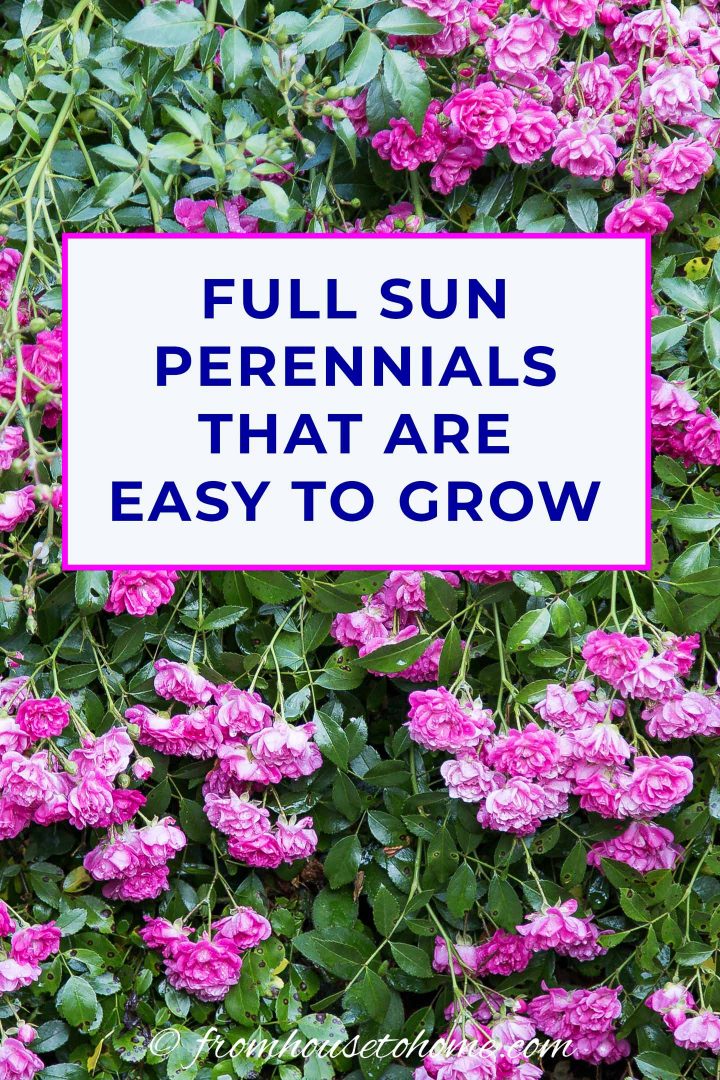
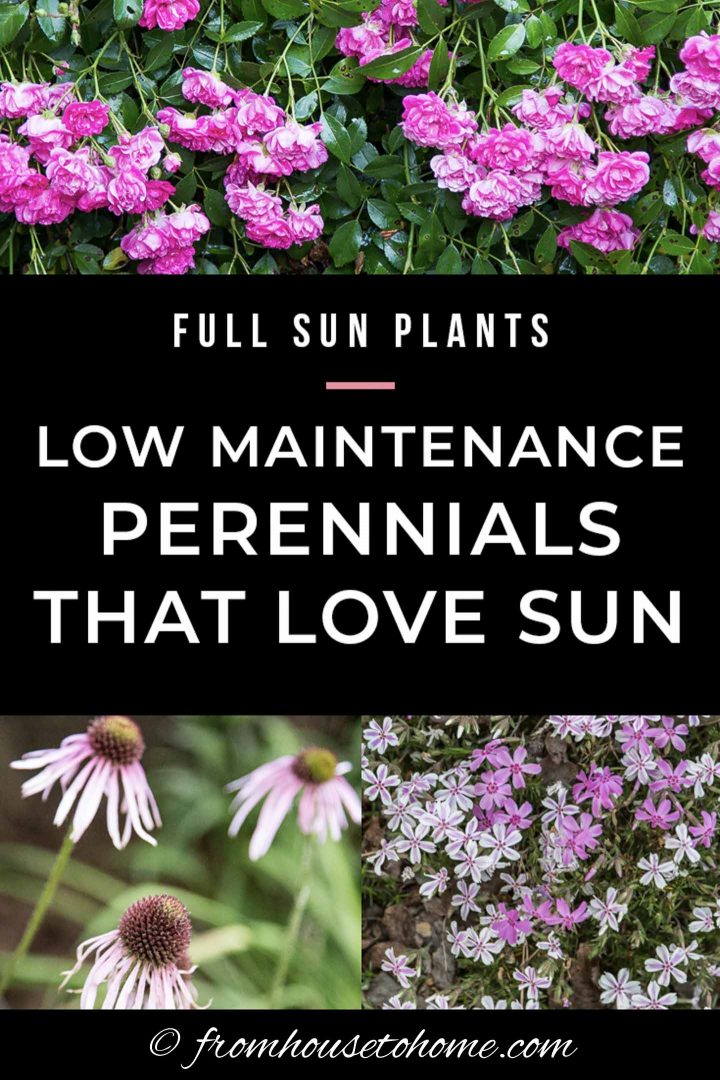
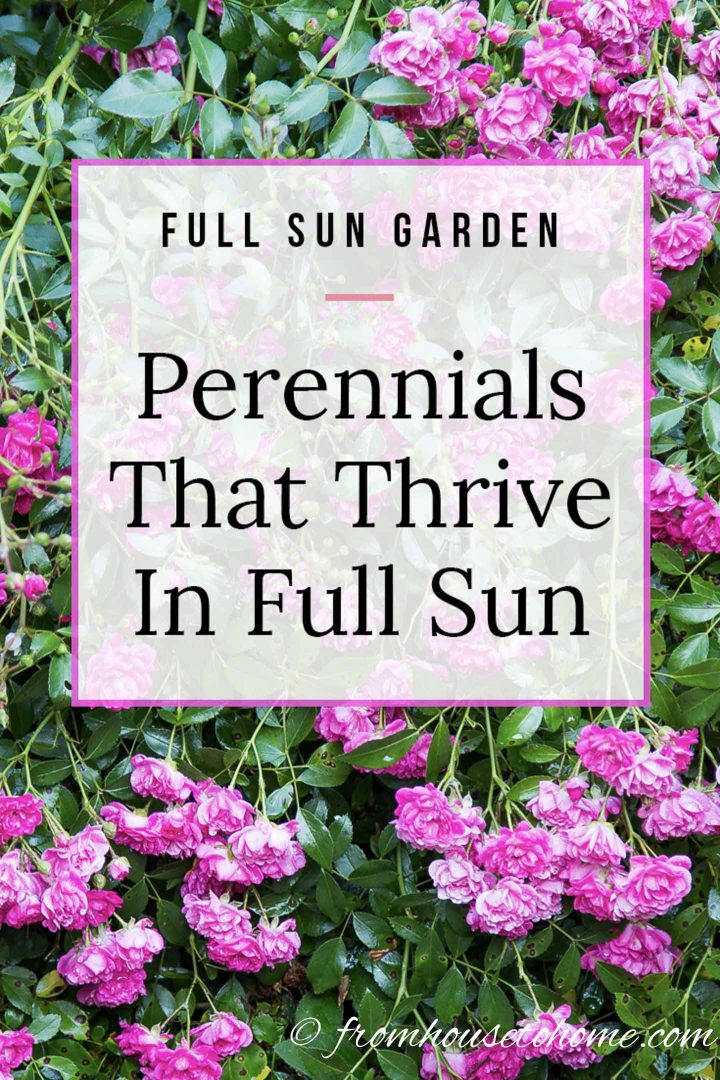
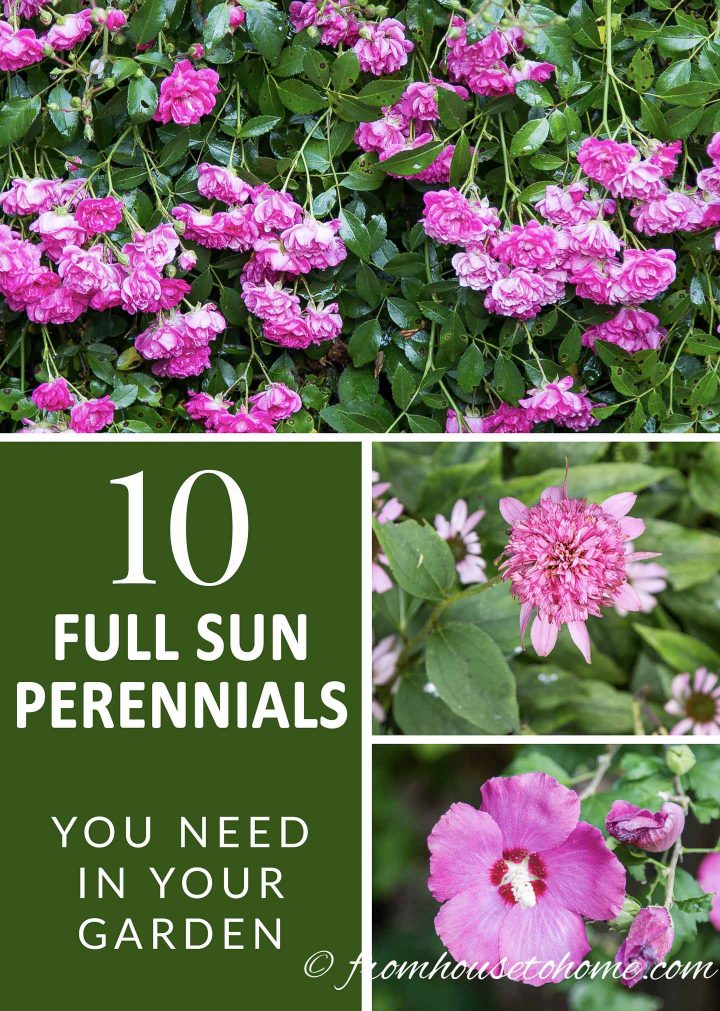
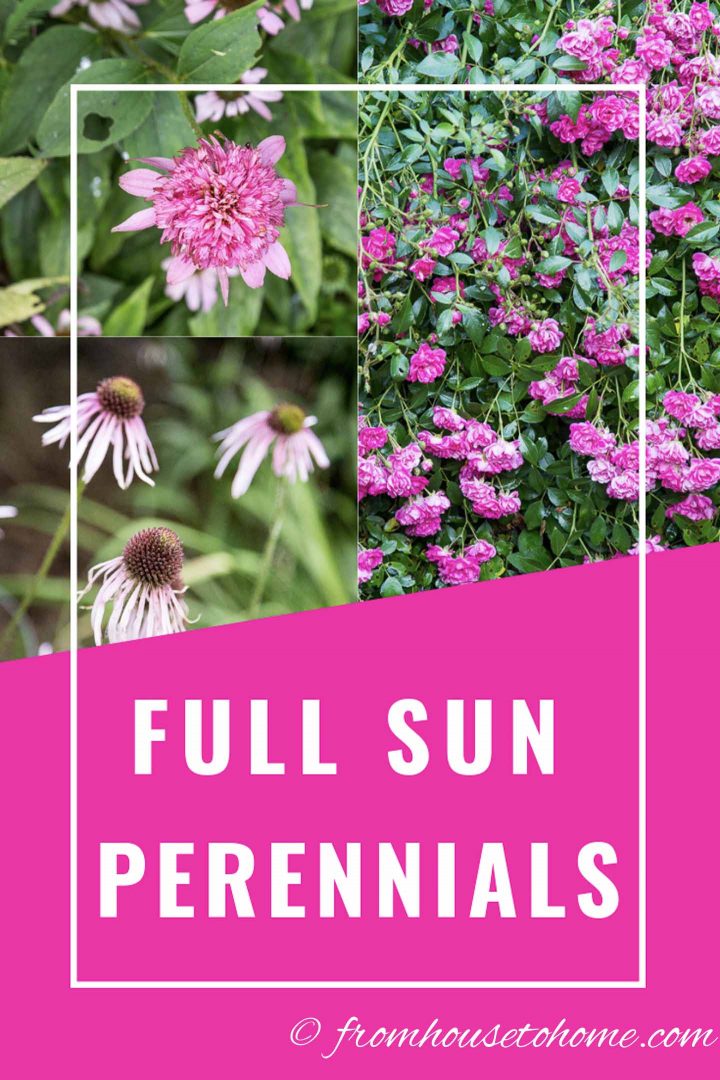
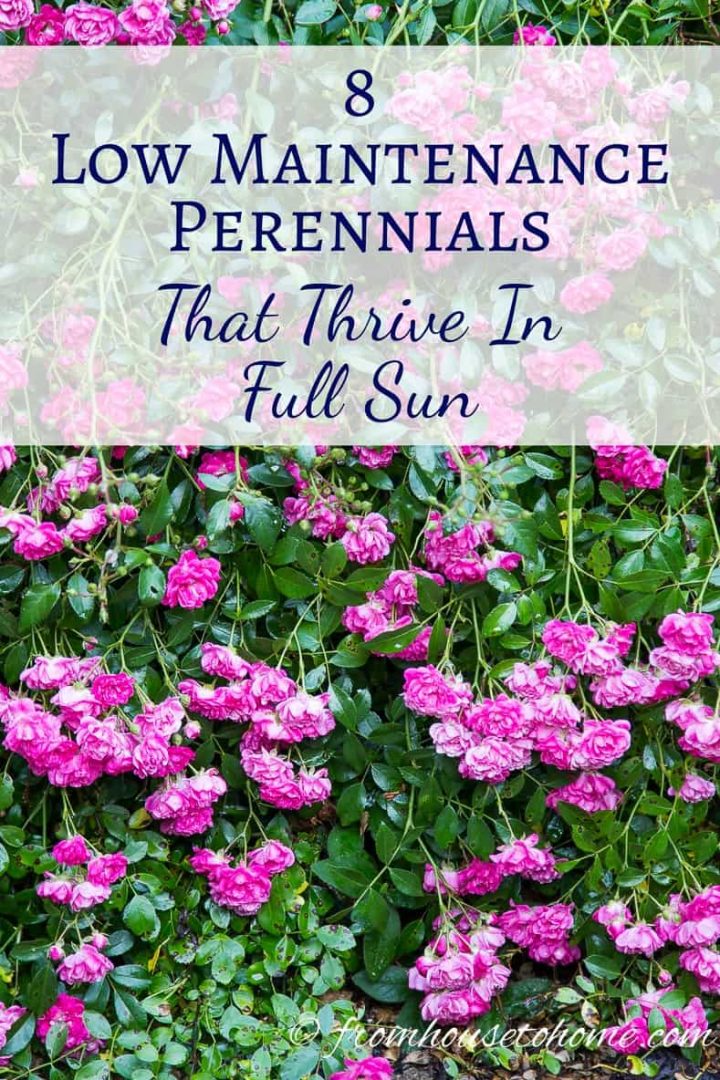
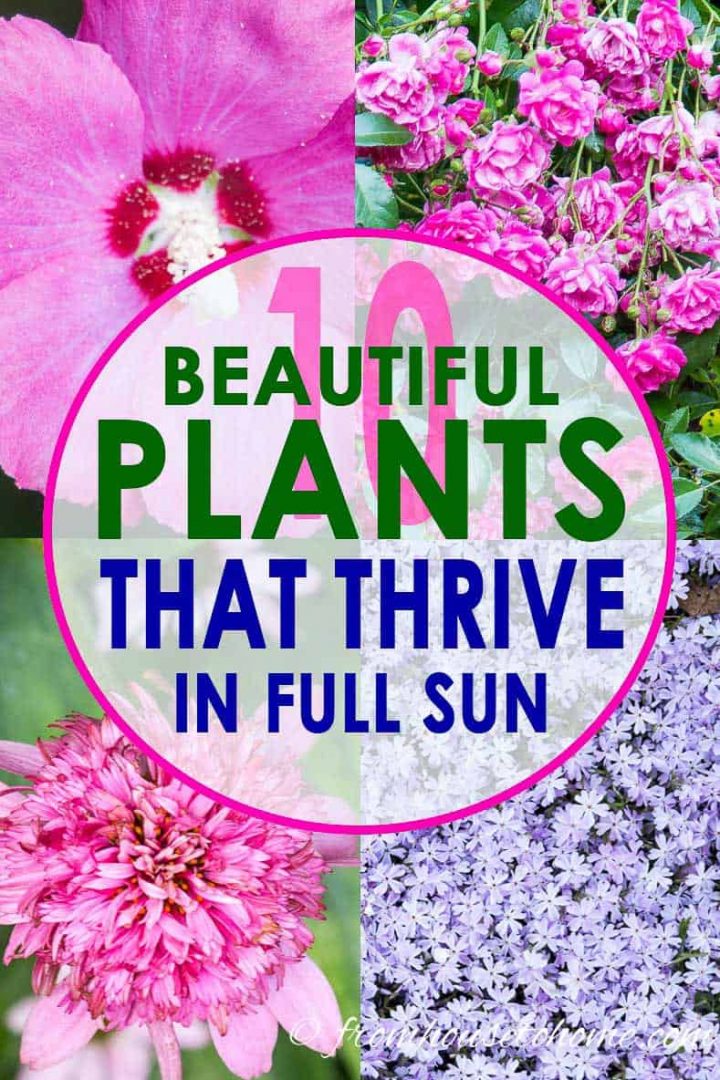
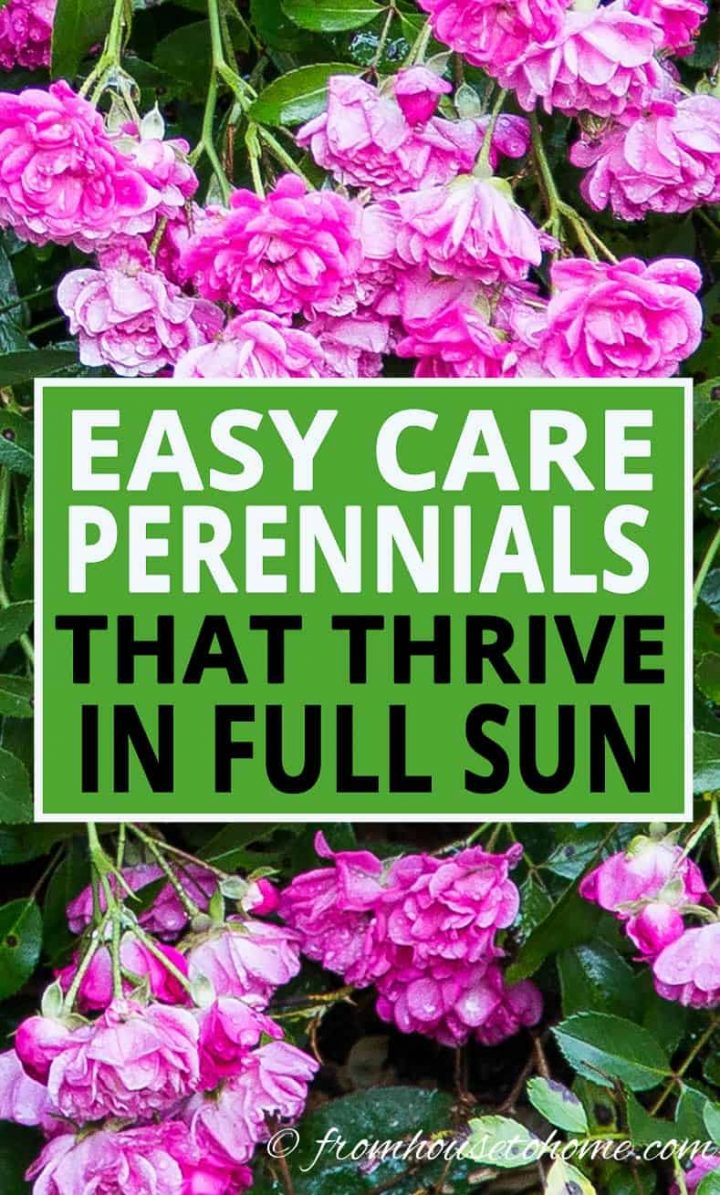

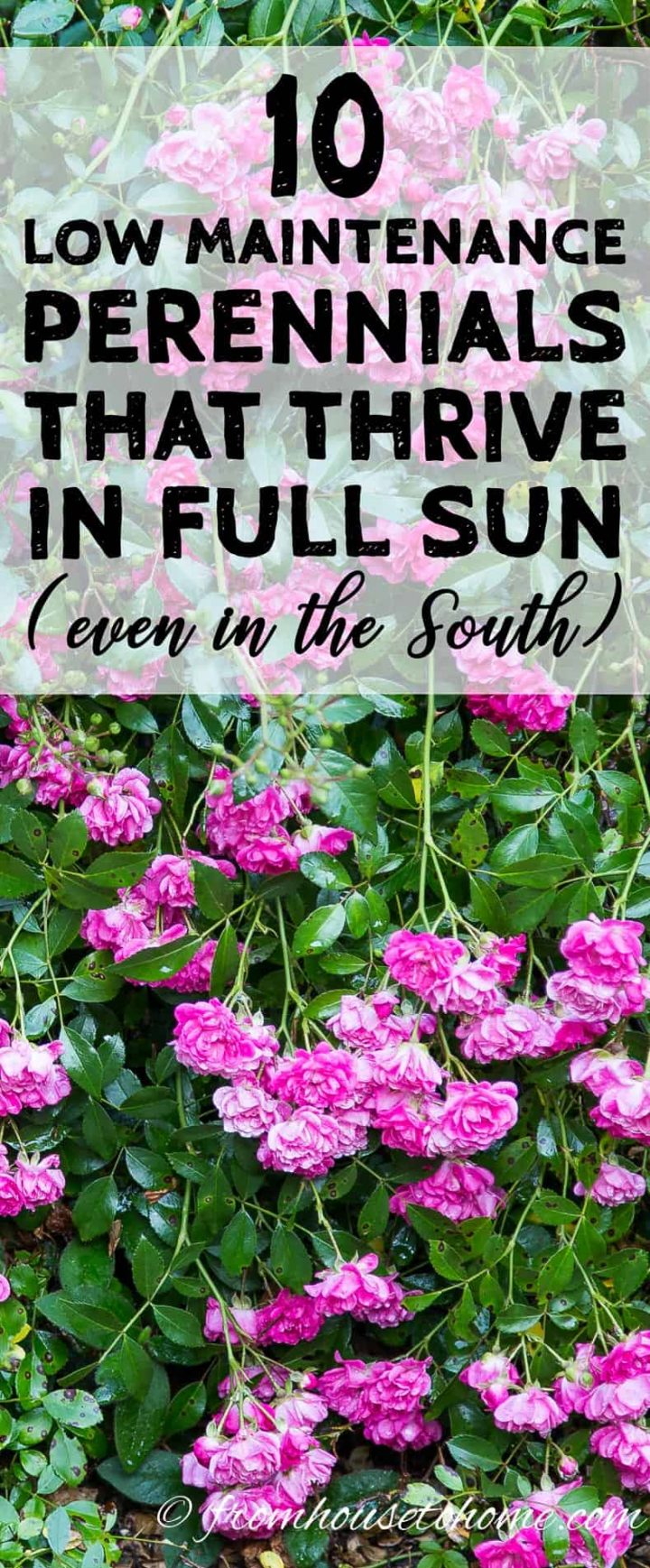
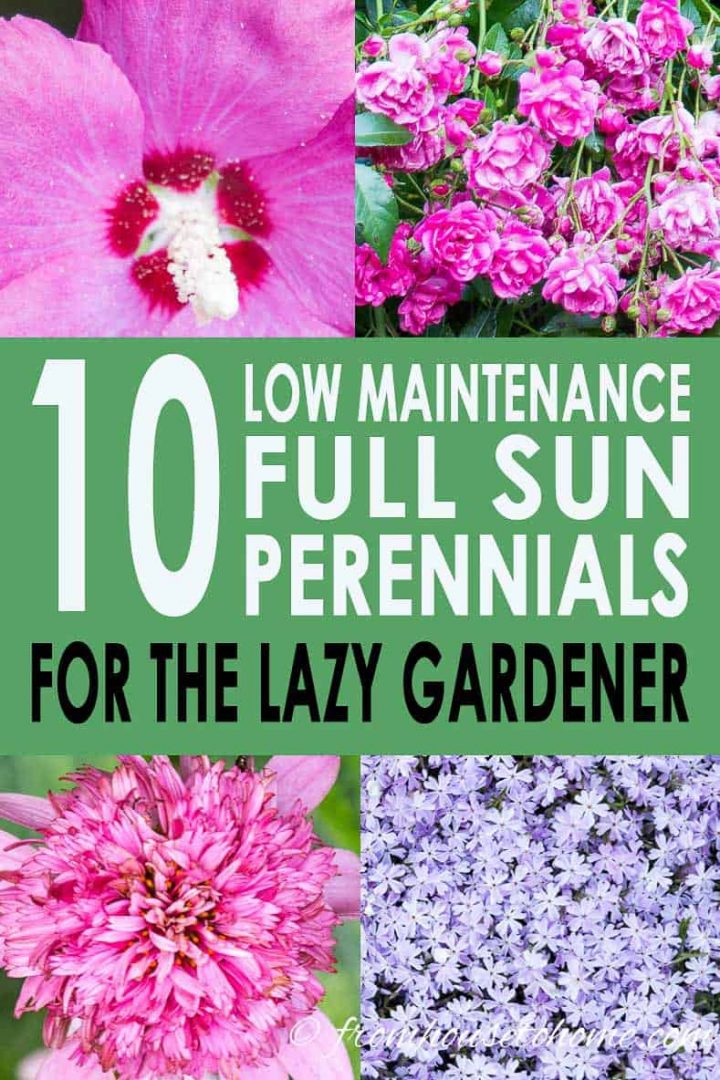
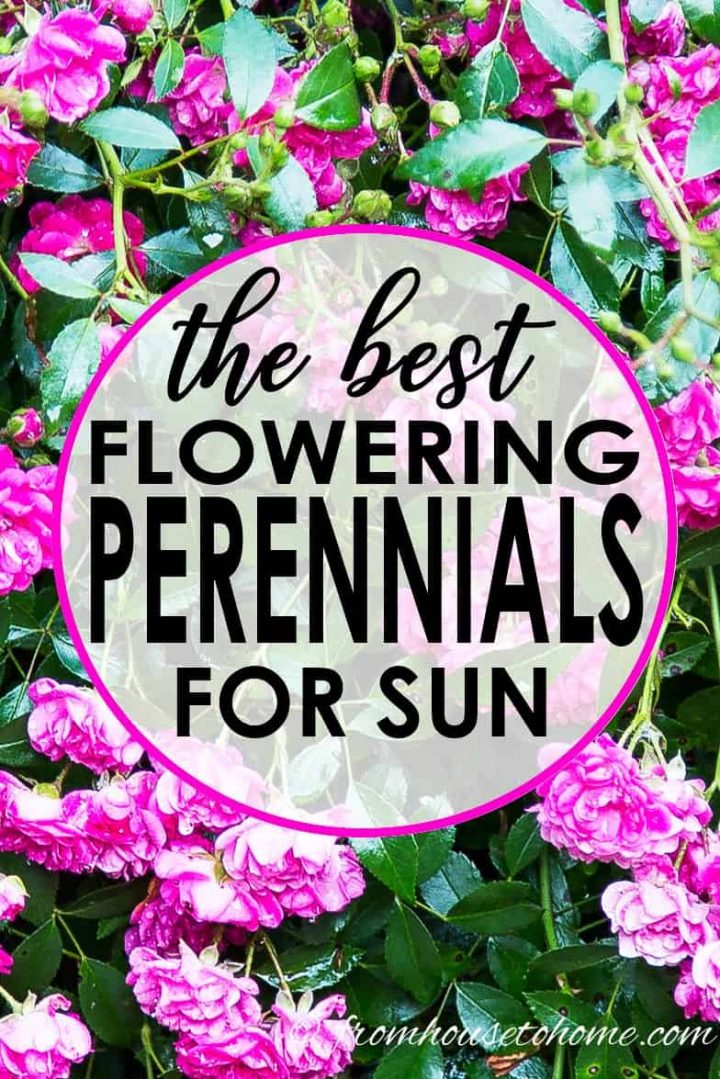
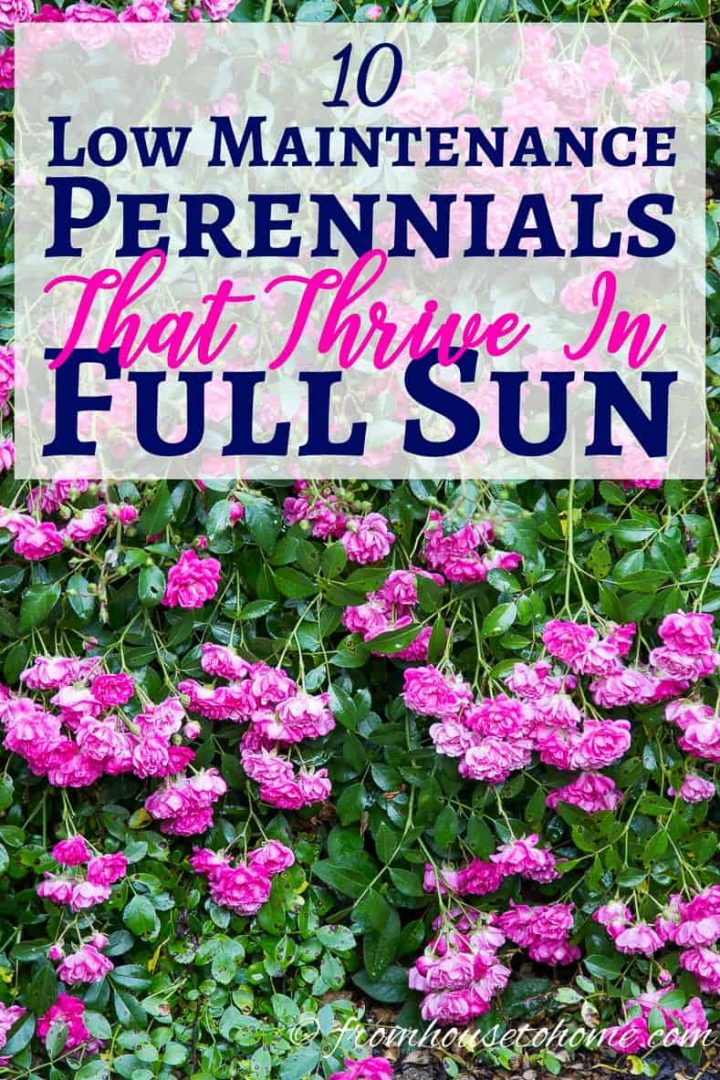

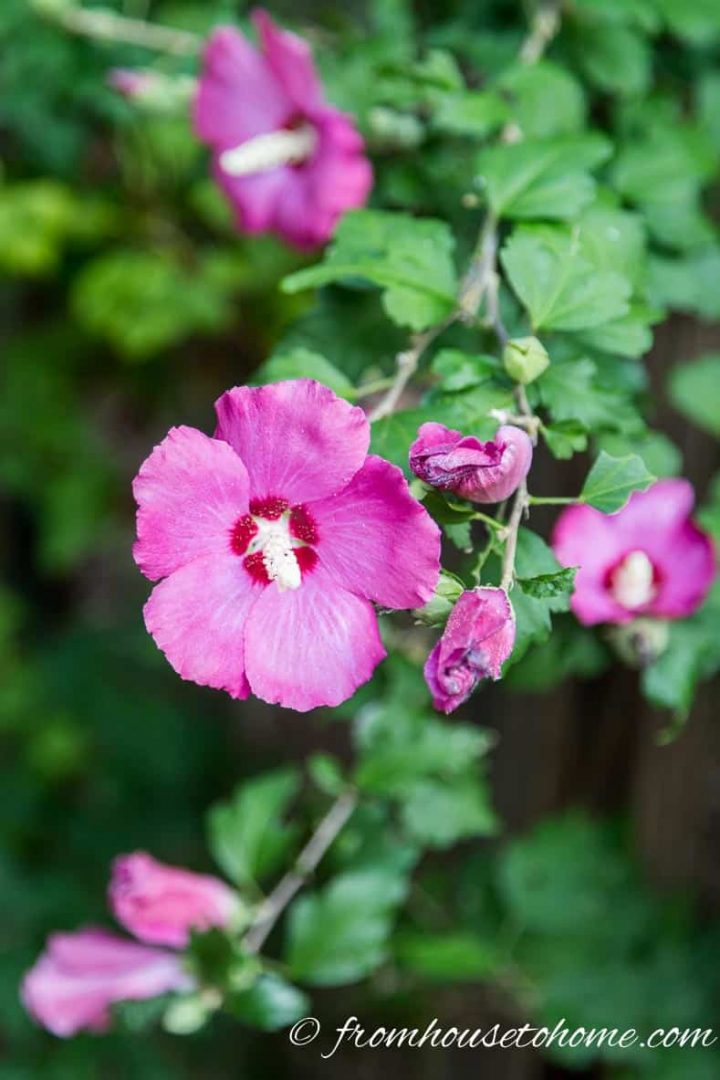
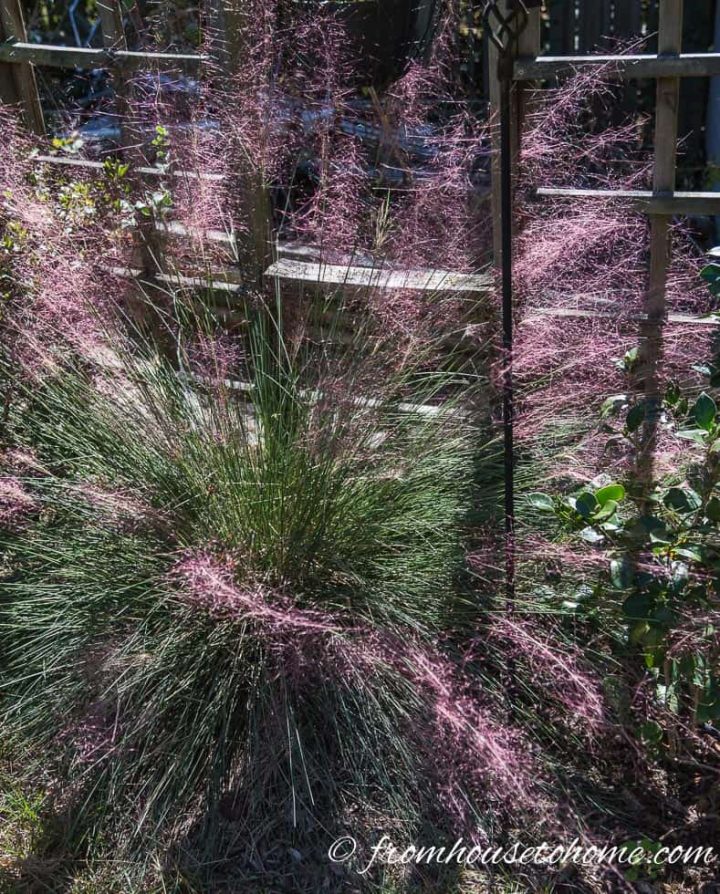
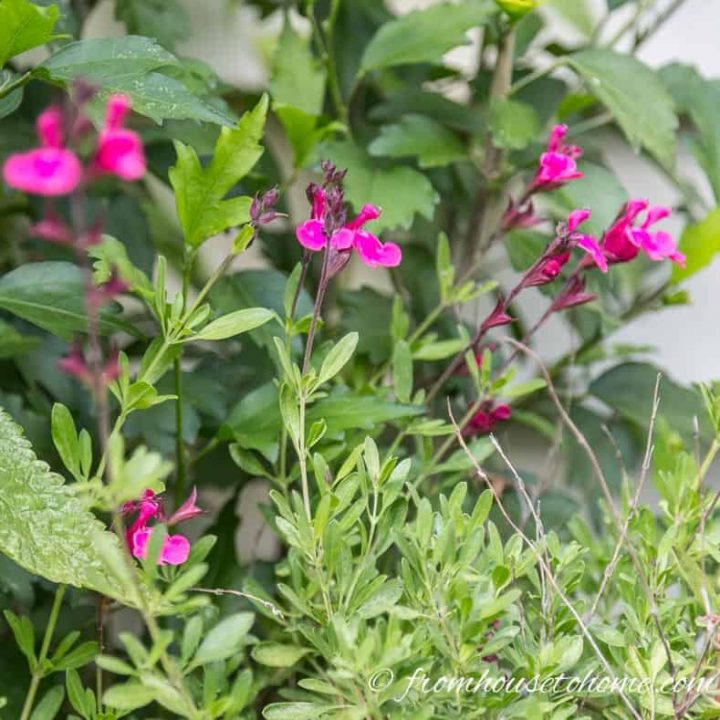
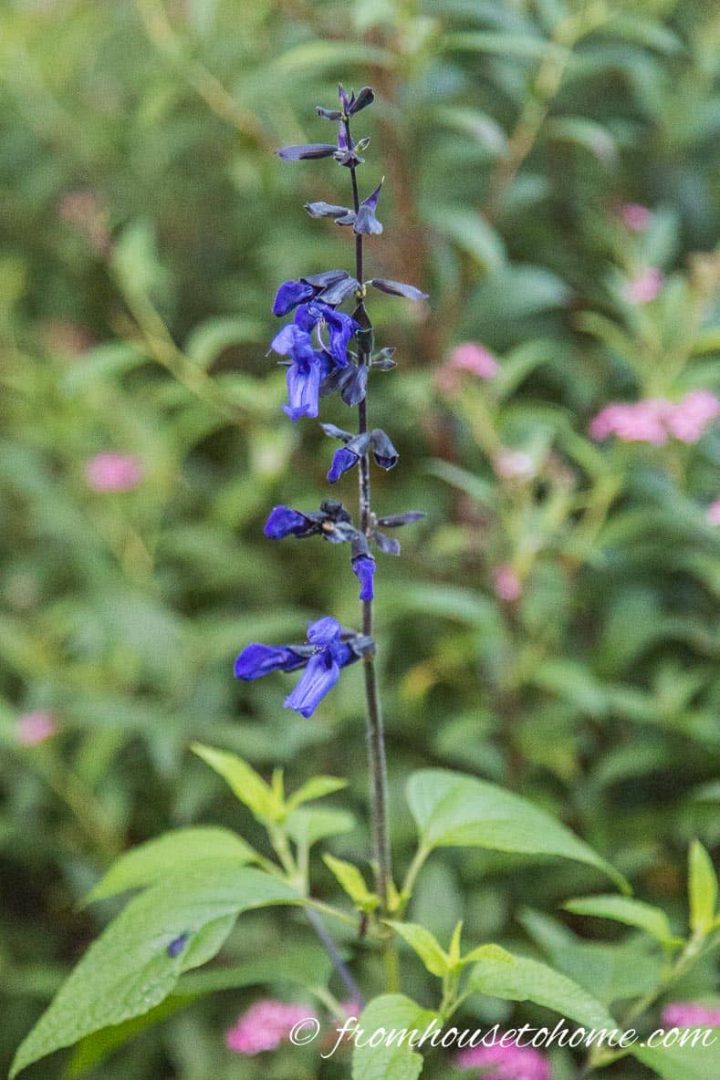
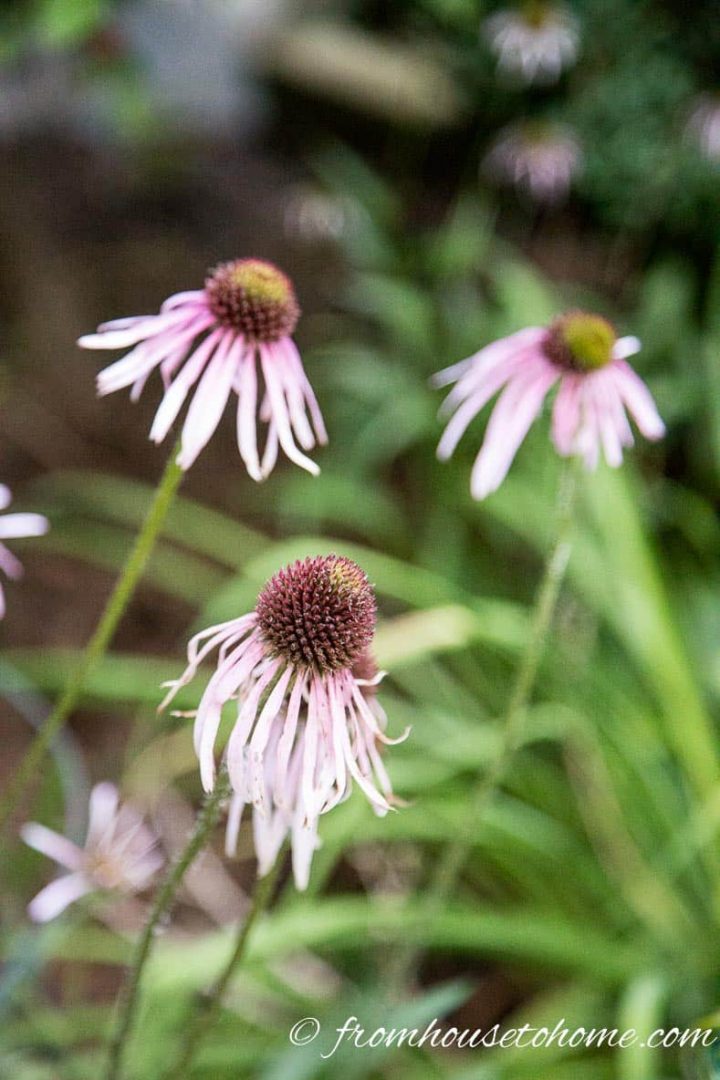
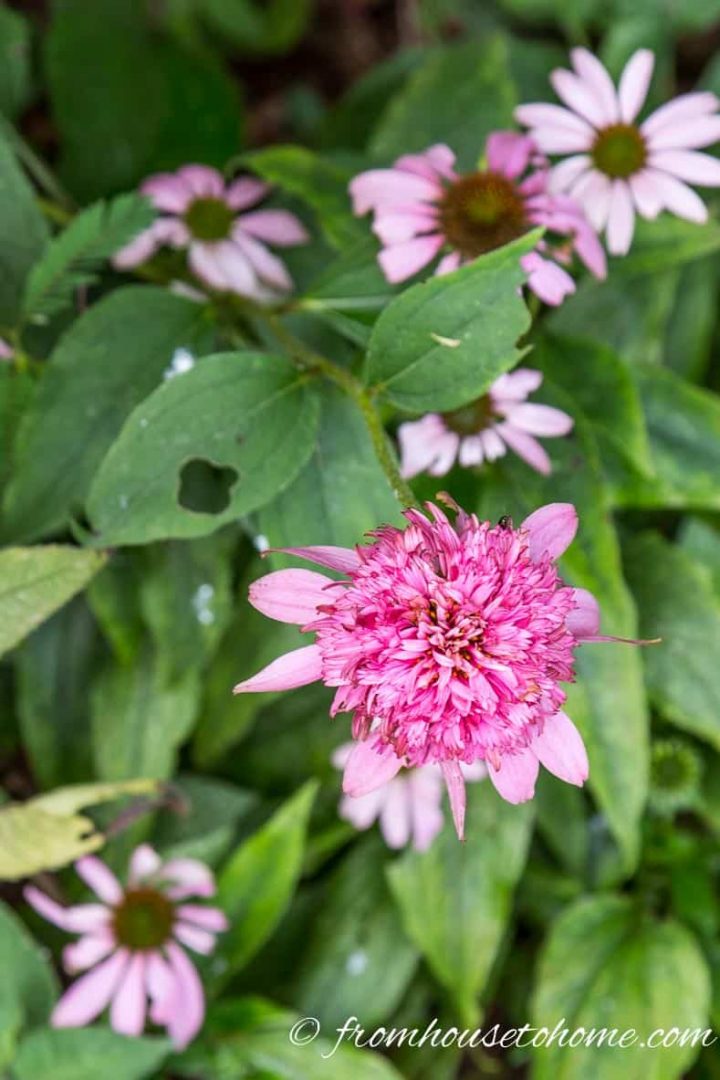
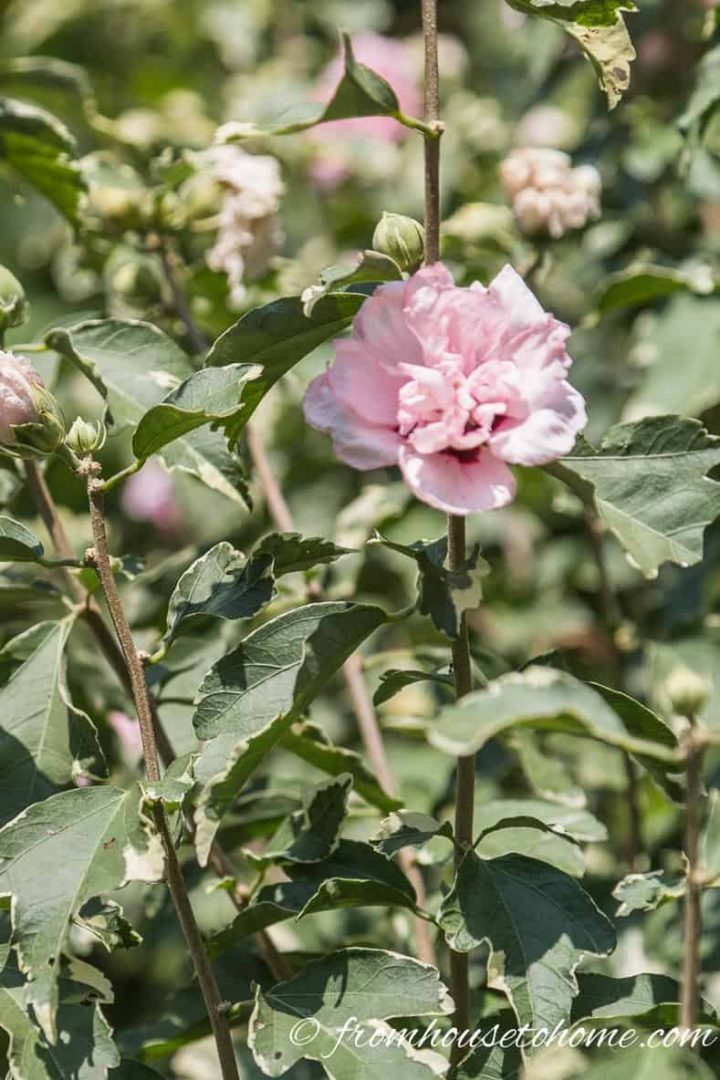
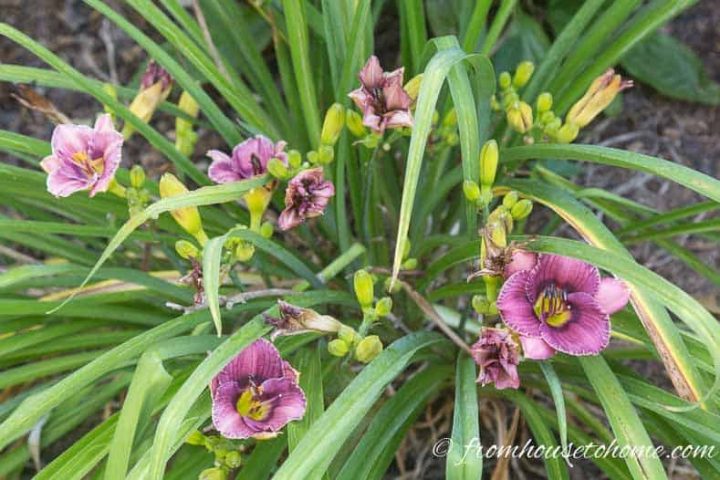
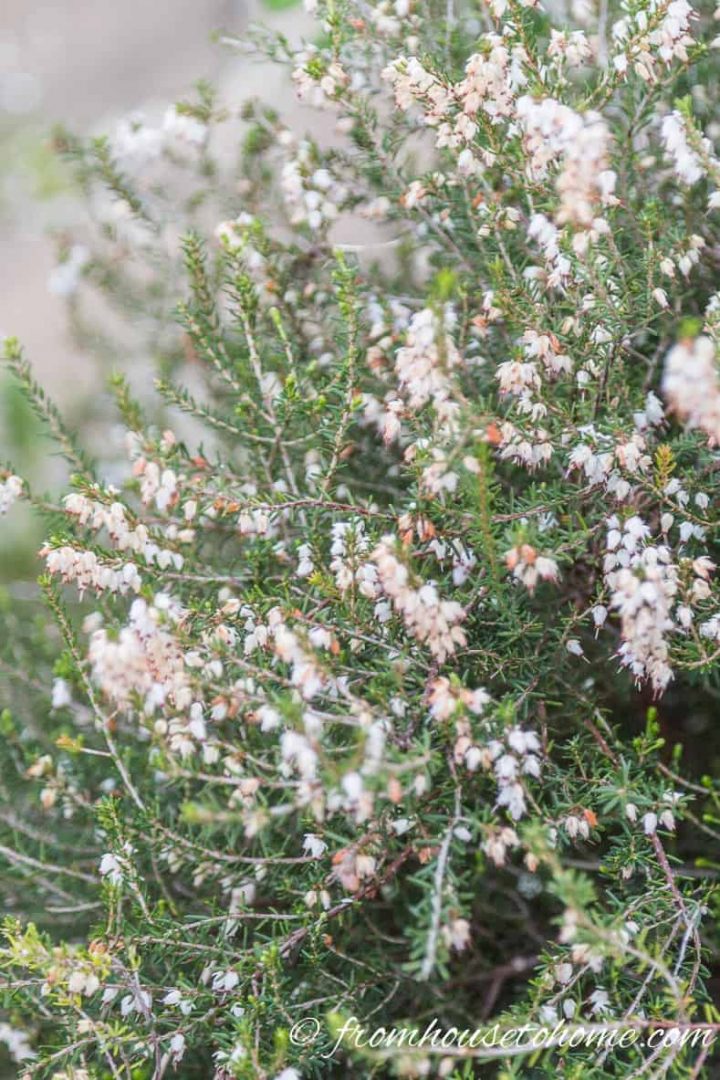
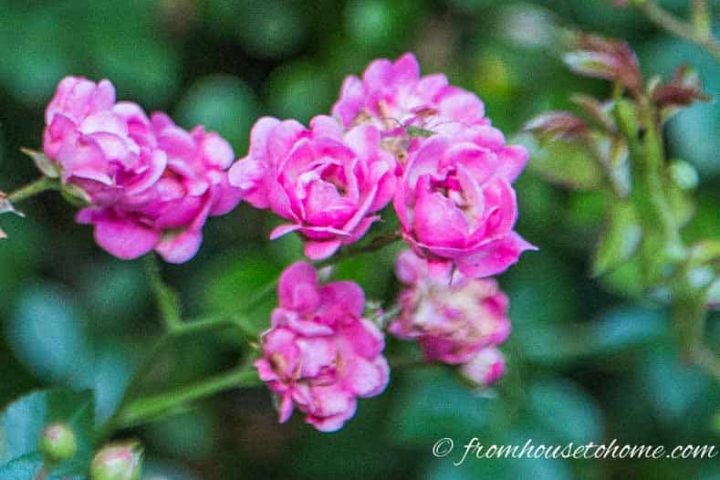
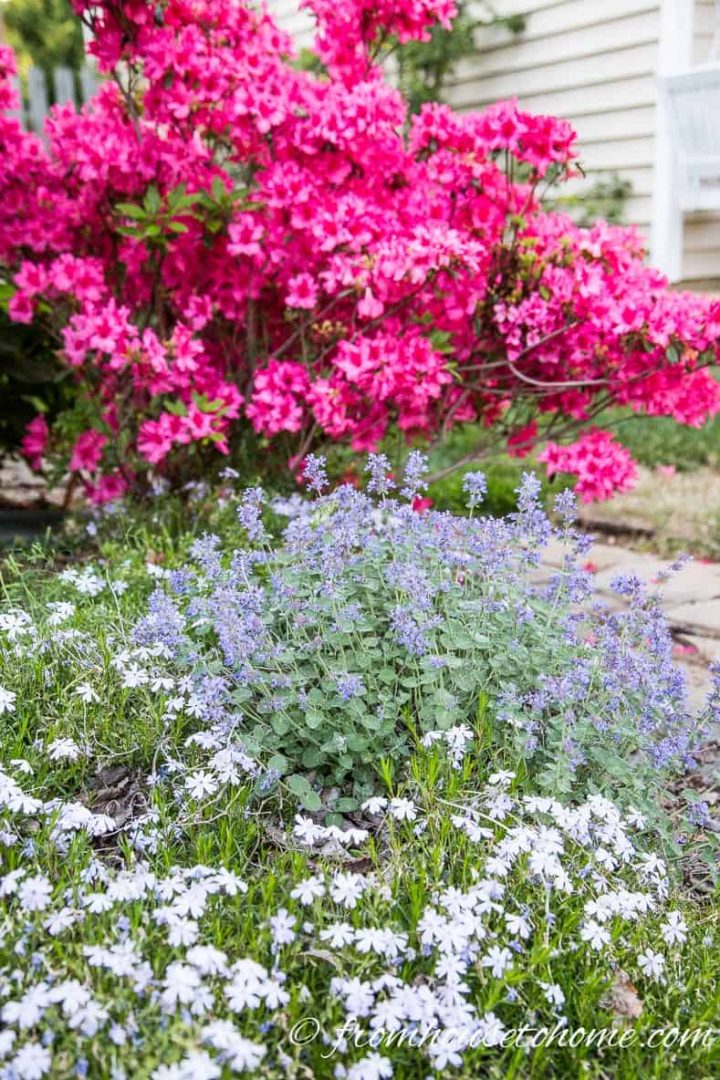
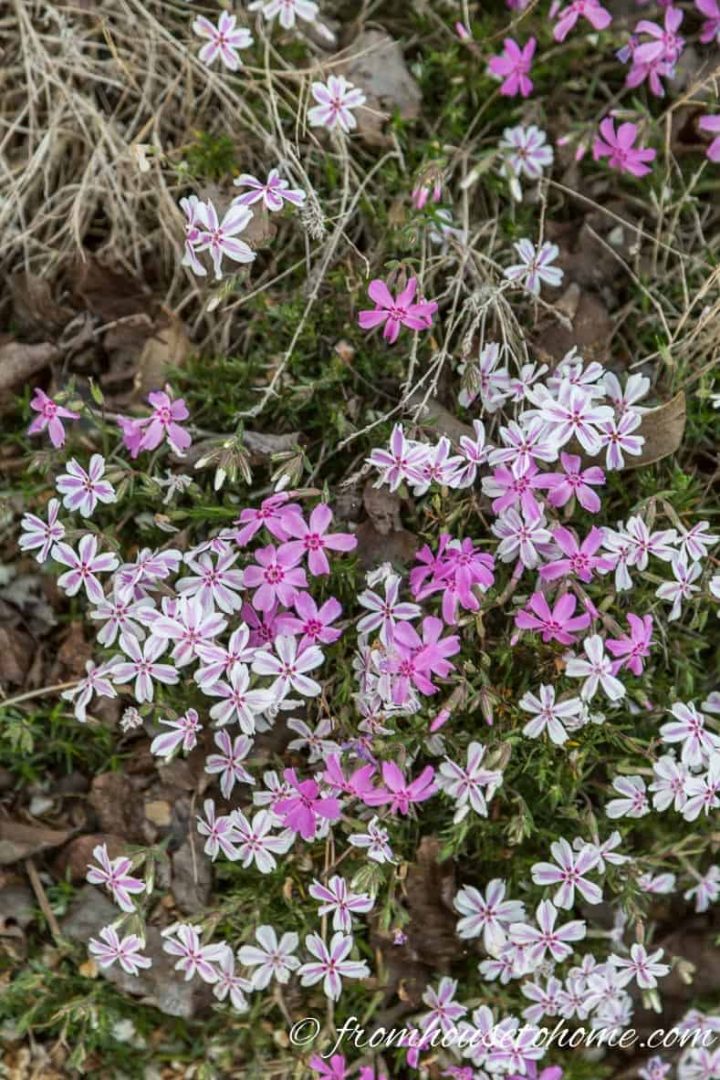
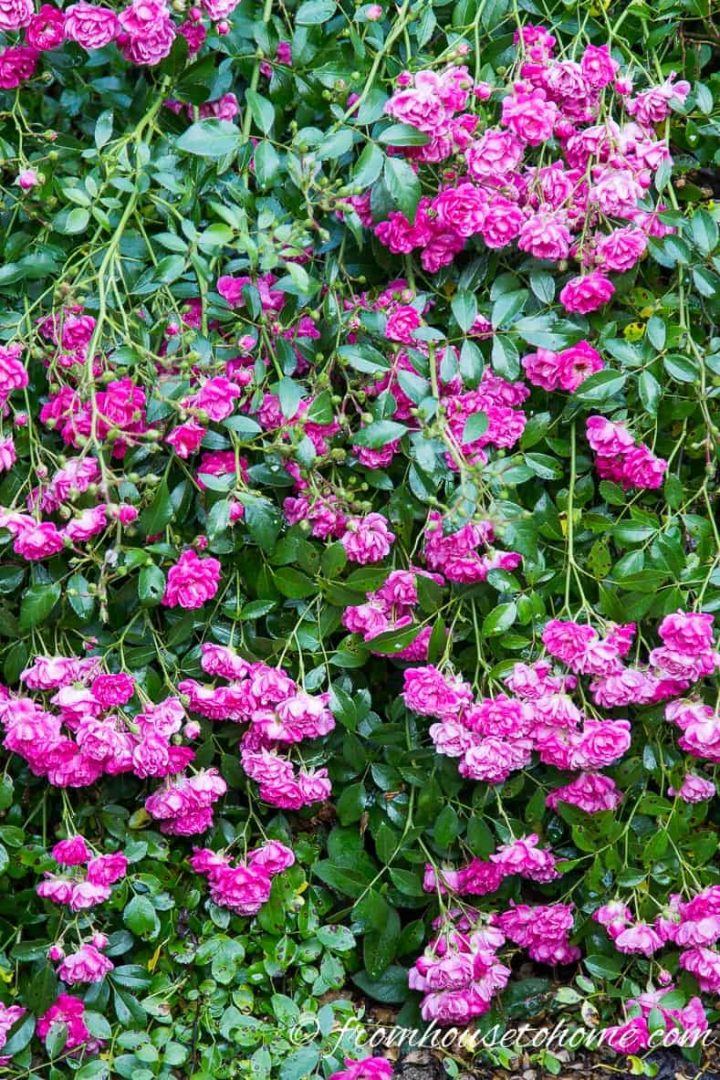
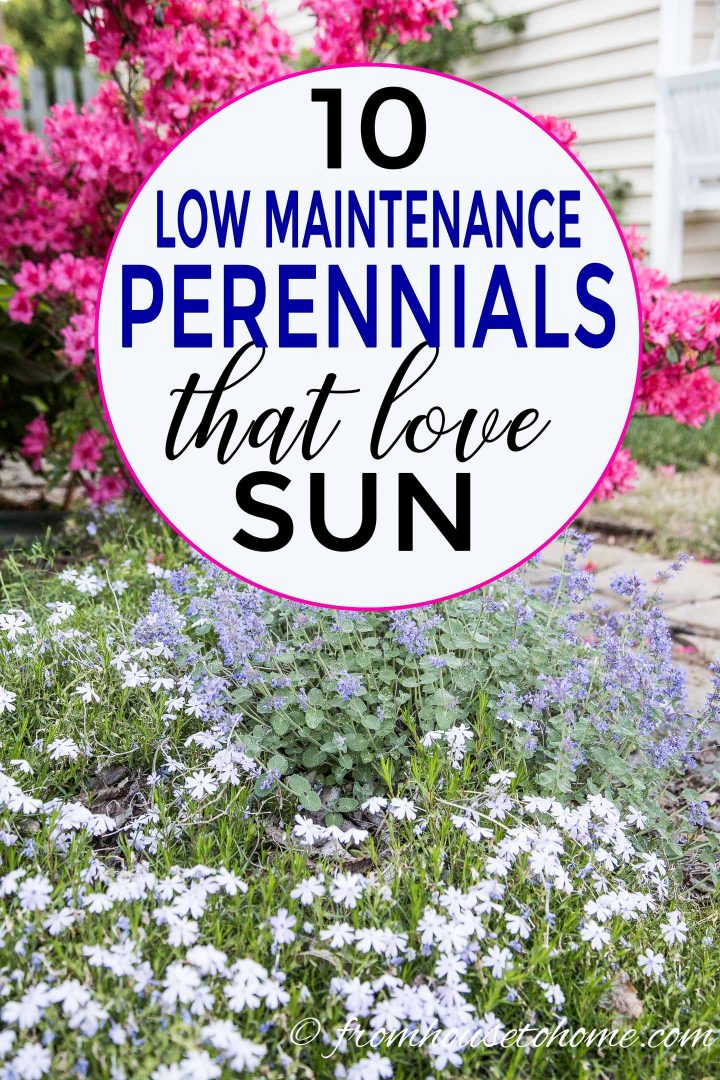

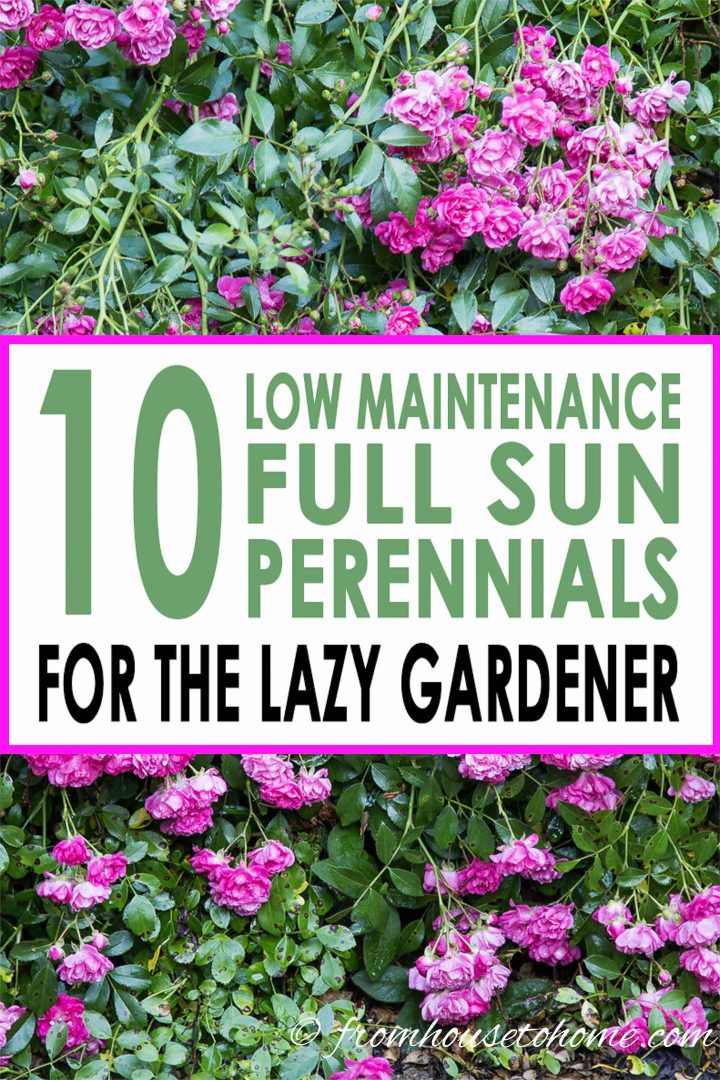

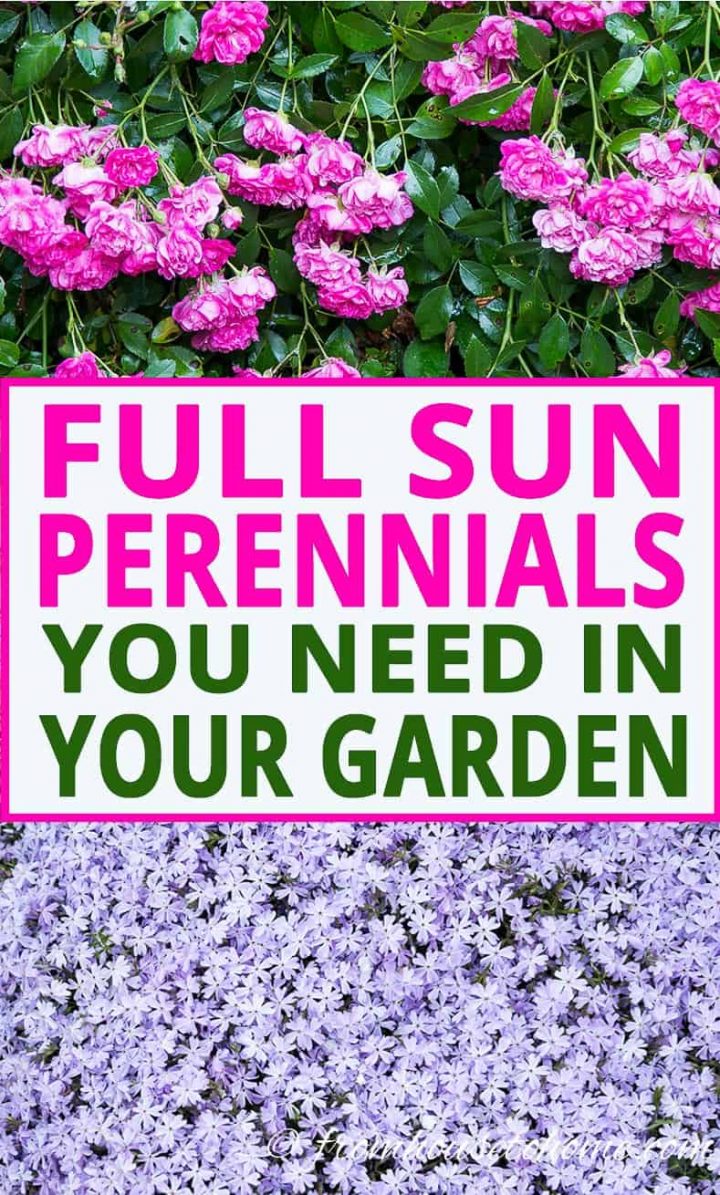
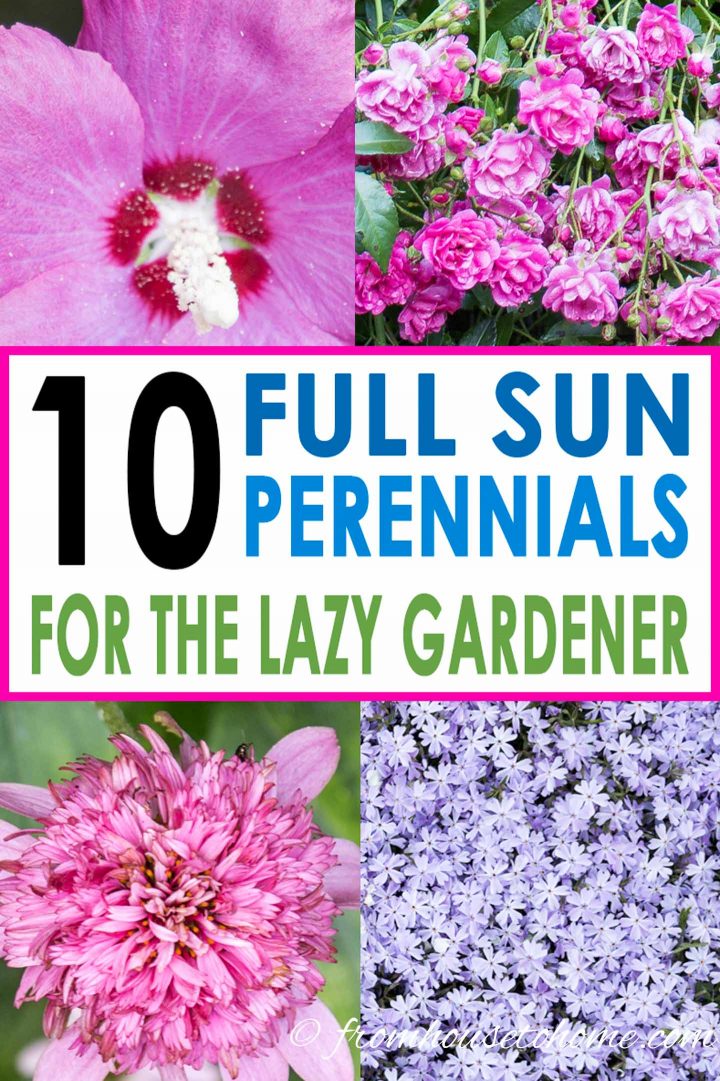

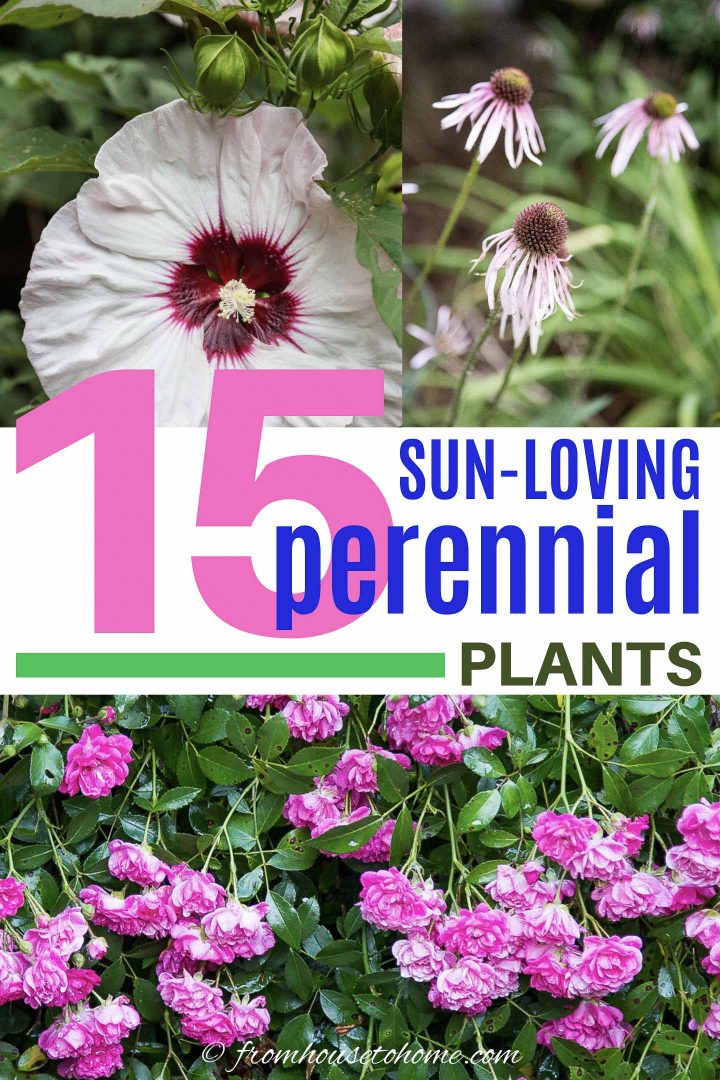
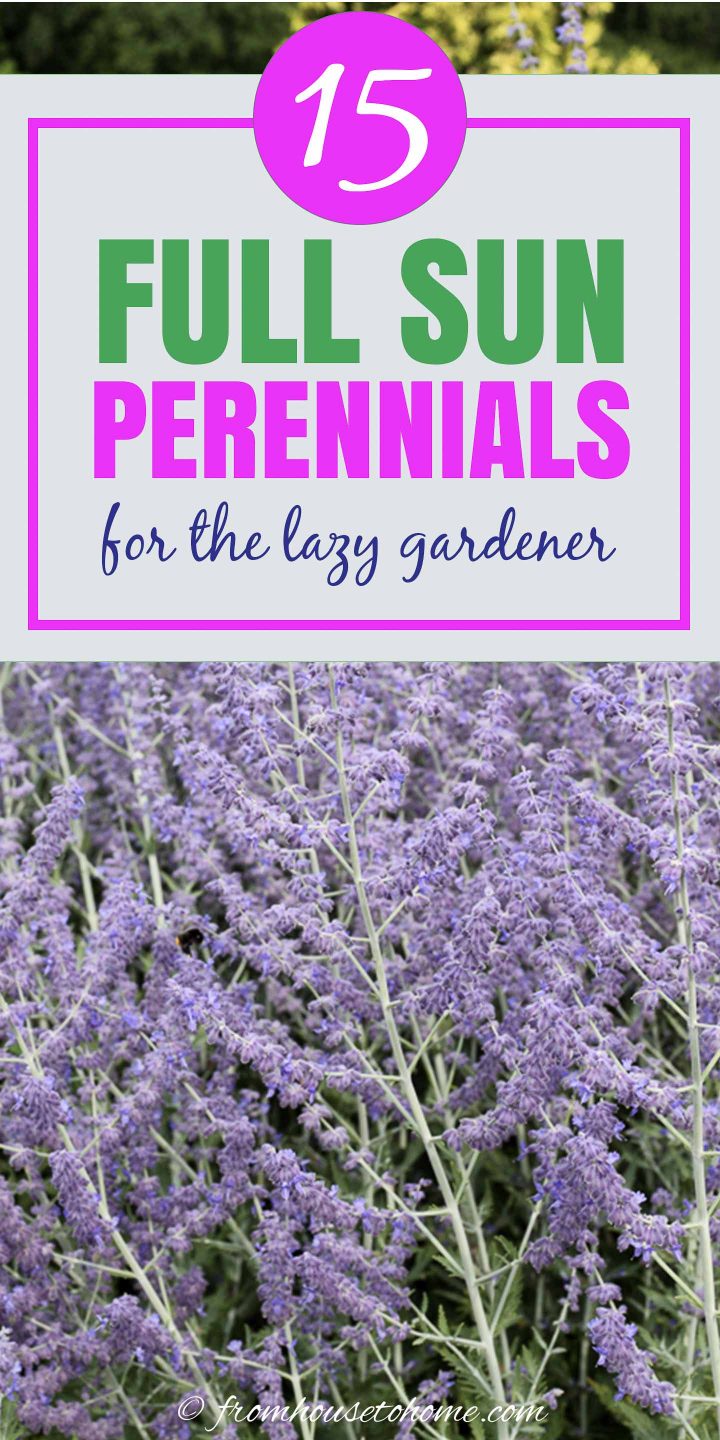
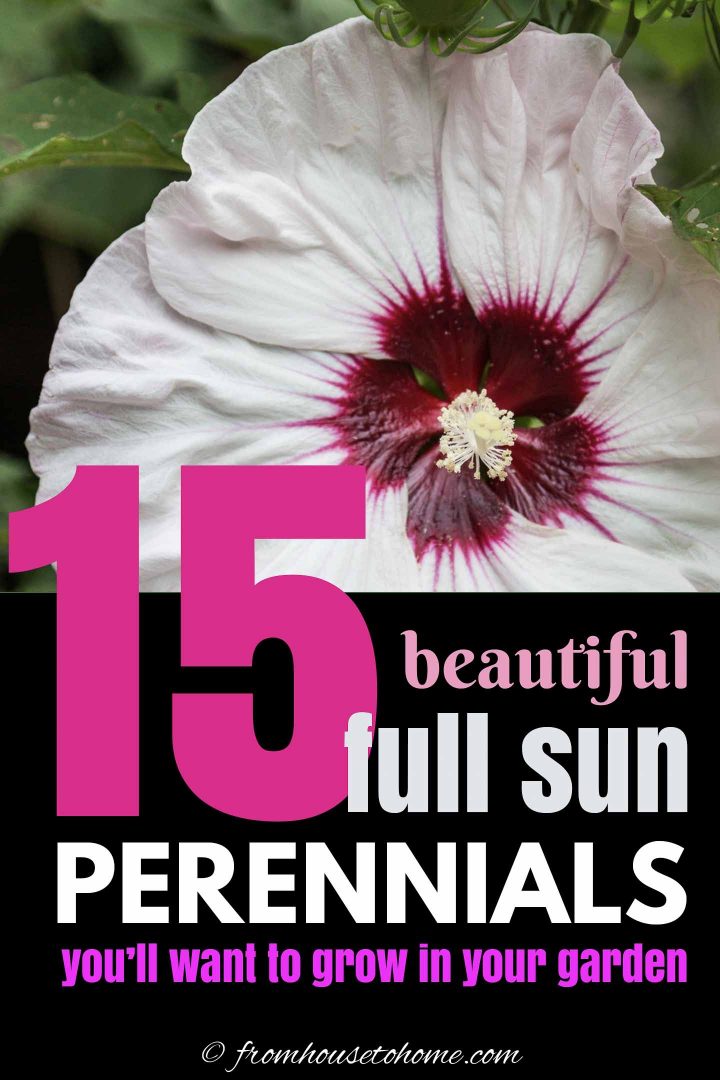
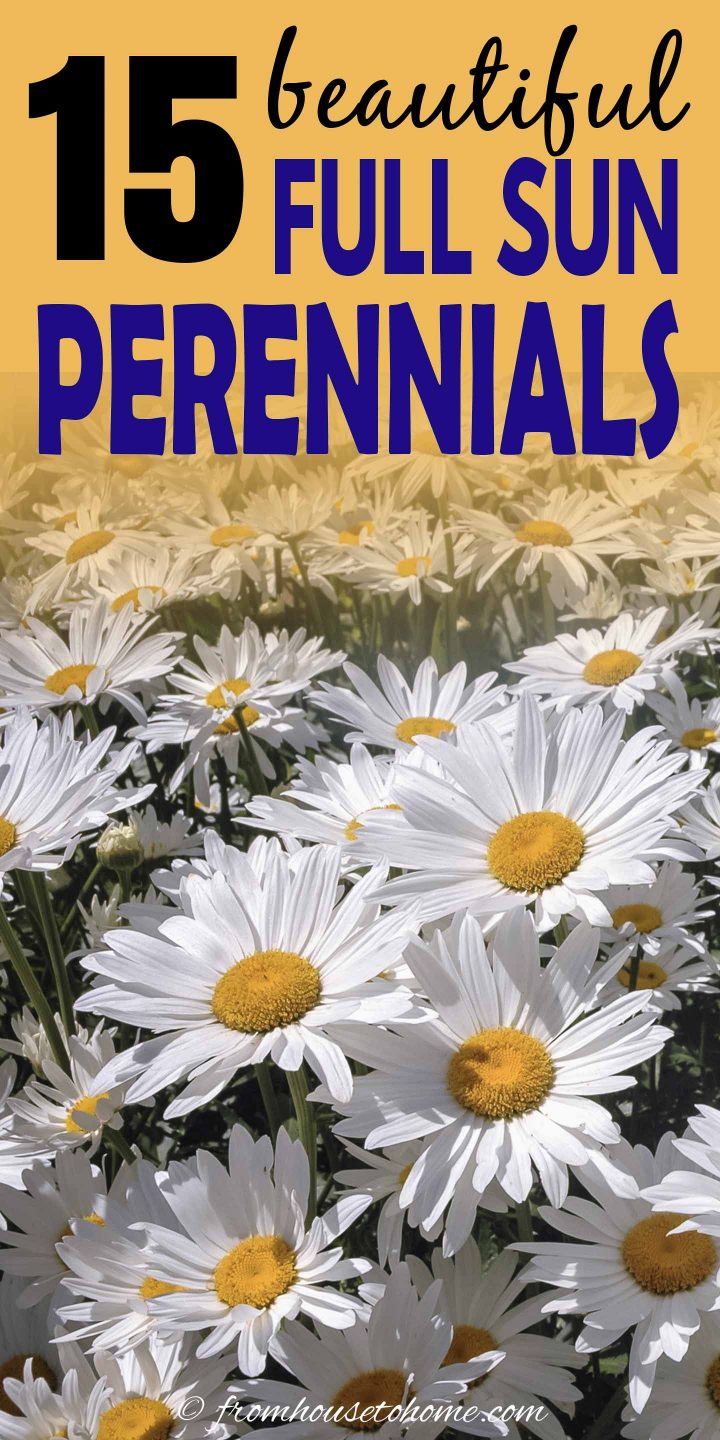
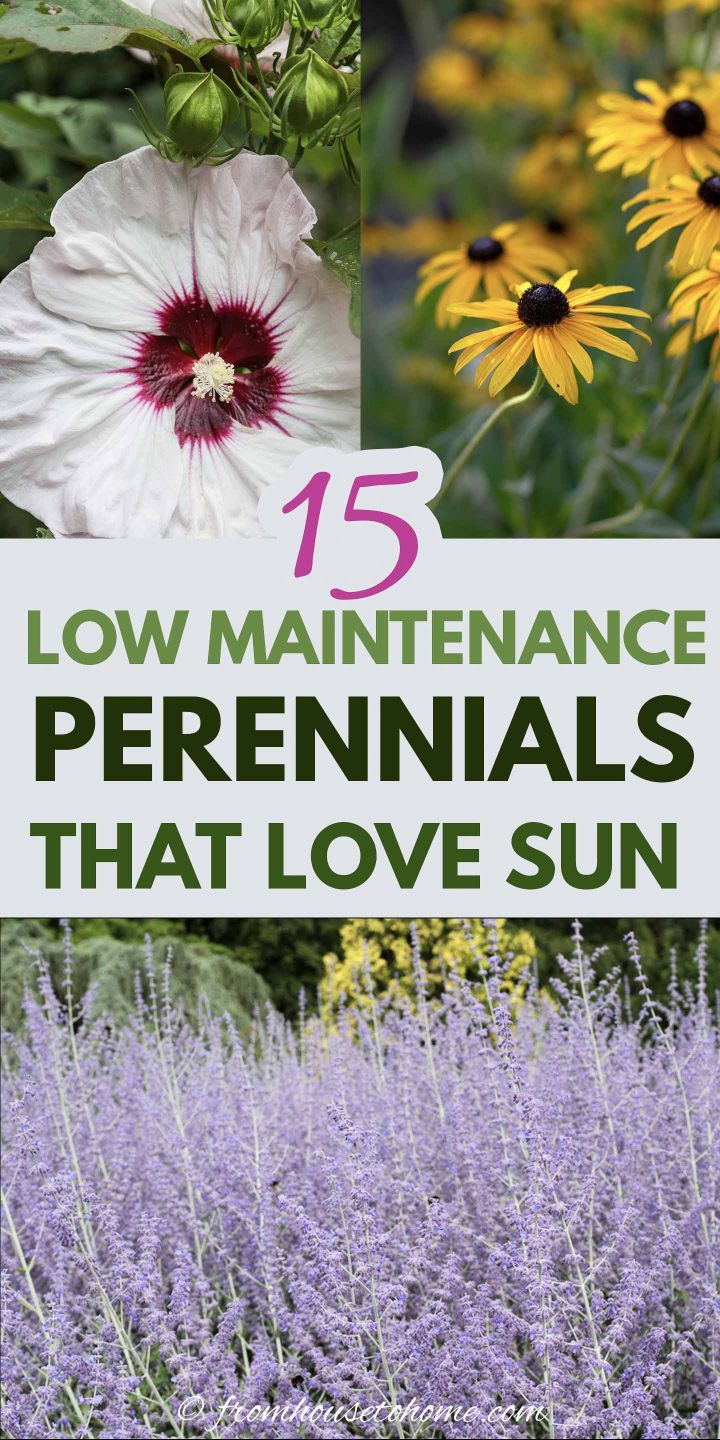
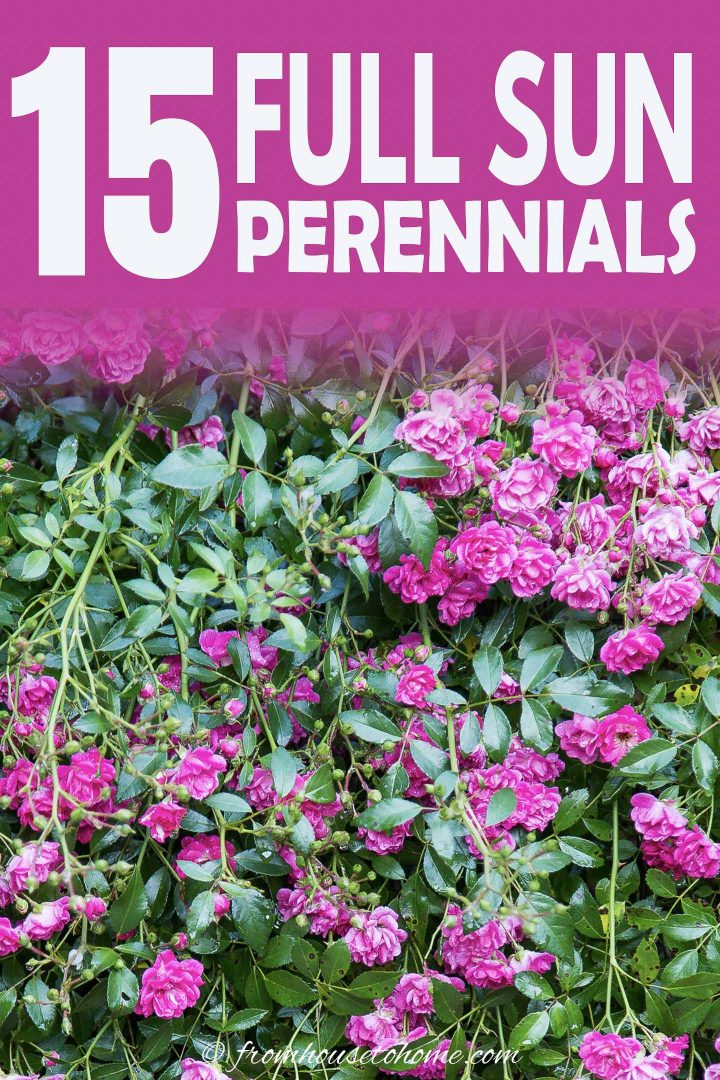
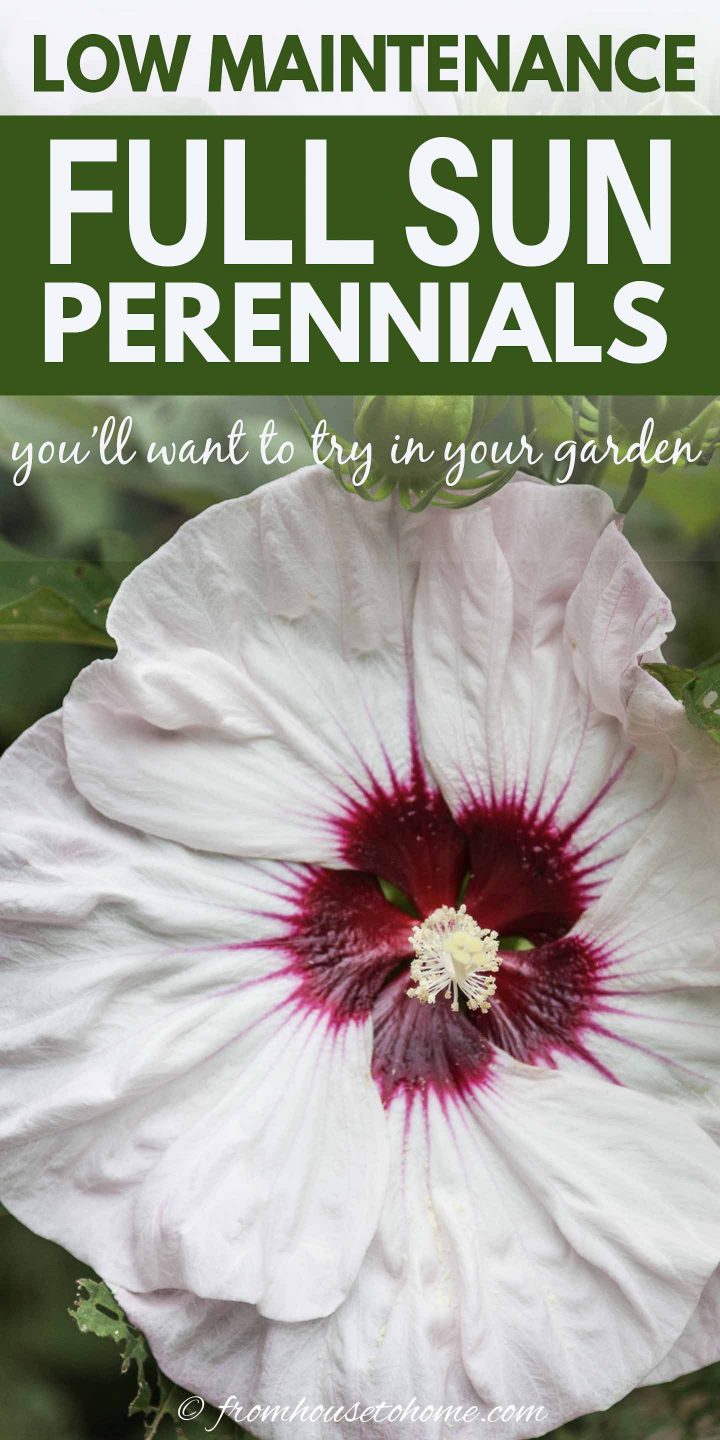
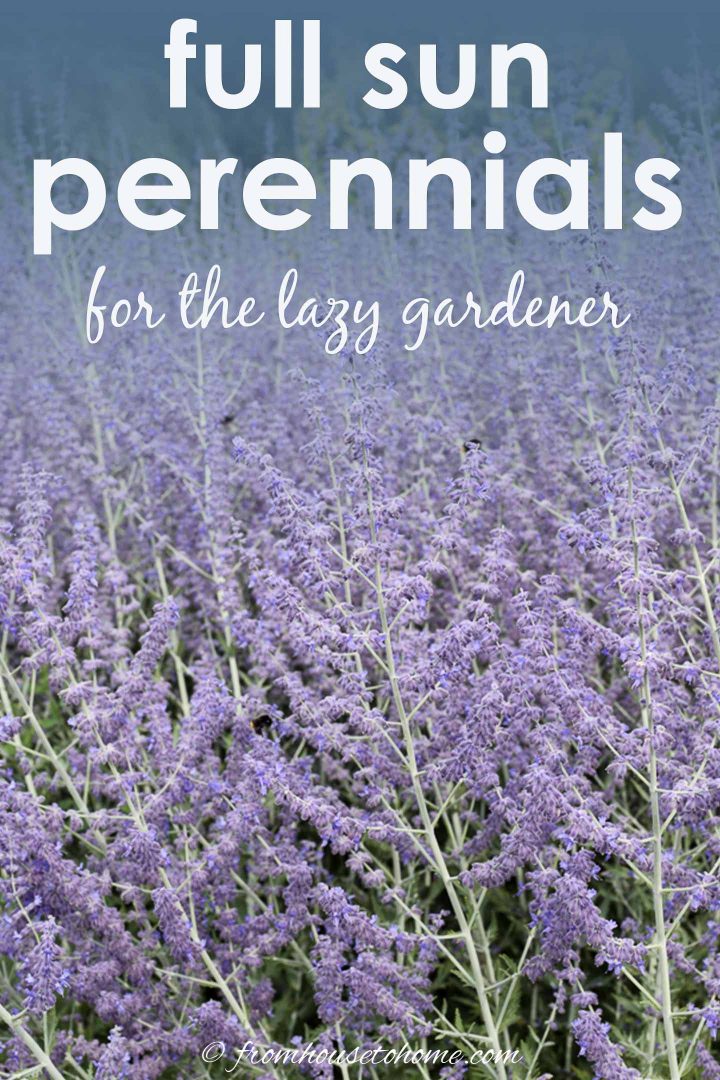
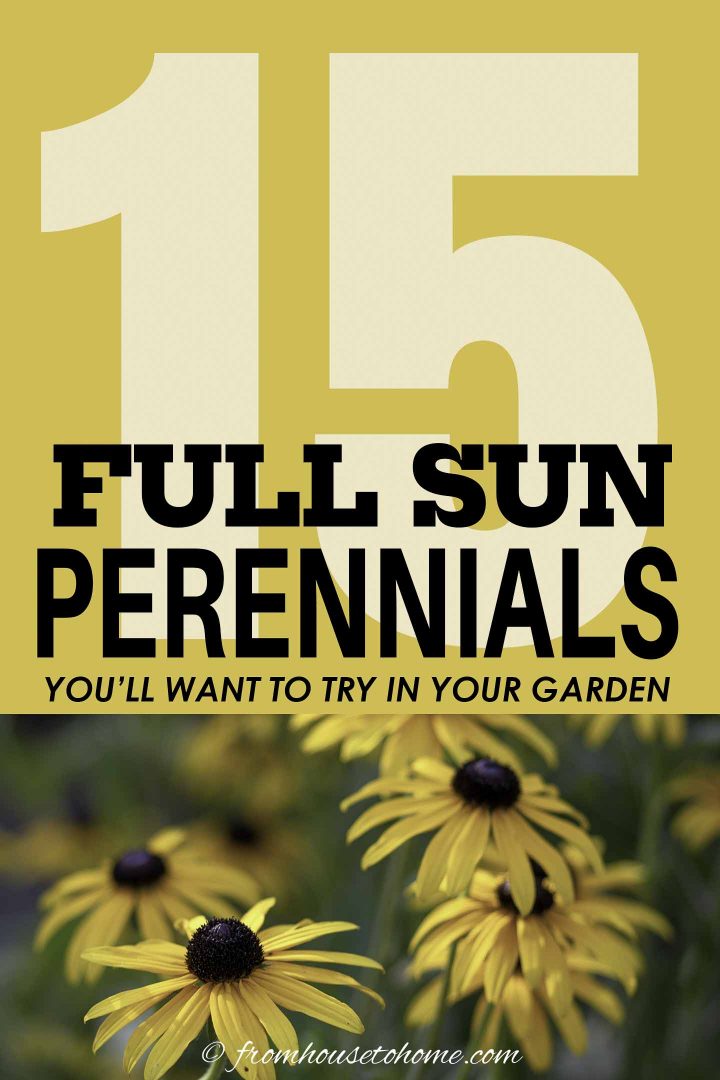
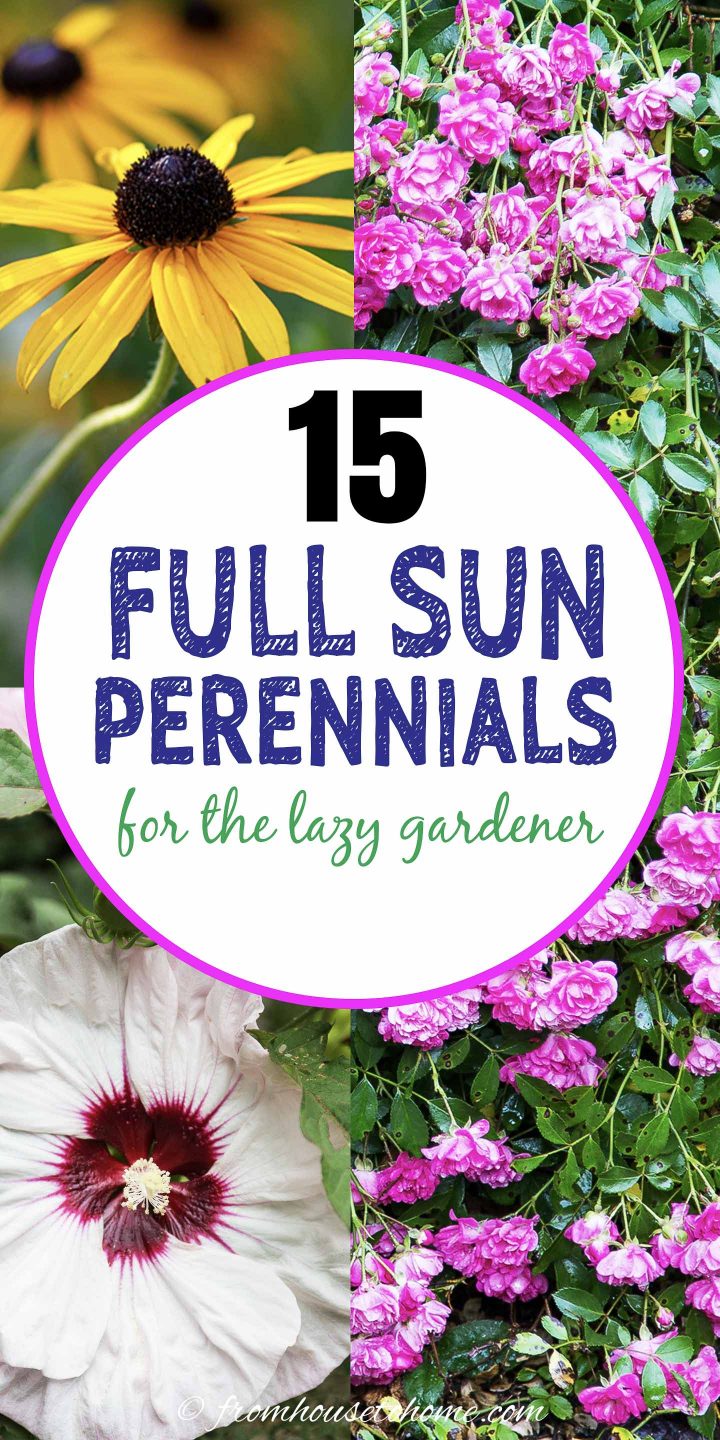
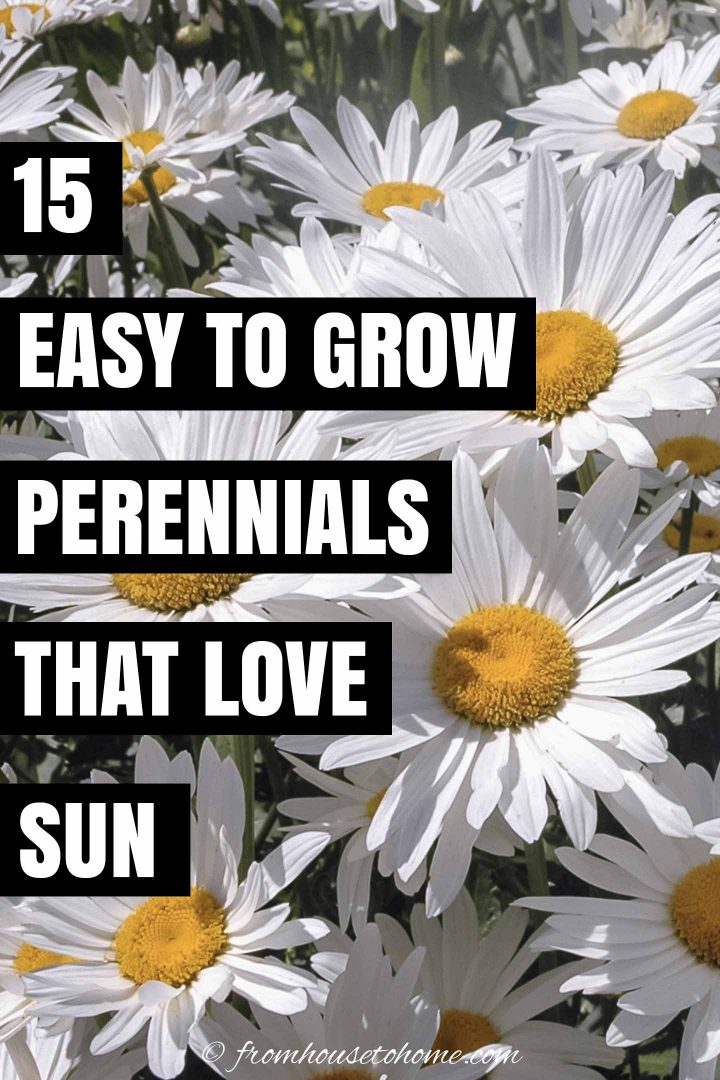
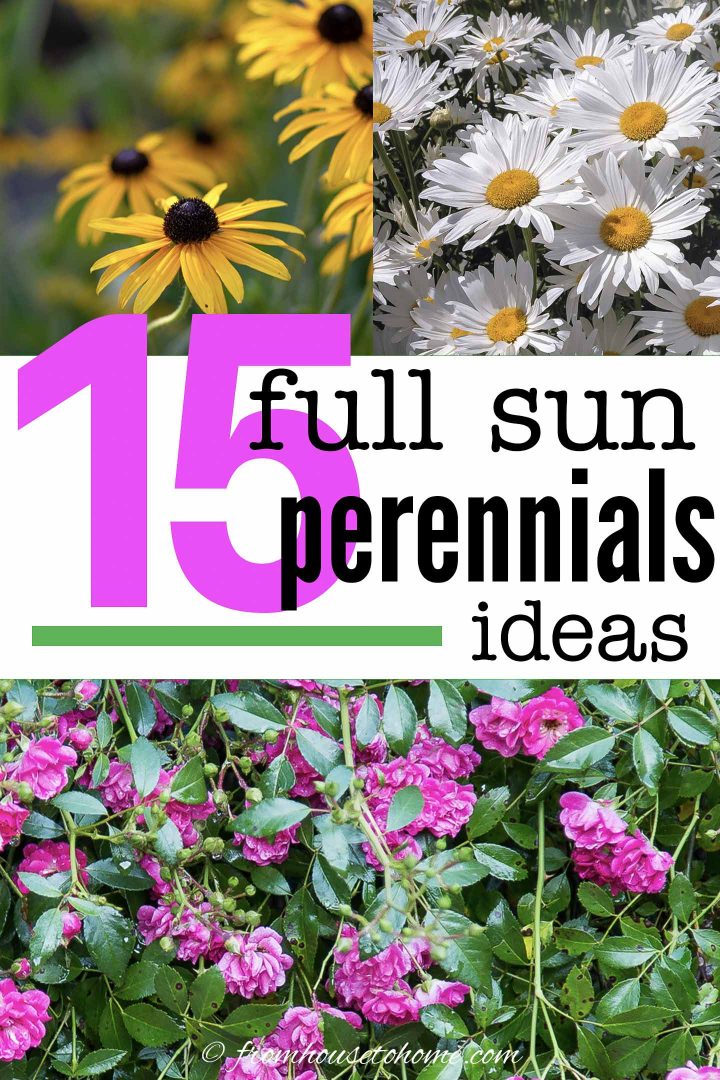
Turtle head is a beautiful perennial that likes full sun.
Thanks, Diane! I haven’t tried that one…I’ll have to look into it 🙂
Blanket flower, aster, black eyed Susan, daisy
Thanks for the suggestions, Kerri! You’re right…all of those flowers are great for full sun 🙂
Butterfly bush and bearded irises have performed very well for me
Thanks, Sherri! I’ve had good luck with butterfly bush, too…but haven’t tried bearded irises. I’ll have to find a spot for them 🙂
Upright stonecrop sedum is a wonderful low maintenance plant. The bees love it and the deer leave it alone. My favorite variety is Autumn Fire. I leave the plants intact over the winter to provide winter interest. Clip the stalks at the base in the spring to make way for the new growth. That’s it!
Thanks, Sandy! That’s a great suggestion! I have one of those in my garden, too, and didn’t think to include it on the list 🙂
The wax begonias grew in full sun for me last year to record heights an fullness. Very strange considering it’s a partial shade plant. Have had difficulty growing in that area because of the full sun. So I’ll go for the for sure thing this year BEGONIAS who knew.
Thanks, Chas! I would not have thought to try begonias in full sun. I’ll have to plant a few this year and see how they do 🙂
I am interested in full sun phoenix az area. It is very dry and summer is triple digits temp
Hi Lillian…I think Coneflower (Echinacea), Salvia and Daylilies should all do well in your dry heat…but I haven’t lived in that area of the country so I don’t have any personal experience with what grows well in Phoenix. I found this Plants List from an Arizona landscaper that has a lot more options you might want to try.
what is a good year round perennial for wet in the summer but sunny weather all year to put into large pots?
Hi Mary…That’s a tough one 🙂 I’m not sure what zone you are in, but here’s a few possibilities: If you’re in zones 9 or 10, Garvinea Gerbera daisies and Pentas are long-blooming and fairly low maintenance. Romeo Cleyera doesn’t bloom but it’s evergreen and has really pretty variegated leaves (Zones 7 – 10). Ornamental grasses are another option for many areas. Dwarf versions of blue spruce do pretty well in pots in cooler zones. As do Arctic Fire and Arctic Sun dogwoods…they are not evergreen but their stems are really brightly colored red or yellow so they look good even in the winter. Hopefully that helps!
Golden oregano is a great ground cover for a hot area. It goes green in winter but becomes a lovely warm yellow in summer.
Californian poppies are one of my favourites too, here in Western Australia.
I like that you mention seasons rather than months in your comments. We in the southern hemisphere have similar climate conditions but everything happens in different months.
I wish more gardening enthusiasts in the northern hemisphere would follow your lead and remember that we also love to garden down here.
Thanks for an interesting site.
Hi Marie…thanks for the plant suggestions! I’ll have to see if I can find some golden oregano…it could be useful in some parts of my yard!
Having lived (and gardened) in both Canada and the southern U.S., I find months don’t apply very well even in the same continent. In my South Carolina garden, the daffodils come up in February…in Toronto, everything is still covered in snow at that time, so I try to use seasons. I’m happy to hear you find it helpful 🙂
I live in the Ozarks in a 2 bedroom apartment. I love flowers/gardening but have a small yard. I have roses (3 bushes) 2 peonies 1 hydrangea and 2 lilac bushes. I have 5 pots on plantstands and 4 hanging planters all in full sun. Will the flowers in this post grow as well in pots as they would in the ground? Also. I have 6 large round (about 36 inches diameter) pots I have tried (unsuccessfully) to start in 2 of the pots tiger lilies tulips and irises. Is there a special type of buld or soil I need to use? I am 70years old divorced and on a fixed income. I have questions too about why some of my other plants won’t bloom. But that may wait for another day. Thank you so much.
Hi Jeannie…Many of these flowers will do fine in pots. I have grown the Creeping Phlox, Catmint, Coneflower and Salvia in containers without any problems. I’m not sure how the roses and Rose of Sharon would do, but I think all of the others should be fine. For large pots like yours, I usually mix half potting soil and half garden soil. The potting soil helps to hold the moisture, and the garden soil helps to keep more of the nutrients in. The only other thing about pots is that I usually fertilize them more than I would plants in the ground, either with Miracle Gro fertilizer that you mix with water or Osmocote fertilizer pellets that you just sprinkle on the soil. (Neither is very expensive). Hope that helps!
Thank you so much for your prompt advice. I can’t wait for soring!! I am NOT a winter person
Hi Jeannie, I’m in LA (lower Alabama)lol and one of my best ground covers is Lantana. I live out in the country so I have large flower beds that often become snacks and nests for wild animals. I don’t even know what kind of animals are nestled in at night but some are brave enough to be right at our front door. The Lantana doesn’t break easily and they don’t eat it. It covers a large area, and it comes back every year.
Thanks for the suggestion, Ginny! I haven’t tried Lantana, but it sounds like a good low maintenance option.
I have enjoyed Shasta Daisy in a full sun flower bed that is around a tree. Doesn’t seem to take much water other than what it gets from the sprinklers that water the grass. If I dead head it, it just keeps blooming.
Thanks, Janet! Shasta daisies are great low maintenance plants!
Lantana, Sunimpatiens, Scabiosa, Petunias, Bellflowers Coreopsis, Daises of all kinds
Thanks for the additions to the list, Maria!
Dianthus. All varieties.
Good suggestion, Cheryl! Thanks!
Help!!! Just moved into a new home, completely empty burm out front of my house. It has black mulch on it already and faces the south. Will any of these listed work in the Lincoln Nebraska climate?
Hi Donna…it sounds like you have the perfect spot for sun-loving plants. Since Lincoln Nebraska is in gardening zone 5b, you should be able to grow all of the ones on this list 🙂
Where could I find a pre-planned garden with instruction for full sun, front of home landscaping? I’m a total newbie.
Hi Adrienne…you can find a bunch of plans on Better Homes & Gardens website (here). Hopefully, they have something you like 🙂
I grow Russian Sage in my dry garden along with some milkweed for the swallow tail butterflies. The bees love the sage and it is still blooming until a really hard frost. This dry garden isn’t water except maybe if the urge hits me.
Thanks, Susan! Russian sage is a great low maintenance perennial 🙂
What zones will the ornamental grasses you showed grow in? I have the hardest time with them in my zone 8.
Hi Carran…Pink Muhly grass should be fine in zone 8. I live in upstate SC where summers are zone 8, winters are zone 7 and I don’t have any problems with it. I think the trick with grasses is not to fuss over them too much. I don’t fertilize or anything and they come back reliably every year.
Just an fyi Kniphofia is not a zone 4 plant. I live in Winnipeg Canada and I live in a zone 3/4 and even have great luck with zone 5 plants surviving with alot of coverage before winter and that is one plant that never survives the winters here. And a fact that I believe every gardener should be aware of is that because plants do not give off any body heat they do not experience any form of windchill!! So whatever your temp is actually sitting at, is what your plants are experiencing. Which where I live, with our horribly cold winters, is a welcome bonus and relief. As well, 1 day of really cold weather in winter, if you have properly covered your garden, is NOT enough to kill your plants that may require a BIT less cold then you may get. So if your plant says that it only is good down to -30°c and you get a day of -40°c without the windchill (and yes it actually gets that cold, here quite regularly in winter), your plant with good coverage should more then likely survive no problem. The problem comes in when your average temp that winter is much colder then your plants like. Your best bet at least for the majority of Canada is to cover your garden well in winter (straw bails work fab for covering them and they are reasonably cheap especially on Kijiji) and any shrubs or trees that are 3 yrs of age and under and do not die down to the ground in winter should always be wrapped or in cozy coats till you spring Temps are reliably steady and warm. I usually wait till the risk of frost has long since passed before I unwrap them. They usually have quite alot of bud and leaf growth before they are unwrapped in the spring. This gives them a good head start for the coming season and helps protect the new growth from any damage that may occure from the nights that may still have frost.
Hi Ladybug…thanks for all of your tips! (Both of my parents are from Winnipeg and a lot of my family still lives there so I can attest to the cold temperatures in the winter!) There is actually at least one variety of Kniphofia that is supposed to be hardy to zone 4 (this one: https://www.burpee.com/kniphofia-hirsuta-fire-dance). Since I don’t have direct experience growing it there, I can’t say for sure that’s true but they do advertise it as such. (Although they are probably talking about U.S. Zone 4, which would be equivalent to a Canadian zone 5).